Or try one of the following: 詹姆斯.com, adult swim, Afterdawn, Ajaxian, Andy Budd, Ask a Ninja, AtomEnabled.org, BBC News, BBC Arabic, BBC China, BBC Russia, Brent Simmons, Channel Frederator, CNN, Digg, Diggnation, Flickr, Google News, Google Video, Harvard Law, Hebrew Language, InfoWorld, iTunes, Japanese Language, Korean Language, mir.aculo.us, Movie Trailers, Newspond, Nick Bradbury, OK/Cancel, OS News, Phil Ringnalda, Photoshop Videocast, reddit, Romanian Language, Russian Language, Ryan Parman, Traditional Chinese Language, Technorati, Tim Bray, TUAW, TVgasm, UNEASYsilence, Web 2.0 Show, Windows Vista Blog, XKCD, Yahoo! News, You Tube, Zeldman
Challenging Voice
Make your life Easy and BetterTop AI 3D Model Generators in 2025 for Designers and Engineers 27 Mar 2025, 7:03 am
AI 3D Model Generators are revolutionizing the 3D modeling landscape, making it more accessible and efficient. These AI-powered tools leverage advanced algorithms and machine learning techniques to automate various aspects of the 3D modeling process, from generating initial models to refining details and textures. By automating repetitive tasks, AI 3D model generators free up designers to focus on creative aspects of their work, leading to faster and more innovative designs.
With the help of ai image generator tools, designers can quickly generate a variety of 3D models based on text prompts or sketches, saving time and effort. These tools can also be used to create realistic textures and materials, adding depth and realism to 3D models.
What are 3D Model Generators?
3D model generators are software tools that enable users to create 3D models, often from 2D images or text descriptions. Traditional 3D modeling involves manual modeling techniques using software like Blender or 3ds Max. AI-powered 3D model generators, on the other hand, leverage artificial intelligence algorithms to automate various aspects of the modeling process, making it more accessible and efficient.
What is AI 3D Modeling and Generative Design?
AI 3D modeling is a cutting-edge technology that leverages artificial intelligence to automate and enhance the process of creating 3D models. AI empowers designers to create 3D models more efficiently and creatively by utilizing advanced algorithms and machine learning techniques.
3D Model Generation from 2D Images:
Photogrammetry:
AI can analyze multiple 2D images of an object from different angles to create a 3D model.
Image-to-3D:
AI can convert single 2D images into 3D models, often using techniques like neural networks.
Text-to-3D Model Generation:
Prompt-Based Generation:
Users can provide text descriptions or prompts to generate 3D models of objects or scenes.
Style Transfer:
AI can apply specific styles or artistic techniques to the generated 3D models.
Generative Design:
AI-Driven Exploration:
AI algorithms can explore a vast design space to generate multiple options based on specific constraints and objectives.
Optimization:
AI can optimize designs for factors like weight, strength, and cost-effectiveness.
How AI is Transforming 3D Design?
AI is revolutionizing the 3D design landscape by offering several significant advantages:
Automated Design Generation:
AI algorithms can generate a wide range of 3D models from simple text descriptions or 2D images, significantly reducing the time and effort required for manual modeling.
Enhanced Creativity:
AI can generate innovative and creative ideas by exploring a vast design space and combining different elements unexpectedly.
Improved Design Accuracy:
AI-powered tools can ensure precise and accurate 3D models, minimizing errors and inconsistencies.
Faster Time-to-Market:
By automating many design tasks, AI can accelerate the design process, leading to faster product development and launch.
Cost Reduction:
AI-driven automation can reduce the cost of 3D model creation, making it accessible to businesses and individuals.
Real-time Collaboration:
AI-powered tools can facilitate real-time collaboration between designers, allowing for efficient teamwork and knowledge sharing.
Personalized Design:
AI can tailor designs to individual preferences and requirements, creating highly customized 3D models.
Factors to Consider When Choosing an AI 3D Model Generator
When selecting an AI 3D model generator, it’s essential to consider several factors to ensure it meets your specific needs:
Ease of Use:
User-friendly interface:
The tool should have a simple and intuitive interface, minimizing the learning curve.
Minimal technical expertise:
Users should not require advanced technical skills to operate the tool effectively.
Model Quality:
High-quality output:
The generated 3D models should have accurate geometry, realistic textures, and detailed features.
Customization options:
The tool should allow users to customize the generated models to fit their requirements.
Integration with Other Tools:
Seamless workflow:
The tool should integrate smoothly with design software like 3D modeling, animation, and game development tools.
Compatibility with industry standards:
The generated models should be compatible with industry-standard file formats.
Cost:
Pricing model:
Consider the pricing structure, whether a one-time fee, subscription-based, or usage-based.
Value for money:
Evaluate the features, performance, and support the tool offers and its cost.
AI Capabilities:
Advanced features:
The tool should offer advanced features like text-to-3D generation, style transfer, and real-time editing.
Customization options:
The ability to fine-tune the AI’s output to meet specific requirements.
Advantages of Using AI 3D Model Generators in Digital Design:
AI-powered 3D model generators offer a multitude of benefits for designers and businesses:
Accelerated Design Process:
AI-powered tools can significantly reduce design time by automating repetitive tasks and streamlining workflows.
Enhanced Creativity:
AI algorithms can generate innovative and unique design ideas, inspiring designers to explore new creative possibilities.
Improved Accuracy and Precision:
AI-driven tools can ensure precise geometry, accurate dimensions, and realistic materials, resulting in high-quality 3D models.
Reduced Design Costs:
Automating various design tasks can lower labor costs and reduce the overall cost of 3D model creation.
Accessibility:
AI-powered tools can democratize 3D design, making it accessible to a wider range of users, regardless of their technical expertise.
Real-time Collaboration:
AI-powered tools can enable real-time collaboration between designers, allowing for efficient teamwork and faster iteration.
Data-Driven Design:
AI can analyze large datasets to identify trends, optimize designs, and make data-driven decisions.
AI Tools For 3D Model Generators
Blender
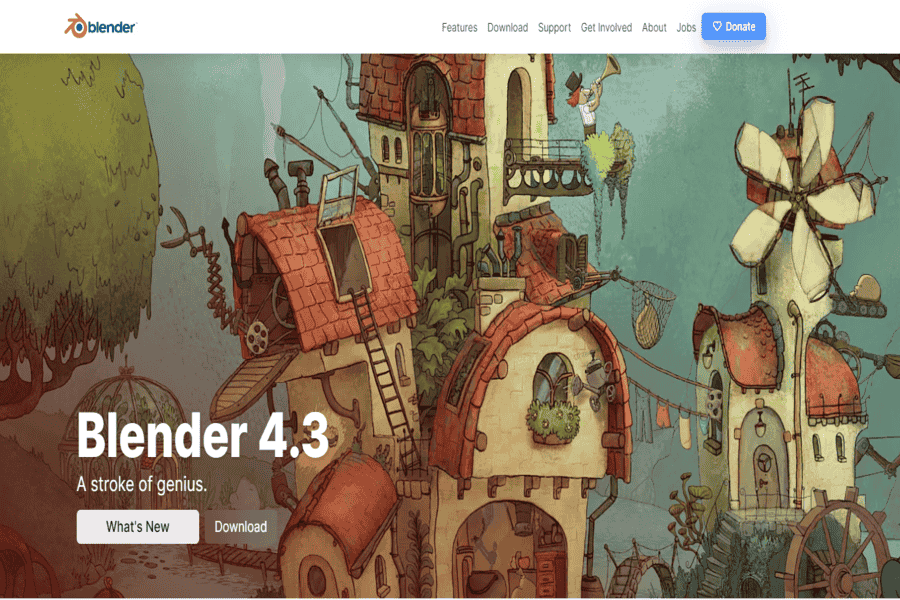
Open-source software for 3D modeling, animation, simulation, and rendering, enhanced with AI plugins.
Pros:
Free to use, extensive customization, robust community support.
Cons:
Steep learning curve for beginners.
Pricing Package:
Free.
Social Media:
- Facebook: Blender
- Instagram: @blenderofficial
- Twitter: Blender
- LinkedIn: Blender
- YouTube: Blender
Contact Information:
- Email ID: info@blender.org
Autodesk Maya

A professional 3D modeling and animation tool with AI-driven features for automating repetitive tasks.
Pros:
Advanced features for professional use, industry standard.
Cons:
Expensive for beginners.
Pricing Package:
$225/month or $1,785/year.
Social Media:
- Facebook: Autodesk Maya
- Instagram: @autodesk
- Twitter: Autodesk Maya
- LinkedIn: Autodesk
- YouTube: Autodesk Maya
Contact Information:
- Contact Number: +1 (855) 301-9562
ZBrush

AI-assisted digital sculpting tool for creating highly detailed 3D models.
Pros:
Excellent for intricate designs and intuitive interface.
Cons:
High initial cost.
Pricing Package:
$39.95/month or $895 perpetual license.
Social Media:
- Facebook: ZBrush
- Instagram: @pixologic
- Twitter: ZBrush
- LinkedIn: ZBrush
- YouTube: ZBrush
Contact Information:
- Email ID: support@pixologic.com
Clara.io

Cloud-based 3D modeling software offering AI features for quick rendering and collaboration.
Pros:
Browser-based, collaborative, free for basic use.
Cons:
Less advanced features compared to desktop software.
Pricing Package:
Free; Premium plans available upon inquiry.
Social Media:
Contact Information:
- Email ID: support@exocortex.com
Meshroom

Open-source 3D reconstruction software that uses AI for photogrammetry-based modeling.
Pros:
Free, ideal for converting images into 3D models.
Cons:
Limited features for sculpting or animation.
Pricing Package:
Free.
Social Media:
- YouTube: Meshroom
Houdini

Procedural 3D modeling software enhanced with AI for simulations and effects.
Pros:
Excellent for simulations and advanced procedural tools.
Cons:
Expensive and complex for new users.
Pricing Package:
$269/year for Indie; $4,495 perpetual license for FX.
Social Media:
- Facebook: SideFX Houdini
- Instagram: @sidefxhoudini
- Twitter: SideFX
- LinkedIn: SideFX
- YouTube: SideFX Houdini
Contact Information:
- Email ID: support@sidefx.com
- Contact Number: +1 (416) 504-9876
NVIDIA Omniverse
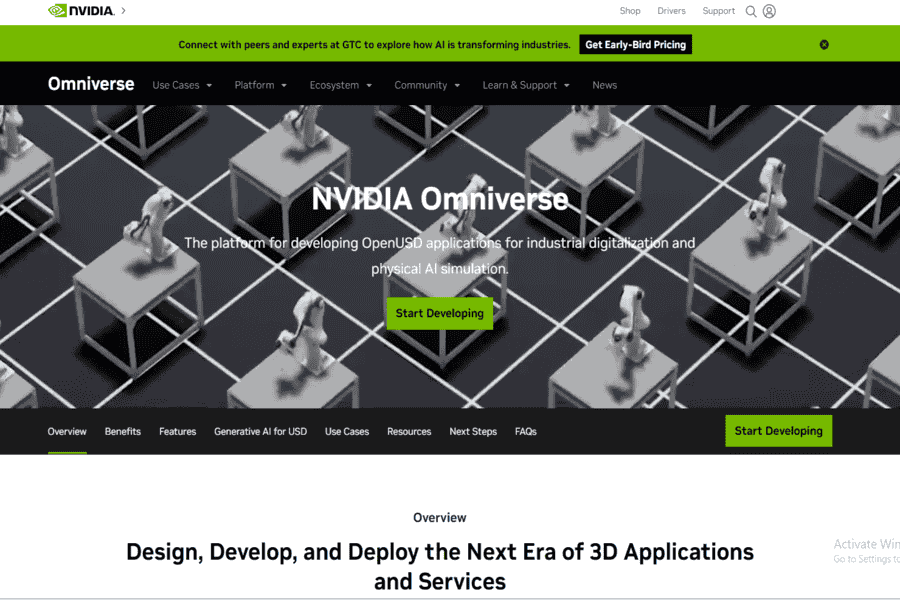
AI-powered collaboration platform for 3D modeling and simulation.
Pros:
Real-time collaboration, high-performance rendering.
Cons:
Requires high-end hardware.
Pricing Package:
Free for individuals; enterprise pricing available.
Social Media:
- Facebook: NVIDIA
- Instagram: @nvidia
- Twitter: NVIDIA Omniverse
- LinkedIn: NVIDIA
- YouTube: NVIDIA Omniverse
Contact Information:
- Email ID: omniverse@nvidia.com
MagicaVoxel

Free, lightweight 3D modeling software specializing in voxel-based modeling.
Pros:
Easy to use, great for voxel art, free.
Cons:
Limited for advanced 3D modeling tasks.
Pricing Package:
Free.
Creo

Professional 3D CAD tool that incorporates AI for simulation-driven design.
Pros:
Advanced engineering tools, AI-driven generative design.
Cons:
Expensive, geared towards professionals.
Pricing Package:
Custom pricing upon inquiry.
Social Media:
Contact Information:
- Email ID: sales@ptc.com
- Contact Number: +1 (781) 370-5000
Daz 3D

AI-powered 3D modeling and animation tool for creating detailed human characters and environments.
Pros:
Excellent character creation tools and free assets are available.
Cons:
In-app purchases are required for premium content.
Pricing Package:
Free with optional in-app purchases.
Social Media:
Contact Information:
- Email ID: support@daz3d.com
SketchUp
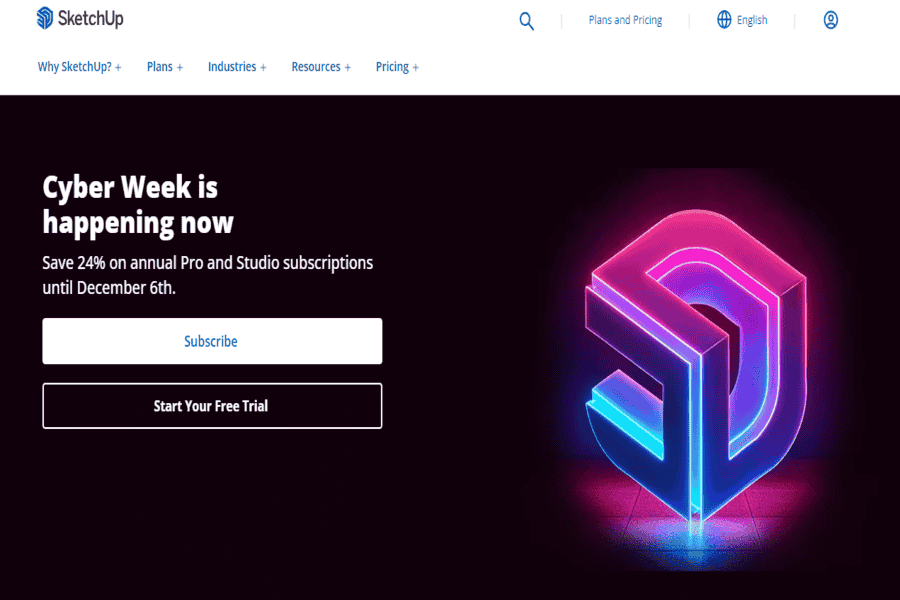
Intuitive 3D modeling tool with AI plugins for architectural, interior, and product design.
Pros:
Easy to learn, extensive library of models and extensions.
Cons:
There are limited rendering features in the free version.
Pricing Package:
Free basic version; Pro starts at $299/year.
Social Media:
- Facebook: SketchUp
- Instagram: @sketchup_official
- Twitter: SketchUp
- LinkedIn: SketchUp
- YouTube: SketchUp
Contact Information:
- Email ID: support@sketchup.com
Gravity Sketch

A VR-based 3D design platform that leverages AI for intuitive 3D sketching and modeling.
Pros:
Immersive VR interface, real-time collaboration.
Cons:
Requires VR hardware.
Pricing Package:
Free for individuals; Business plans available upon inquiry.
Social Media:
- Facebook: Gravity Sketch
- Instagram: @gravitysketch
- Twitter: Gravity Sketch
- LinkedIn: Gravity Sketch
- YouTube: Gravity Sketch
Contact Information:
- Email ID: hello@gravitysketch.com
Onshape
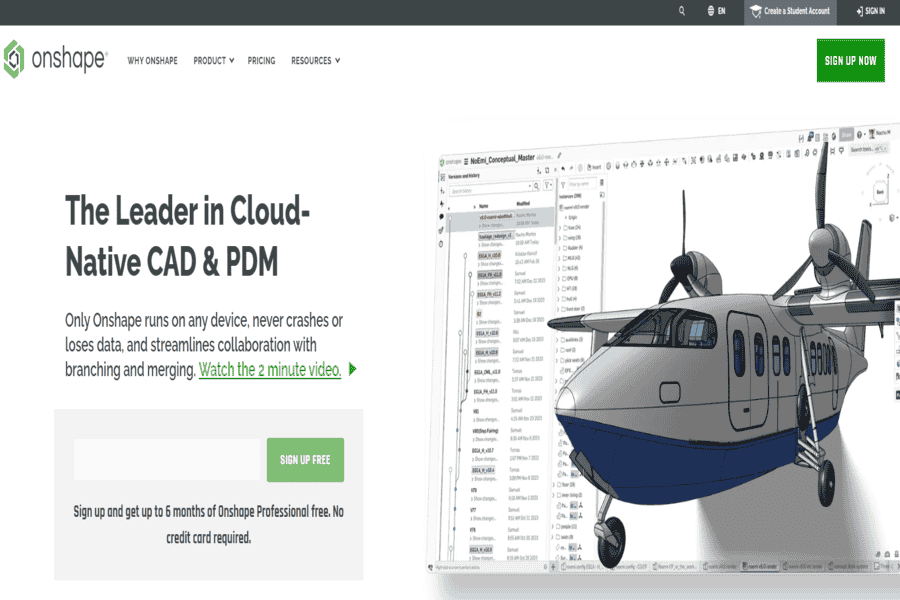
Cloud-based 3D CAD platform with AI tools for collaborative and parametric modeling.
Pros:
Real-time collaboration and cloud-based flexibility.
Cons:
Requires a stable internet connection.
Pricing Package:
Free for educators; Professional plans start at $1,500/year.
Social Media:
Contact Information:
- Email ID: sales@onshape.com
- Contact Number: +1 (844) 667-4273
Tinkercad
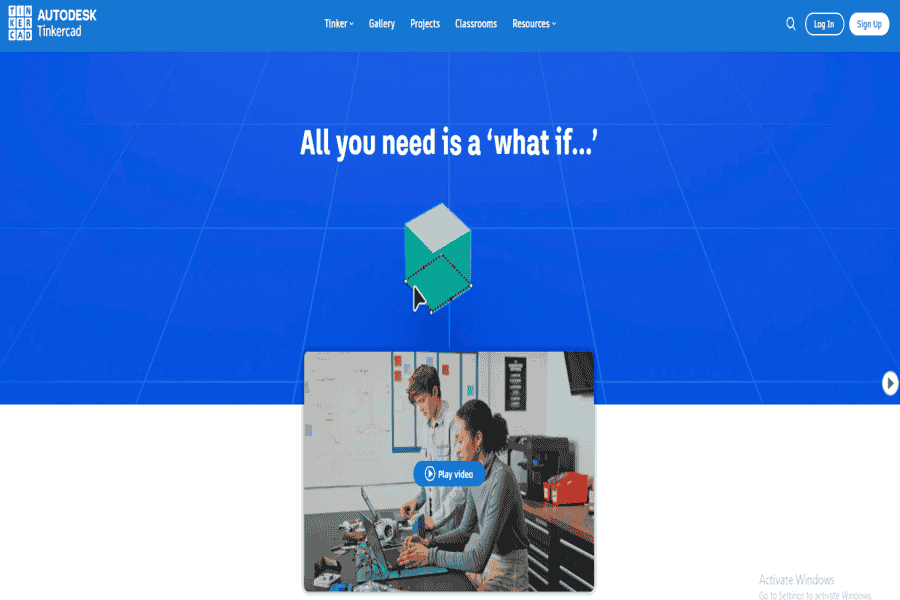
Beginner-friendly 3D modeling tool with AI-guided features for quick learning and prototyping.
Pros:
It is free, easy to use, and suitable for education.
Cons:
Limited features for advanced modeling.
Pricing Package:
Free.
Social Media:
- Facebook: Tinkercad
- Instagram: @tinkercad
- Twitter: Tinkercad
- LinkedIn: Tinkercad
- YouTube: Tinkercad
Contact Information:
- Email ID: support@tinkercad.com
Meshmixer
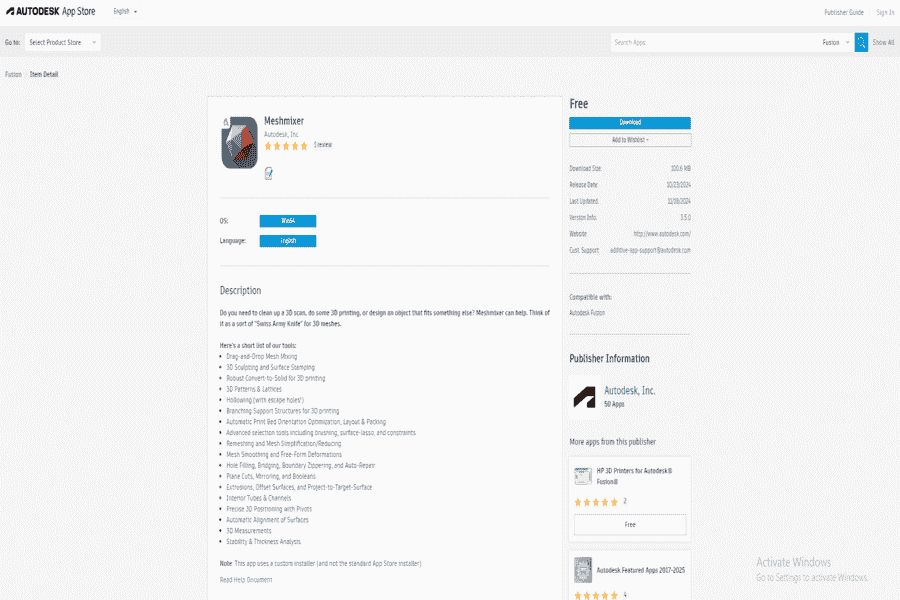
An AI-powered 3D modeling tool for editing and optimizing meshes, ideal for 3D printing.
Pros:
It is free and great for repairing and editing 3D models.
Cons:
Limited for full-scale modeling.
Pricing Package:
Free.
Contact Information:
- Email ID: support@autodesk.com
Future Trends of 3D Model Generators
The future of 3D model generation is promising, with several exciting trends on the horizon:
Real-time 3D Model Generation:
AI will enable real-time generation of 3D models from text or image input.
More Realistic and Detailed Models:
AI models will generate increasingly realistic and detailed 3D models.
Integration with Other AI Technologies:
AI-powered 3D model generators will integrate with other AI technologies, such as natural language processing and computer vision.
Ethical AI and Responsible Use:
The development and use of AI 3D model generators will be guided by ethical principles to ensure responsible and beneficial applications.
Conclusion
AI-powered 3D model generators are rapidly transforming the landscape of 3D design. By automating tedious tasks and generating creative designs, these tools empower designers to work more efficiently and effectively. As AI technology evolves, we can anticipate even more sophisticated and innovative 3D modeling solutions that will revolutionize various industries.
Top AI-Powered Process Optimization Tools in 2025 27 Mar 2025, 7:02 am
In today’s rapidly evolving digital landscape, businesses constantly seek innovative ways to streamline operations, reduce costs, and enhance customer experiences. AI-powered process optimization emerges as a powerful tool that harnesses the potential of artificial intelligence to revolutionize how organizations work. By leveraging advanced algorithms and data-driven insights, AI enables businesses to identify inefficiencies, make data-driven decisions, and automate routine tasks. By integrating AI robotics tools into their workflow, businesses can optimize processes by automating physical tasks, improving efficiency, and reducing labor costs.
What is AI-Powered Process Optimization?
AI-powered process optimization involves applying artificial intelligence techniques to analyze and improve business processes. It encompasses various technologies, including machine learning, natural language processing, and robotic process automation. By automating tasks, predicting future trends, and optimizing resource allocation, AI empowers organizations to achieve significant operational efficiencies and competitive advantages.
The Need for AI in Process Optimization
Traditional process optimization methods often rely on manual analysis, which can be time-consuming, error-prone, and limited scope. AI offers a transformative solution by automating data-driven insights and enabling organizations to:
Identify hidden patterns:
AI algorithms can uncover complex patterns and correlations within vast datasets that may not be apparent to human analysts.
Predict future trends:
By analyzing historical and current data, AI can forecast future outcomes, enabling organizations to proactively plan and respond to changes.
Optimize decision-making:
AI-powered tools provide data-driven recommendations, helping organizations make informed decisions that drive business growth.
Automate routine tasks:
AI can automate repetitive tasks, freeing human resources to focus on higher-value activities.
Benefits of AI-Powered Process Optimization Tools
The implementation of AI-powered process optimization tools can yield numerous benefits:
Increased efficiency:
AI can significantly improve operational efficiency by automating tasks and streamlining workflows.
Enhanced decision-making:
AI-driven insights empower organizations to make informed decisions based on data-backed evidence.
Improved customer experience:
AI can personalize customer interactions, leading to higher satisfaction and loyalty.
Cost reduction:
By optimizing resource allocation and reducing errors, AI can help organizations save costs.
Competitive advantage:
AI-powered innovations can differentiate businesses from competitors and drive market leadership.
Core Components of AI-Powered Process Optimization Tools
To effectively implement AI-powered process optimization, organizations must leverage a combination of key components:
Data Collection and Integration
Data sources:
We identify and access relevant data sources, including internal systems, external databases, and real-time sensors.
Data quality:
It ensures data accuracy, completeness, and consistency to maintain the reliability of AI models.
Data integration:
Combining data from various sources into a unified format for analysis.
Data Cleaning and Preprocessing
Data cleaning:
Removing errors, inconsistencies, and outliers to improve data quality.
Data preprocessing:
We transform data into a suitable format for machine learning algorithms, including normalization, feature engineering, and handling missing values.
Machine Learning Algorithms
Supervised learning:
Training models on labeled data to make predictions or classifications (e.g., regression, classification).
Unsupervised learning:
We are discovering patterns and structures within unlabeled data (e.g., clustering, dimensionality reduction).
Reinforcement learning:
Training agents to learn optimal behavior through trial and error and rewards.
Deep learning:
Leveraging neural networks to model complex relationships within data.
Predictive Analytics
Forecasting:
I am predicting future trends and outcomes based on historical data and current patterns.
Anomaly detection:
Identifying unusual patterns or deviations from normal behavior.
Risk assessment:
Evaluating potential risks and their impact on business operations.
Prescriptive Analytics
Optimization:
Finding the optimal solution to a complex problem, considering multiple factors and constraints.
Simulation:
Modeling real-world scenarios to test different strategies and their potential outcomes.
Recommendation systems:
We are providing personalized recommendations based on user preferences and behavior.
Visualization and Reporting
Data visualization:
I am creating visual representations of data to facilitate understanding and decision-making.
Dashboards:
Develop interactive dashboards to monitor key performance indicators and track progress.
Reporting:
I am generating comprehensive reports to communicate insights and recommendations to stakeholders.
Top AI Process Optimization Tools
UiPath
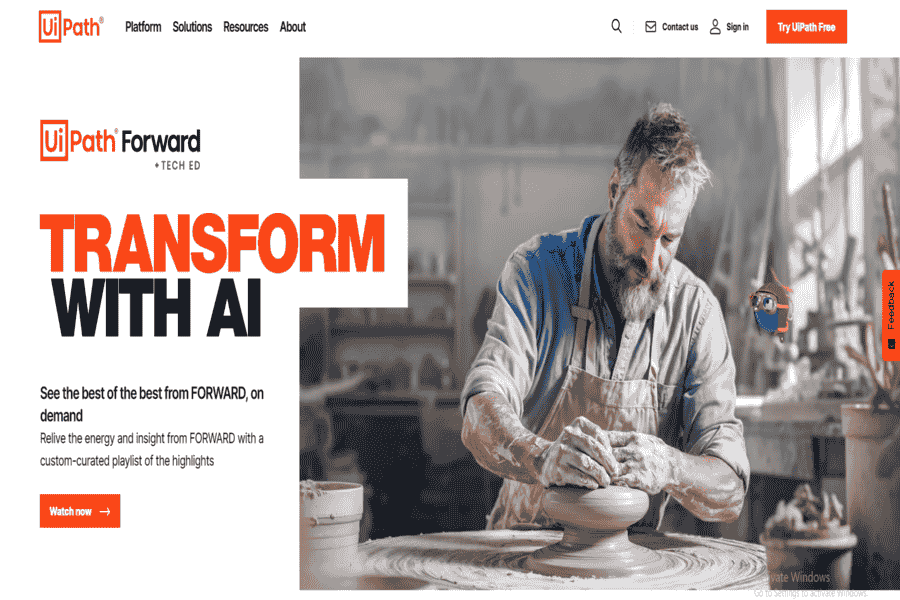
AI-powered robotic process automation (RPA) platform that automates repetitive business processes for greater efficiency.
Pros:
- Scalable and customizable.
- Strong AI and machine learning integration.
Cons:
- Requires significant upfront setup.
- It can be complex for smaller businesses.
Pricing Package:
Custom pricing is available.
Social Media:
- Facebook: UiPath Facebook
- Instagram: UiPath Instagram
- Twitter: UiPath Twitter
- LinkedIn: UiPath LinkedIn
- YouTube: UiPath YouTube
Contact Information:
- Mail: info@uipath.com
- Contact Number: +1 844-432-3457
Automation Anywhere
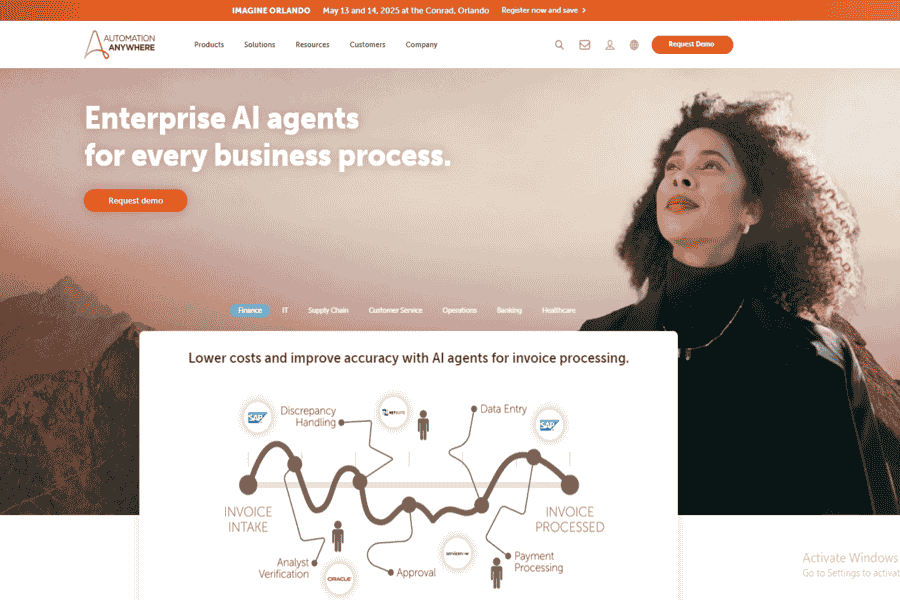
AI-powered RPA platform designed to streamline business processes with automation and artificial intelligence.
Pros:
- Easy-to-use interface.
- Scalable for businesses of all sizes.
Cons:
- Limited by the complexity of tasks.
- Higher cost for small businesses.
Pricing Package:
Starts at $750/month.
Social Media:
- Facebook: Automation Anywhere Facebook
- Instagram: Automation Anywhere Instagram
- Twitter: Automation Anywhere Twitter
- LinkedIn: Automation Anywhere LinkedIn
- YouTube: Automation Anywhere YouTube
Contact Information:
- Mail: sales@automationanywhere.com
- Contact Number: +1 408-824-9950
Blue Prism
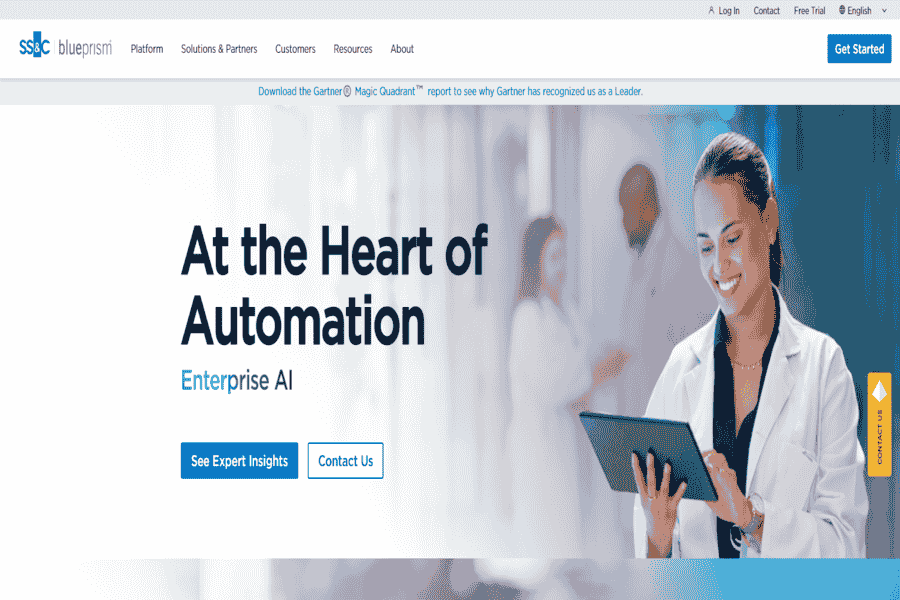
An AI-powered RPA tool that helps businesses automate complex, data-intensive processes for better productivity.
Pros:
- Strong security and scalability.
- Integrates with existing systems easily.
Cons:
- Requires in-house expertise to implement.
- Complex pricing structure.
Pricing Package:
Custom pricing is available.
Social Media:
- Facebook: Blue Prism Facebook
- Twitter: Blue Prism Twitter
- LinkedIn: Blue Prism LinkedIn
- YouTube: Blue Prism YouTube
Contact Information:
- Mail: info@blueprism.com
- Contact Number: +44 1223 372000
WorkFusion
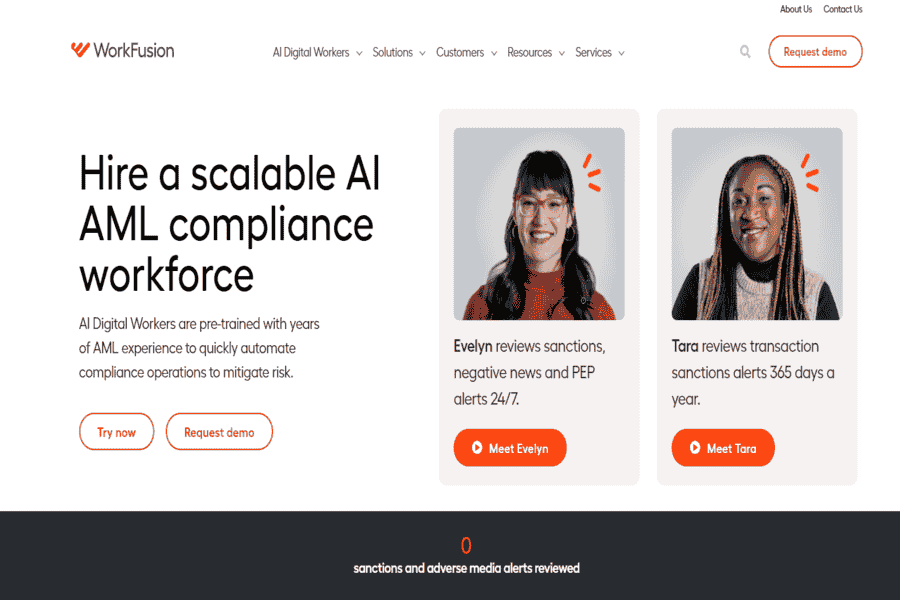
A platform combining AI and RPA to streamline workflows, improving efficiency and reducing operational costs.
Pros:
- AI and machine learning for process insights.
- Comprehensive automation with RPA and cognitive bots.
Cons:
- Initial implementation can be resource-heavy.
- Premium pricing.
Pricing Package:
Custom pricing is available.
Social Media:
- Facebook: WorkFusion Facebook
- Twitter: WorkFusion Twitter
- LinkedIn: WorkFusion LinkedIn
- YouTube: WorkFusion YouTube
Contact Information:
- Mail: info@workfusion.com
- Contact Number: +1 866-817-0417
ABBYY FlexiCapture
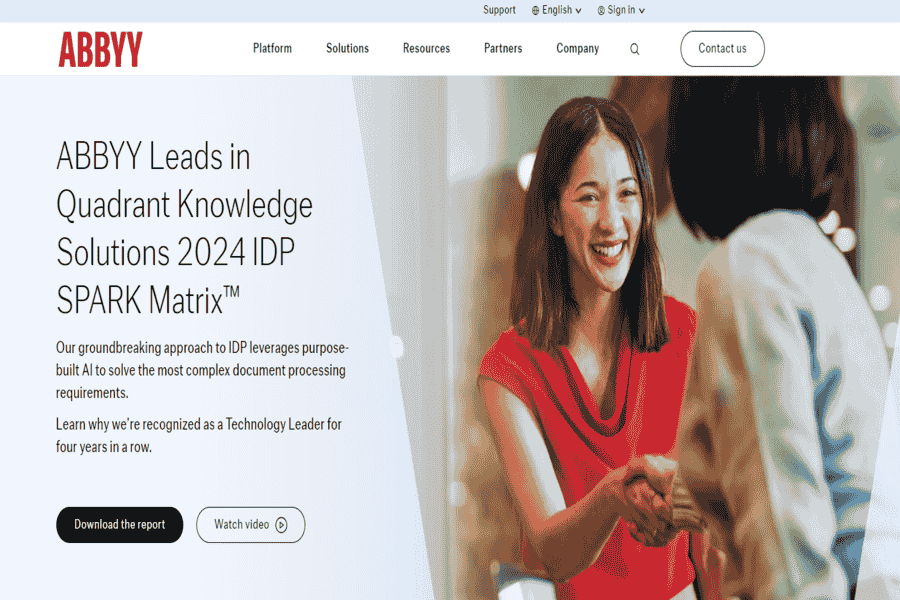
Intelligent document processing tool that uses AI to automate data extraction, classification, and analysis from unstructured content.
Pros:
- Robust data capture and extraction.
- High accuracy and customizable workflows.
Cons:
- Requires training for optimal use.
- It can be expensive for small-scale businesses.
Pricing Package:
Custom pricing is available.
Social Media:
- Facebook: ABBYY Facebook
- Twitter: ABBYY Twitter
- LinkedIn: ABBYY LinkedIn
- YouTube: ABBYY YouTube
Contact Information:
- Mail: sales@abbyy.com
- Contact Number: +1 650-587-2300
Kofax
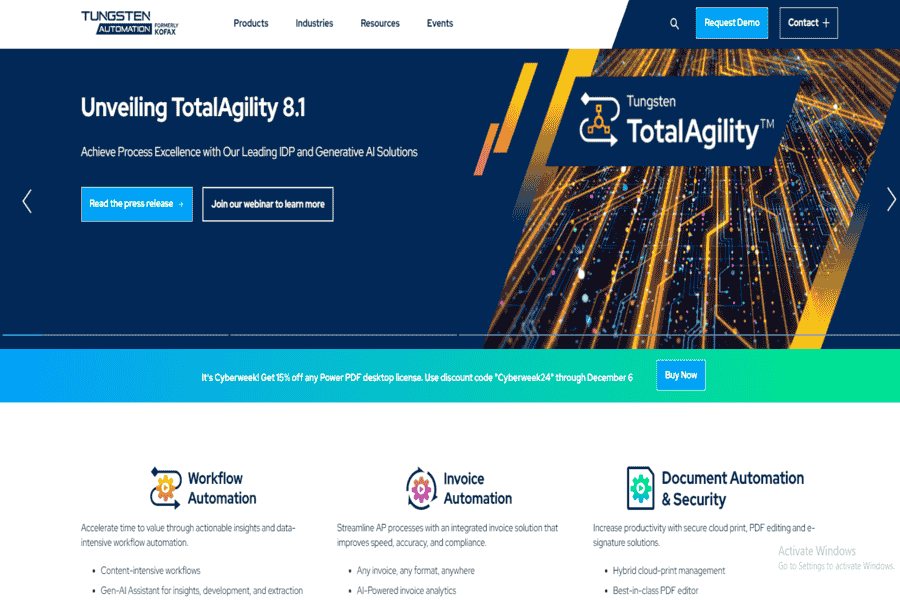
An AI-powered platform for automating document processing and workflow optimization in businesses.
Pros:
- Automated invoice processing and data extraction.
- Customizable workflow solutions.
Cons:
- Complex configuration process.
- It can be not easy to integrate with older systems.
Pricing Package:
Custom pricing is available.
Social Media:
- Facebook: Kofax Facebook
- Twitter: Kofax Twitter
- LinkedIn: Kofax LinkedIn
- YouTube: Kofax YouTube
Contact Information:
- Mail: info@kofax.com
- Contact Number: +1 877-856-3281
AutomationEdge
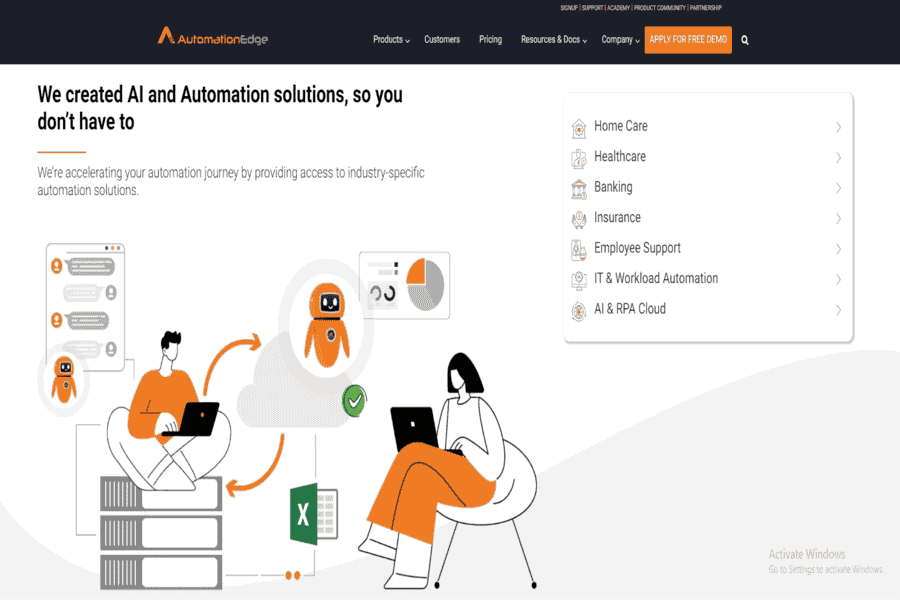
AI-driven IT process automation platform that enhances service delivery and incident management.
Pros:
- Seamless integration with IT infrastructure.
- Strong focus on cybersecurity automation.
Cons:
- Primarily geared towards IT operations.
- Limited functionality for non-IT processes.
Pricing Package:
Custom pricing is available.
Social Media:
- Facebook: AutomationEdge Facebook
- Twitter: AutomationEdge Twitter
- LinkedIn: AutomationEdge LinkedIn
- YouTube: AutomationEdge YouTube
Contact Information:
- Mail: sales@automationedge.com
- Contact Number: +1 877-356-9767
HyperScience
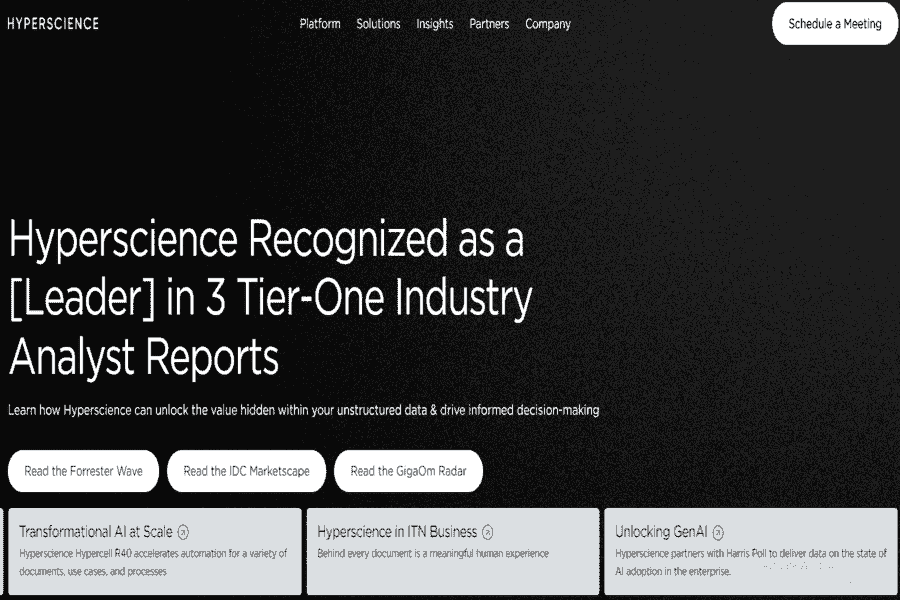
AI-powered automation platform for processing documents, data entry, and improving business workflows.
Pros:
- Strong focus on intelligent data capture.
- Effective for unstructured document processing.
Cons:
- Primarily focused on document processing.
- It can be pricey for smaller businesses.
Pricing Package:
Custom pricing is available.
Social Media:
- Facebook: HyperScience Facebook
- Twitter: HyperScience Twitter
- LinkedIn: HyperScience LinkedIn
Contact Information:
- Mail: info@hyperscience.com
- Contact Number: +1 646-586-5250
Celonis
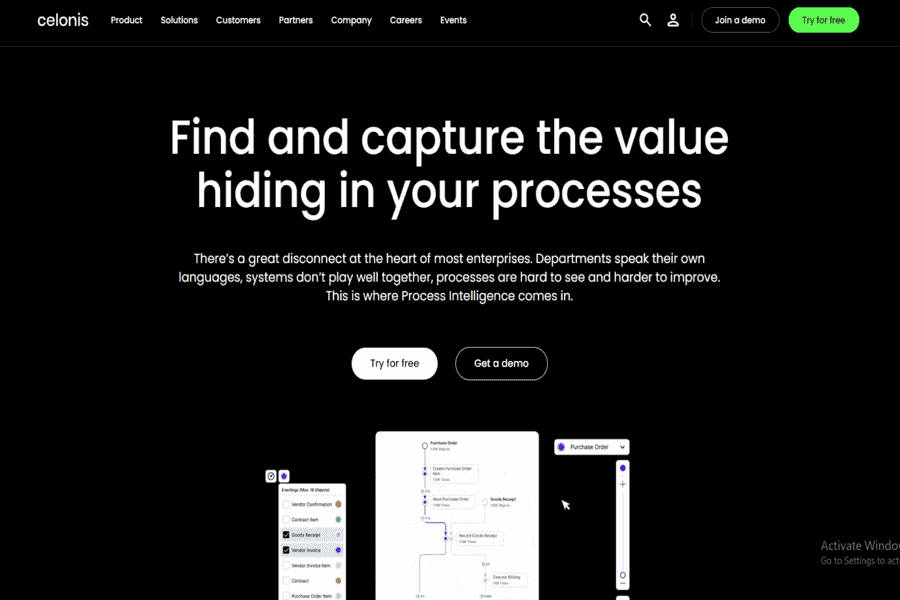
AI-powered process mining tool that provides in-depth insights into business workflows and identifies optimization opportunities.
Pros:
- Powerful process analysis and mining tools.
- It helps identify inefficiencies and bottlenecks.
Cons:
- Requires large data sets for optimal use.
- Steep learning curve.
Pricing Package:
Custom pricing is available.
Social Media:
- Facebook: Celonis Facebook
- Twitter: Celonis Twitter
- LinkedIn: Celonis LinkedIn
- YouTube: Celonis YouTube
Contact Information:
- Mail: info@celonis.com
- Contact Number: +49 89 2444 3900
Pega
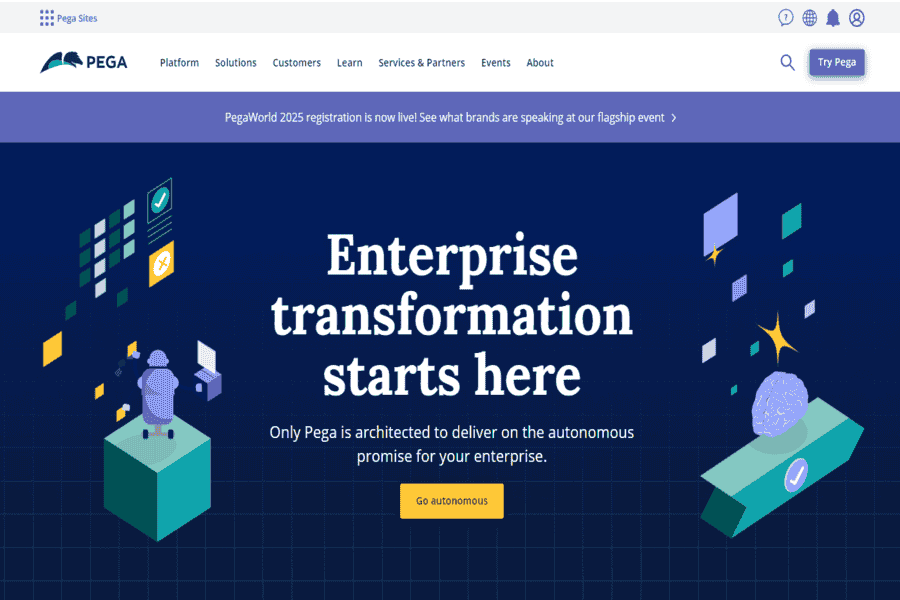
AI-driven software platform designed to optimize business processes with intelligent automation and case management.
Pros:
- Robust decisions and AI capabilities.
- Easily scalable across departments.
Cons:
- The steep learning curve for new users.
- High cost for small to medium businesses.
Pricing Package:
Custom pricing is available.
Social Media:
- Facebook: Pega Facebook
- Twitter: Pega Twitter
- LinkedIn: Pega LinkedIn
- YouTube: Pega YouTube
Contact Information:
- Mail: info@pega.com
- Contact Number: +1 617-866-6000
Zoho Creator

AI-powered app builder for creating custom business process automation solutions, enabling rapid workflow optimization.
Pros:
- User-friendly, no-code platform.
- Flexible integration options.
Cons:
- Limited to smaller-scale automation.
- Limited advanced AI features for complex processes.
Pricing Package:
Starts at $10/user/month.
Social Media:
- Facebook: Zoho Creator Facebook
- Instagram: Zoho Creator Instagram
- Twitter: Zoho Creator Twitter
- LinkedIn: Zoho Creator LinkedIn
- YouTube: Zoho Creator YouTube
Contact Information:
- Mail: support@zoho.com
- Contact Number: +1 877-764-9553
TIBCO
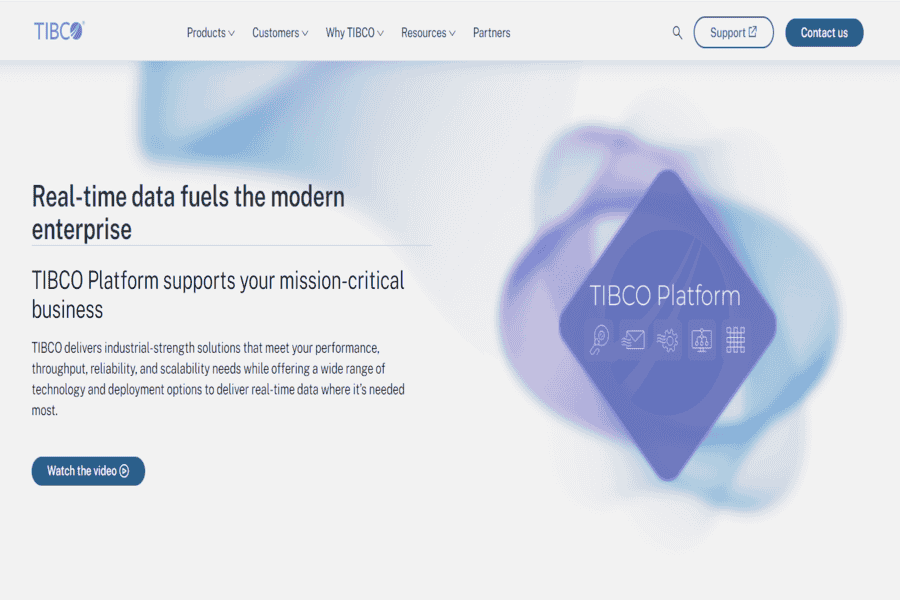
A comprehensive AI and automation suite that helps optimize workflows and business processes with advanced data analytics.
Pros:
- Strong data analytics and AI features.
- Great integration with enterprise-level solutions.
Cons:
- It can be complex to set up and maintain.
- Expensive for small businesses.
Pricing Package:
Custom pricing is available.
Social Media:
- Facebook: TIBCO Facebook
- Twitter: TIBCO Twitter
- LinkedIn: TIBCO LinkedIn
- YouTube: TIBCO YouTube
Contact Information:
- Mail: info@tibco.com
- Contact Number: +1 650-846-1000
Integromat (now Make)

A powerful AI automation tool designed to optimize workflows by connecting apps and automating tasks across various platforms.
Pros:
- Easy-to-use drag-and-drop interface.
- Supports a wide range of integrations.
Cons:
- Limited AI capabilities for complex tasks.
- Advanced features may require some learning.
Pricing Package:
Free plan available; paid plans start at $9/month.
Social Media:
- Facebook: Make Facebook
- Twitter: Make Twitter
- LinkedIn: Make LinkedIn
- YouTube: Make YouTube
Contact Information:
- Mail: support@make.com
Celonis Intelligent Business Cloud

A cloud-based process mining and AI platform for optimizing business operations by analyzing workflows and providing actionable insights.
Pros:
- Deep analytics into process performance.
- Highly customizable dashboards and workflows.
Cons:
- High cost for small and medium businesses.
- Requires significant time for integration.
Pricing Package:
Custom pricing is available.
Social Media:
- Facebook: Celonis Facebook
- Twitter: Celonis Twitter
- LinkedIn: Celonis LinkedIn
- YouTube: Celonis YouTube
Contact Information:
- Mail: info@celonis.com
- Contact Number: +49 89 2444 3900
Applications of AI-Powered Process Optimization Tools
AI-powered process optimization has a wide range of applications across various industries. Here are some key areas where AI is driving significant improvements:
Manufacturing
- Predictive Maintenance: AI algorithms can analyze sensor data to predict equipment failures, allowing for proactive maintenance and reducing downtime.
- Quality Control: AI-powered vision systems can detect product defects, ensuring high-quality output.
- Supply Chain Optimization: AI can optimize inventory levels, transportation routes, and supplier relationships to improve efficiency and reduce costs.
Supply Chain Management
- Demand Forecasting: AI can analyze historical data and external factors to predict future demand, enabling accurate inventory management accurately.
- Logistics Optimization: AI-powered algorithms can optimize transportation routes, load planning, and warehouse operations.
- Risk Management: AI can identify potential supply chain disruptions, such as natural disasters or geopolitical events, and develop contingency plans.
Healthcare
- Drug Discovery: AI can accelerate drug discovery by analyzing vast amounts of biological data to identify potential drug targets.
- Medical Image Analysis: AI-powered image analysis tools can assist in diagnosing diseases like cancer and heart disease.
- Personalized Medicine: AI can analyze patient data to develop personalized treatment plans.
Finance
- Fraud Detection: AI algorithms can identify fraudulent transactions by analyzing patterns in large datasets.
- Risk Assessment: AI can assess credit and investment risks by analyzing financial data and market trends.
- Algorithmic Trading: AI-powered trading systems can execute trades at high speeds and with greater accuracy.
Retail
- Customer Segmentation: AI can analyze customer data to identify different segments and tailor marketing campaigns accordingly.
- Recommendation Systems: AI-powered recommendation engines can suggest products to customers based on their preferences and purchase history.
- Inventory Management: AI can optimize inventory levels to minimize stockouts and excess inventory.
Customer Service
- Chatbots and Virtual Assistants: AI-powered chatbots can provide 24/7 customer support and answer common queries.
- Sentiment Analysis: AI can analyze customer feedback to identify areas for improvement and enhance customer satisfaction.
- Predictive Customer Service: AI can anticipate customer needs and proactively address issues before they escalate.
Challenges and Considerations
While AI-powered process optimization offers immense potential, it also presents several challenges that organizations must address:
Data Quality and Quantity
- Data Quality: Ensuring data accuracy, completeness, and consistency is crucial for training effective AI models.
- Data Quantity: Sufficient, high-quality data is necessary to train robust AI models.
- Data Privacy and Security: Protecting sensitive data is essential, especially when dealing with personal information.
Model Interpretability
- Black-Box Models: Many AI models, particularly deep learning models, are complex and difficult to interpret.
- Explainable AI: Developing techniques to understand the decision-making process of AI models can enhance trust and transparency.
Ethical Implications
- Bias and Fairness: AI models can inadvertently perpetuate biases in training data, leading to unfair outcomes.
- Job Displacement: Automating tasks through AI may lead to job losses, necessitating workforce reskilling and upskilling.
Implementation Costs
- Initial Investment: Implementing AI-powered solutions requires significant upfront investment in technology, infrastructure, and talent.
- Ongoing Costs: Maintaining and updating AI systems involves ongoing costs for data management, model retraining, and technical support.
Future Trends and Innovations
The future of AI-powered process optimization is promising, with several exciting trends on the horizon:
Advanced Machine Learning Techniques
- Generative AI: Creating new content, such as text, images, and music.
- Transfer Learning: Leveraging knowledge from one task to improve performance on another.
- Reinforcement Learning: Training AI agents to make decisions by interacting with an environment.
Real-time Optimization
- Streaming Data Processing: Analyzing data as it is generated to make real-time decisions.
- Edge Computing: Processing data closer to the source, reducing latency and improving responsiveness.
Integration with IoT and Edge Computing
- Real-time Data Collection: Gathering IoT device data enables real-time monitoring and optimization.
- Decentralized Decision-Making: Making decisions at the edge, closer to the data source, for faster response times.
AI-Driven Automation
- Robotic Process Automation (RPA): Automating repetitive tasks to increase efficiency.
- Autonomous Systems: Developing self-driving vehicles, drones, and robots to perform tasks autonomously.
Conclusion
AI-powered process optimization is a powerful tool that can transform businesses across industries. By addressing the challenges and embracing emerging trends, organizations can unlock the full potential of AI and achieve significant operational improvements. As AI continues to evolve, adopting an ethical and responsible approach is essential to ensure that AI benefits society.
Top AI Predictive Analytics Tools in 2025 25 Mar 2025, 8:18 am
Predictive analytics combines statistics, data mining, and machine learning to forecast future outcomes based on historical data. In 2025, the rapid advancements in AI technology have further enhanced predictive analytics tools, making them more precise, scalable, and accessible across industries. This section covers the basics of predictive analytics, highlights its significance in today’s data-driven world, and explores emerging trends shaping predictive analytics in 2025, such as automation, no-code AI platforms, and explainable AI. Additionally, with the help of content analysis, businesses can gain valuable insights from their data to improve their predictive analytics models.
Criteria for Selecting the Best AI Predictive Analytics Tools
When selecting a predictive analytics tool, businesses must assess several key factors to find a solution that meets their needs and drives meaningful insights. Here’s a breakdown of the essential criteria:
Accuracy of Predictions
- Ensure the tool has a proven track record of accuracy in data analysis and predictive capabilities.
- Look for reviews, case studies, or performance benchmarks to verify the tool’s precision.
Ease of Use and Usability
- Evaluate the user interface and ease of navigation. The tool should be intuitive for both technical and non-technical users.
- Consider tools with no-code or low-code options if your team needs more technical expertise.
Cost and Licensing Options
- Analyze the pricing structure to ensure it aligns with your budget—look for options that scale with business growth.
- Assess available licensing options, such as monthly subscriptions, annual plans, or one-time payments.
Integration Capabilities
- Check if the tool can easily integrate with your current tech stack (CRM, ERP, databases, etc.).
- Look for API support and compatibility with other software to streamline data flow and maintain consistency.
Customer Support and Documentation
- Consider the level of customer support provided, including availability (24/7, business hours, etc.), response time, and support channels (chat, phone, email).
- Ensure the tool includes comprehensive documentation, tutorials, and access to training resources.
Customization for Industry-Specific Needs
- Some tools offer specialized features tailored to industries like healthcare, finance, retail, etc. Choose tools that align with your industry requirements.
- Customizable features allow you to adapt predictive models to your business processes and data types.
Scalability and Flexibility for Future Growth
- Opt for a tool that can handle increasing data volumes and complexity as your business grows.
- Ensure the tool is flexible enough to support new features, add-ons, and enhancements as technology evolves.
Data Security and Compliance
- Verify the tool’s data protection measures, including encryption, access controls, and compliance with regulations (GDPR, HIPAA, CCPA, etc.).
- Look for features that support data governance and audit trails to maintain secure and compliant data handling.
Performance Speed and Efficiency
- Assess the tool’s speed in processing large datasets and generating insights. Efficiency can impact real-time decision-making.
- Tools with optimized performance reduce lag times and improve responsiveness, especially for time-sensitive analyses.
Comparing the Top AI Predictive Analytics Tools
This section provides a detailed comparative analysis of the top AI predictive analytics tools, helping businesses understand which tool may best suit their unique requirements based on company size, budget, and industry focus. Here’s how this comparison will be structured:
Strengths and Weaknesses Summary
Strengths:
Highlight each tool’s core strengths, such as high accuracy, intuitive interfaces, advanced customization options, or seamless integration capabilities.
Weaknesses:
Identify potential drawbacks for each tool, like limited scalability, high costs, or a lack of advanced analytics features.
Best Tools for Small, Medium, and Large Enterprises
Small Businesses:
Recommendations for tools with affordable pricing, simple interfaces, and easy onboarding, ideal for teams with limited resources.
Medium Enterprises:
Tools that offer scalability, more advanced features, and flexible integration options to support growing business needs.
Large Enterprises:
Robust solutions with extensive customization, advanced security, and scalability that can handle large datasets and complex workflows.
Comparison Chart: Features, Support Options, and Pricing
Features:
Each tool’s core functionalities include data visualization, real-time processing, machine learning models, and reporting capabilities.
Support Options:
Overview of customer support levels, including 24/7 support, dedicated account managers, and the availability of self-help resources like FAQs and tutorials.
Pricing:
Comparative pricing information, covering any free trial periods, subscription models, and enterprise-level pricing to give businesses clarity on investment requirements.
Industry-Specific Recommendations
Healthcare:
Tools with strong data security, HIPAA compliance, and predictive patient care and resource allocation capabilities.
Finance:
Solutions with high-level encryption, fraud detection, and real-time predictive insights suitable for financial analysis and risk management.
Retail:
Tools that support customer behavior analysis, inventory optimization, and marketing predictions to enhance customer experience and sales forecasting.
Final Recommendations Based on Business Needs
Summary of the best choices for companies seeking specific features, such as real-time analytics, high scalability, or ease of use.
Tips for selecting a tool that aligns not only with current business requirements but also with anticipated growth and future analytics needs.
Future of Predictive Analytics in AI
Predictive analytics is rapidly evolving and driven by new technologies and innovations that enhance the power and precision of AI-driven predictions. Here’s a look at key trends shaping the future of predictive analytics and strategies for businesses to stay competitive and prepare for these advancements.
Real-Time Data Processing
As data generation accelerates, real-time analytics is becoming a necessity. Predictive analytics tools will increasingly offer instant data processing to support on-the-fly decision-making.
Real-time predictive insights will allow businesses to react immediately to market shifts, customer behavior changes, and operational issues, creating a competitive edge in fast-paced environments.
AI-Enhanced Analytics for Personalized Insights
- Predictive models are advancing to deliver highly personalized insights tailored to individual customers, making marketing, sales, and customer service more effective.
- AI-driven personalization leverages complex algorithms to predict user preferences, forecast churn rates, and improve customer engagement based on personal data, ensuring each interaction is relevant and value-driven.
The Role of Quantum Computing in Predictive Analytics
- Quantum computing, though still emerging, is anticipated to revolutionize predictive analytics by rapidly processing massive datasets.
- Quantum computing will unlock new possibilities in predictive modeling, making it feasible to analyze large datasets quickly, run complex simulations, and improve accuracy in finance, healthcare, and climate science industries.
Advancements in Explainable AI (XAI)
- As AI models become complex, explainable AI (XAI) is crucial for transparency. XAI ensures that businesses understand how predictive models generate their insights.
- This trend will drive greater adoption of predictive analytics tools in regulated industries, as explainability helps companies remain compliant and boosts stakeholder confidence in AI-driven decisions.
Automated Machine Learning (AutoML)
- AutoML is streamlining the predictive analytics process by automating model selection, training, and tuning, making predictive analytics more accessible to non-data scientists.
- This democratization of AI will enable companies of all sizes to leverage predictive analytics without requiring specialized expertise, allowing broader adoption across industries.
Integration with IoT and Edge Computing
- Converging predictive analytics with Internet of Things (IoT) devices and edge computing will enable on-site data processing and prediction.
- This integration is particularly beneficial for sectors like manufacturing and logistics, where rapid, on-the-ground decision-making based on predictive insights can improve efficiency, reduce downtime, and optimize resource use.
Ethics and Responsible AI Development
- As AI predictive analytics tools grow in influence, there is a rising focus on ethical AI practices, including data privacy, fairness, and algorithmic transparency.
- Businesses must implement policies and practices that ensure responsible AI usage, with predictive models that avoid bias and respect user privacy.
Preparing for the Next Wave of Innovations
- To remain competitive, companies should invest in AI training for employees, encourage cross-functional collaboration, and adopt flexible tools to integrate future advancements.
- Establishing a continuous learning and experimentation culture will be key to adapting to rapid technological shifts in predictive analytics.
Investing in Scalable and Adaptable Infrastructure
- As predictive analytics tools grow in sophistication, businesses will need infrastructure that can scale with data volume and complexity.
- Cloud-based solutions, modular architectures, and hybrid computing models can help companies flexibly adopt future enhancements without significant disruption.
Implementation Best Practices for Predictive Analytics Tools
Successfully implementing predictive analytics tools involves a strategic approach to ensure that they deliver the intended value. From initial planning to overcoming challenges, here are the best practices to follow for effective deployment:
Define Clear Goals and Objectives
- Start by identifying the specific business goals the predictive analytics tool will help achieve. This could be improving customer retention, optimizing inventory, or forecasting demand.
- Setting measurable objectives ensures everyone understands the tool’s purpose and aligns the implementation with broader business strategies.
Prepare and Cleanse Data for Analysis
- Quality data is essential for accurate predictions. Invest time in data cleansing to remove inconsistencies, fill in missing values, and standardize data formats.
- Establish clear data governance policies to maintain high data quality and address privacy and compliance requirements.
Integrate with Existing Systems
- Seamless integration with existing software (e.g., CRM, ERP, and BI systems) is critical for comprehensive insights. Ensure the predictive analytics tool can connect and communicate with your current systems.
- Consider using APIs and data connectors to enable data flow across platforms and avoid siloed information, which can hinder predictive accuracy.
Invest in Training and Upskilling the Team
- Ensure the team has adequate training to use the tool effectively, from data analysts to business users who interpret the insights.
- Encourage cross-departmental collaboration to foster a data-driven culture. Upskilling initiatives, such as workshops or online courses, can improve analytical skills across the organization.
Establish a Testing and Validation Process
- Before full deployment, conduct pilot tests to validate the tool’s performance and predictive accuracy. This helps identify potential issues and allows for adjustments before a larger rollout.
- Use a continuous feedback loop to refine the models, using historical data and business feedback to improve predictions.
Monitor and Measure Key Performance Indicators (KPIs)
- Establish KPIs to measure the success and impact of the predictive analytics tool, such as ROI, prediction accuracy, and time savings.
- Regularly track progress and assess the tool’s impact against your objectives to ensure it’s adding value to the business.
Address Common Challenges Proactively
- Data Quality Issues: Poor data quality can skew predictions. Regularly audit data sources, update cleansing practices, and establish ongoing quality checks.
- Internal Resistance: Some teams may resist adopting predictive analytics tools. Address this by demonstrating the tool’s benefits and offering hands-on training to build confidence.
- Resource Limitations: Predictive analytics can require significant resources. Plan for this by scaling implementation gradually and ensuring support from leadership.
Ensure Data Privacy and Security Compliance
- Predictive analytics often involves sensitive data, so it’s essential to comply with privacy laws (e.g., GDPR, CCPA). Incorporate data encryption, access control, and other security measures.
- Establish a data governance framework to monitor data access and ensure compliance with industry regulations.
Plan for Scalability and Continuous Improvement
- Predictive analytics tools should be adaptable to accommodate future growth and data volume or complexity advancements.
- Regularly review and update predictive models to stay accurate as business conditions change. Continuous improvement ensures that insights remain relevant and actionable.
Communicate Insights Clearly and Regularly
- Ensure that predictive insights are communicated in a clear and actionable way for decision-makers. Consider using dashboards, visualizations, or regular reports to make insights accessible.
- Establish a routine for sharing insights with stakeholders to keep everyone informed and encourage a data-driven culture across the organization.
AI Predictive Analytics Tools
H2O.ai

An open-source platform for machine learning and predictive analytics.
Benefits:
It is scalable, flexible, and offers a wide range of algorithms.
Pricing:
Open-source (free), enterprise versions available.
RapidMiner

Comprehensive data science platform for predictive analytics.
Benefits:
User-friendly interface, automation capabilities, and a wide range of algorithms.
Pricing:
Subscription-based offers various plans.
DataRobot

An AI-powered platform for automated machine learning and predictive analytics.
Benefits:
Automates model building and deployment and provides accurate predictions.
Pricing:
Subscription-based, enterprise-focused.
Alteryx

Analytic process automation (APA) platform for data blending, mining, and predictive analytics.
Benefits:
Drag-and-drop interface, easy to use, and integrates with various data sources.
Pricing:
Subscription-based offers different plans for individuals and enterprises.
KNIME Analytics Platform

Open-source data analytics platform for predictive analytics and machine learning.
Benefits:
It is highly customizable and modular and offers a visual programming interface.
Pricing:
Open-source (free), enterprise versions available.
SAS Viya

Comprehensive analytics platform with advanced capabilities for predictive analytics.
Benefits:
Scalable, reliable, and offers a wide range of statistical and machine learning techniques.
Pricing:
Subscription-based, enterprise-focused.
Azure Machine Learning

Cloud-based platform for building, training, and deploying machine learning models.
Benefits:
Scalable, integrates with other Azure services, and offers a range of pre-built models.
Pricing:
Pay-as-you-go, based on usage.
Google Cloud AI Platform
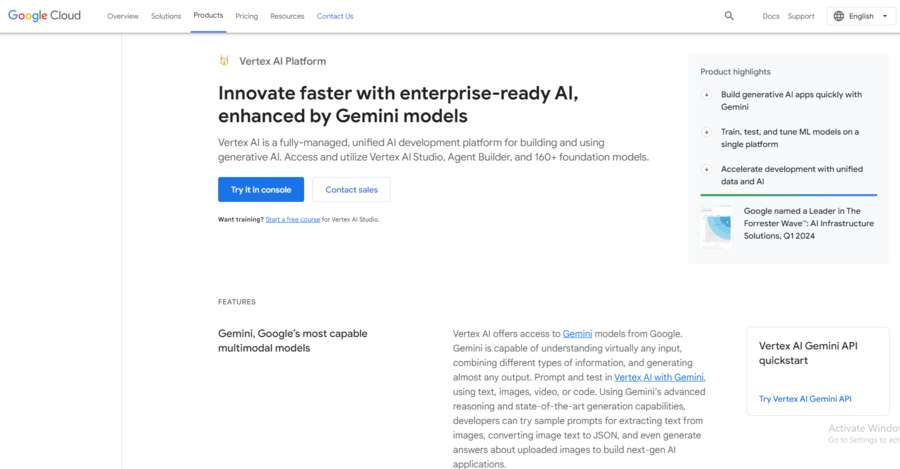
Cloud-based platform for building and deploying machine learning models.
Benefits:
Scalable, integrates with other Google Cloud services, and offers a range of pre-trained models.
Pricing:
Pay-as-you-go, based on usage.
IBM Watson Studio
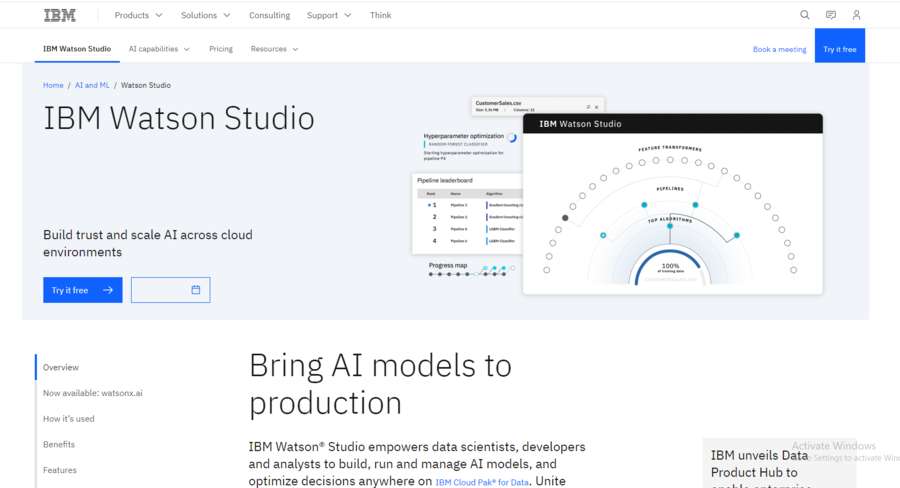
Cloud-based platform for data science and machine learning.
Benefits:
Collaborative offers a range of tools for data preparation, model building, and deployment.
Pricing:
Subscription-based offers various plans.
Amazon SageMaker
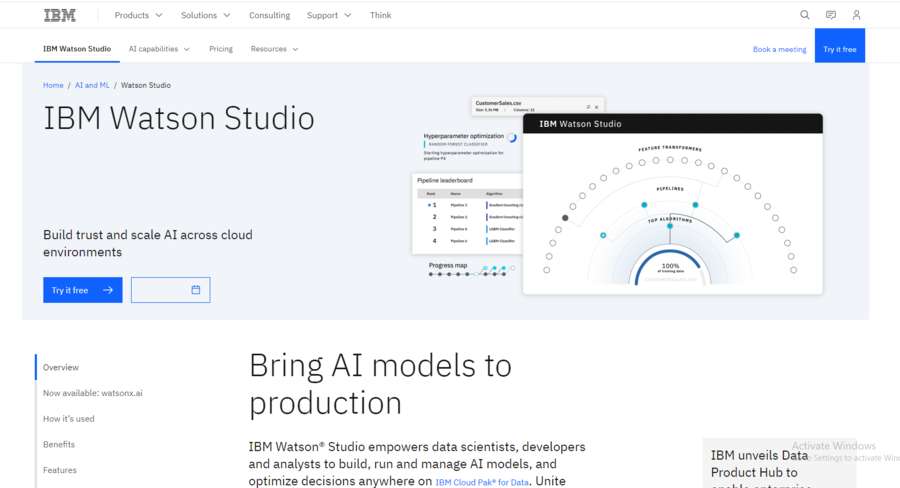
Fully managed platform for machine learning.
Benefits:
Scalable, integrates with other AWS services, and offers a range of pre-built algorithms and models.
Pricing:
Pay-as-you-go, based on usage.
Measuring ROI and Success with Predictive Analytics Tools
Evaluating the success of predictive analytics tools is crucial to understanding the value they bring to an organization. Businesses can gauge how effectively these tools contribute to their goals by tracking relevant KPIs and calculating ROI. Here’s a guide to assessing the impact and ROI of predictive analytics tools:
Identify Key Performance Indicators (KPIs)
Prediction Accuracy:
The accuracy of predictive models is a core KPI. High accuracy in forecasts translates directly to better-informed decisions and operational efficiency.
Cost Savings:
Track reductions in operational costs, such as inventory management, maintenance, or marketing spend, where predictive insights have been applied.
Revenue Growth:
Measure revenue generated from predictive analytics-driven strategies, such as personalized marketing, demand forecasting, or customer retention.
Time Savings:
Calculate the time saved in decision-making and analysis tasks due to automation and faster insights from predictive tools.
Customer Retention and Acquisition:
Predictive analytics can enhance customer satisfaction by personalizing experiences—and track improvements in customer retention and acquisition rates as a result of implementing predictive insights.
Methods for Calculating Return on Investment (ROI)
Cost-Benefit Analysis:
Compare the initial and ongoing costs of the predictive analytics tool (including software fees, setup, and training costs) to the financial benefits gained, such as increased revenue or reduced costs.
Break-Even Analysis:
Identify the time required for the tool to cover its costs. This can help set expectations on when to start seeing financial returns.
Incremental Revenue and Savings Calculation:
Track specific financial improvements directly attributed to predictive analytics, such as incremental revenue from targeted marketing or cost savings from optimized inventory levels.
Establishing a Baseline for Comparison
To measure the tool’s impact accurately, establish a baseline of KPIs (e.g., average sales or customer churn rate) before implementation. Compare these baseline metrics to results after implementing the predictive analytics tool to gauge improvement.
Monitor Ongoing Performance
Continuous Tracking:
Regularly monitor KPIs and compare them to assess the tool’s long-term impact.
Adjust Goals and Models:
As business needs change, adjust the predictive models and KPIs being tracked to align with new objectives or market conditions.
Real-World Case Studies
Include case studies of businesses that have effectively implemented predictive analytics tools, highlighting ROI and specific KPIs that improved.
Challenges in Measuring ROI
Quantifying Intangible Benefits:
Some benefits, such as improved customer satisfaction or faster decision-making, can be harder to quantify but still contribute significantly to ROI.
Data Quality and Model Adjustments:
Ensuring accurate ROI calculations requires high-quality data and regular model adjustments to maintain predictive accuracy as conditions evolve.
Report Results to Stakeholders
Present ROI findings and KPI improvements to stakeholders in clear, accessible formats such as reports, dashboards, or presentations. This keeps everyone informed about the value generated by predictive analytics.
Security and Ethical Considerations in Predictive Analytics
As predictive analytics grows in capability, businesses must prioritize security and ethical responsibility to protect sensitive data, ensure regulatory compliance, and foster trust. Here’s a breakdown of key security and ethical considerations when implementing predictive analytics tools.
Data Security Measures to Protect Sensitive Information
Encryption:
Use robust encryption for data at rest and in transit to prevent unauthorized access, especially for sensitive personal or financial data.
Access Controls:
Implement role-based access controls, allowing only authorized personnel to access specific datasets. Multi-factor authentication (MFA) adds a layer of security.
Data Anonymization:
For privacy-sensitive data, anonymization techniques should protect individuals’ identities while enabling meaningful analysis.
Regular Security Audits:
Conduct frequent audits to identify and address vulnerabilities. Regular security assessments ensure that protective measures stay up-to-date against new threats.
Ethical Considerations in AI and Predictive Analytics
Avoiding Bias in Predictive Models:
AI models trained on biased data can lead to unfair or inaccurate predictions. Regularly audit datasets for potential biases and diversify training data to promote fairness.
Transparency and Explainability:
Ensure predictive models are explainable to users and stakeholders. Transparent AI systems allow businesses to justify predictions, especially in high-stakes areas like hiring or loan approvals.
Avoiding “Black Box” Decision-Making:
Use interpretable AI models, especially when predictive analytics impacts customer outcomes. When predictions lead to automated actions, a lack of transparency can erode trust.
Informed Consent and Data Ownership:
Obtain informed consent from users regarding data collection and usage. Respect data ownership rights and be transparent about how predictive analytics will use customer data.
Compliance with Data Privacy Regulations
GDPR (General Data Protection Regulation):
For businesses operating in the EU, GDPR compliance is essential. Predictive analytics tools must ensure data processing aligns with GDPR’s strict requirements on data protection, consent, and the right to be forgotten.
CCPA (California Consumer Privacy Act):
CCPA applies to businesses operating in or serving residents of California, mandating transparency in data collection and offering users the right to opt out of data sales. Ensure predictive analytics processes support these rights and offer easy opt-out options.
HIPAA (Health Insurance Portability and Accountability Act):
For healthcare-related predictive analytics, compliance with HIPAA is crucial to protect patient data. Predictive tools should support stringent data privacy standards for medical information.
Building a Framework for Ethical AI Use
Establish Ethical Guidelines:
Develop internal guidelines on the ethical use of predictive analytics, covering issues like fairness, transparency, and responsibility in AI-driven decisions.
Appoint a Data Ethics Officer or Committee:
Assign dedicated roles to oversee ethical practices in predictive analytics. A data ethics committee can guide decisions on data use and resolve ethical concerns.
Implement Ongoing Ethics Training:
Train team members on ethical AI practices to build awareness about biases, privacy, and transparency, fostering a culture of responsibility.
Strategies to Balance Innovation with Responsibility
Regular Ethical Audits:
Conduct periodic assessments to ensure predictive analytics aligns with evolving ethical standards and regulatory updates.
Feedback Mechanisms:
Create channels for customers and employees to report ethical concerns. Feedback mechanisms help identify potential issues and enhance accountability.
Risk Management Protocols:
Develop protocols for managing risks associated with predictive analytics, such as data breaches or AI model errors, ensuring quick response capabilities.
Maintaining Trust with Customers and Stakeholders
Transparency in Data Practices:
Communicate how customer data is collected, stored, and used in predictive analytics. Openness about data practices builds trust with customers.
Proactive Privacy Protection:
Show commitment to data privacy by investing in high-security standards and staying updated on compliance requirements. Demonstrating strong privacy practices reinforces brand integrity.
Ethical Use of Predictive Insights:
Avoid using predictive insights in ways that could manipulate or disadvantage users, such as excessive targeting or differential pricing. Ethical use of data strengthens customer relationships and brand reputation.
Resources for Further Learning
For those looking to expand their knowledge of predictive analytics and AI, various resources are available to help deepen understanding, sharpen skills, and stay updated on the latest developments. Here’s a list of recommended books, courses, tutorials, and online communities to guide further learning:
Books on Predictive Analytics and AI
Predictive Analytics: The Power to Predict Who Will Click, Buy, Lie, or Die” by Eric Siegel
A comprehensive guide to predictive analytics, this book breaks down complex concepts in a way accessible for beginners and professionals alike.
The Signal and the Noise: Why So Many Predictions Fail – But Some Don’t” by Nate Silver
This book offers a deep dive into how we make predictions, the challenges involved, and how to separate meaningful insights from noise.
“Hands-On Predictive Analytics with R: Build Effective Predictive Models Using R” by Kouadio S. O. Kouadio
A practical resource for those looking to implement predictive analytics using R, it covers model building, data manipulation, and evaluation.
Online Courses and Tutorials
Coursera: Predictive Analytics for Business
This course provides a practical introduction to predictive analytics techniques and their applications in business contexts.
Udacity: AI for Business Leaders
Aimed at professionals, this course covers AI applications for business leaders, focusing on how AI can solve real-world business problems.
edX: Predictive Analytics Using Python
Learn how to build predictive models using Python with this free course, which is ideal for those who want a hands-on approach to learning.
DataCamp: Introduction to Predictive Analytics in Python
This course focuses on using Python and machine learning algorithms to develop predictive models for business purposes.
Websites for Learning and Updates
KDnuggets
A leading website offering tutorials, articles, and resources related to data science, machine learning, and predictive analytics.
Towards Data Science
A Medium publication featuring articles on data science, AI, and machine learning, including many focused on predictive analytics.
Predictive Analytics World
The official website of the Predictive Analytics World conference offers articles, case studies, and events related to predictive analytics.
Blogs and Articles
The Analytics Vidhya Blog
An excellent resource for both beginners and advanced learners, with tutorials, articles, and case studies on predictive analytics and AI techniques.
Data Science Central
This blog provides a variety of articles on data science topics, including predictive analytics, with contributions from industry experts.
Simply Statistics
A blog by three statisticians that covers topics in statistics, data science, and predictive analytics, often with a focus on statistical theory.
Forums and Communities
Stack Overflow (Data Science and AI tags)
A widely-used Q&A site where developers and data scientists discuss common issues and share solutions related to predictive analytics and AI.
Reddit (r/datascience and r/MachineLearning)
These subreddits offer a community for discussion on data science and machine learning, with links to tutorials, job opportunities, and research.
Data Science Society
A global community where data science professionals connect, collaborate, and learn from one another with challenges, webinars, and networking opportunities.
Professional Certifications
Certified Analytics Professional (CAP)
This certification focuses on validating the expertise of professionals in analytics and predictive modeling.
Google Cloud Professional Data Engineer
This certification demonstrates proficiency in managing and analyzing data, including using predictive analytics tools and models.
Conferences and Events
Predictive Analytics World (PAW)
One of the leading events in the predictive analytics field, offering networking opportunities, expert insights, and hands-on sessions.
The Data Science Conference
A conference dedicated to data science, featuring workshops and talks on predictive analytics, machine learning, and AI.
Conclusion
The realization recaps the pinnacle tools, emphasizing their unique blessings and limitations. We provide final guidelines on deciding on a tool that aligns with enterprise dreams and increases plans, reinforcing the importance of selecting scalable and adaptable gear to keep up with AI improvements in predictive analytics.
Top AI Chatbots for Customer Support in 2025 24 Mar 2025, 6:21 am
AI Chatbots are revolutionizing customer service by providing instant, 24/7 support. These AI-powered assistants utilize natural language processing to understand and respond to customer inquiries, offering personalized assistance and resolving common issues efficiently. This guide explores AI chatbots’ benefits, challenges, and future in enhancing customer satisfaction and improving business operations. By effectively integrating AI chatbots with live chat software, businesses can create a seamless and omnichannel customer support experience, ensuring customers receive the assistance they need when they need it.
What are AI Chatbots?
AI chatbots are computer programs that simulate human conversation through text or voice interactions. They leverage artificial intelligence technologies like natural language processing (NLP) and machine learning to understand and respond to user queries naturally and intuitively.
Understanding AI Chatbot Technology
Natural Language Processing (NLP):
- How NLP enables chatbots to understand and process human language.
- Key techniques: text classification, sentiment analysis, and intent recognition.
Machine Learning:
- The role of machine learning in training chatbots is to learn from data and improve over time.
- Supervised, unsupervised, and reinforcement learning techniques.
Deep Learning:
- Deep learning models, such as neural networks, for advanced language understanding and generation.
- Applications in chatbot development, including dialogue systems and language models.
Types of AI Chatbots
Rule-Based Chatbots:
- How rule-based chatbots work by following predefined rules and scripts.
- Limitations and use cases for rule-based chatbots.
Machine Learning Chatbots:
- The power of machine learning in creating more sophisticated chatbots.
- Training and fine-tuning machine learning models for optimal performance.
Hybrid Chatbots:
- We are combining the strengths of rule-based and machine-learning approaches.
- Effective strategies for building hybrid chatbots.
Implementing AI Chatbots in Customer Support
Identifying Use Cases:
- We are determining the most suitable scenarios for chatbot implementation, such as FAQs, product information, and basic customer service inquiries.
Choosing the Right Platform:
- A guide to selecting the appropriate chatbot platform or framework, considering factors like scalability, customization, and integration capabilities.
Designing Effective Conversations:
- Strategies for creating engaging and informative chatbot conversations, including using natural language, humor, and empathy.
Training and Fine-tuning the Chatbot:
- Techniques for training chatbots on large datasets, fine-tuning their responses, and ensuring accuracy and relevance.
Integration with Existing Systems:
- How to seamlessly integrate chatbots into existing customer support systems, such as CRM and ticketing systems.
Top AI Chatbots for Customer Support
Intercom
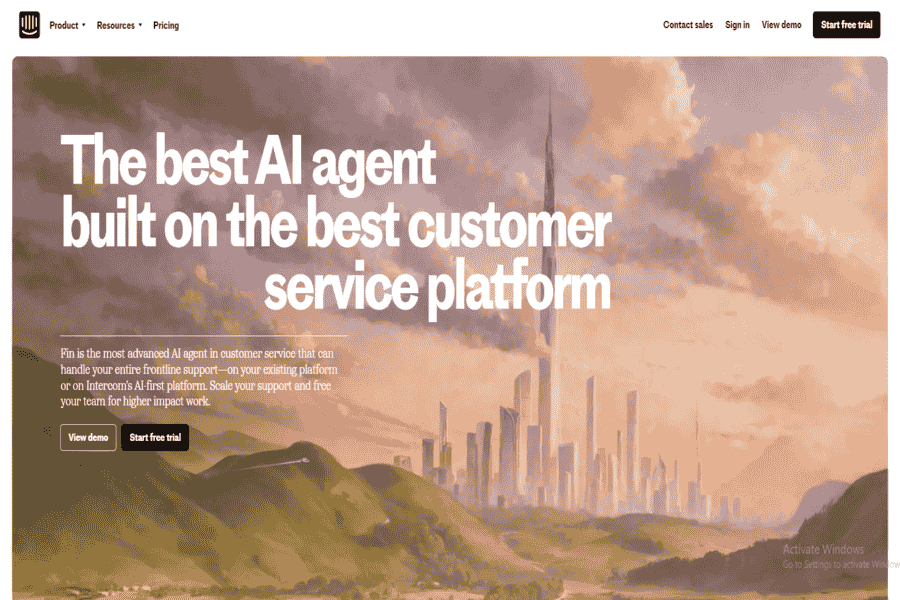
AI-driven chatbot and live chat solution for personalized customer support and engagement.
Pros:
- Customizable workflows.
- Integrates seamlessly with CRM tools.
Cons:
- Expensive for small businesses.
- Advanced features require high-tier plans.
Pricing Package:
Starting at $74/month.
Social Media:
- Facebook: Intercom Facebook
- Instagram: Intercom Instagram
- Twitter: Intercom Twitter
- LinkedIn: Intercom LinkedIn
- YouTube: Intercom YouTube
Contact Information:
- Mail: support@intercom.com
Drift
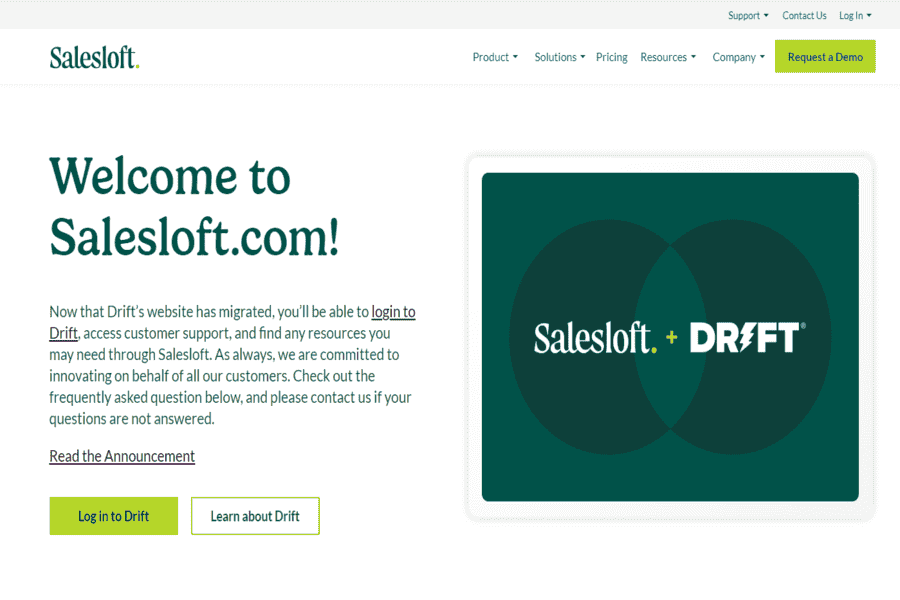
Conversational AI platform for customer support and sales enablement.
Pros:
- Real-time chat with AI support.
- Lead qualification features.
Cons:
- Pricing can be steep for startups.
- Requires training for optimal use.
Pricing Package:
Custom pricing is available upon request.
Social Media:
- Facebook: Drift Facebook
- Instagram: Drift Instagram
- Twitter: Drift Twitter
- LinkedIn: Drift LinkedIn
- YouTube: Drift YouTube
Contact Information:
- Mail: support@drift.com
Zendesk Answer Bot
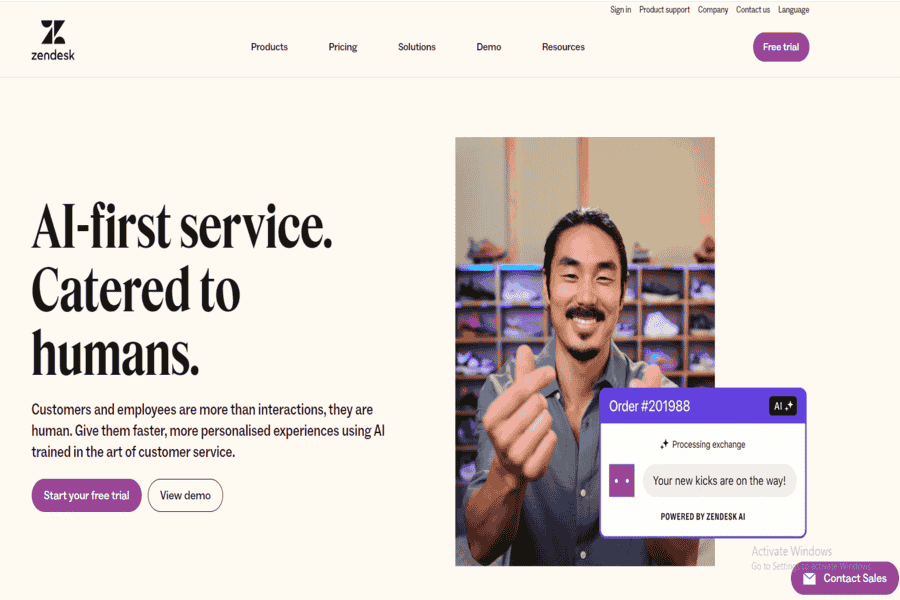
An AI-powered chatbot is integrated with Zendesk to provide automated support.
Pros:
- It perfectly integrates with the Zendesk ecosystem.
- Offers multi-language support.
Cons:
- Limited to Zendesk users.
- Expensive for advanced features.
Pricing Package:
Starts at $49/month per agent.
Social Media:
- Facebook: Zendesk Facebook
- Instagram: Zendesk Instagram
- Twitter: Zendesk Twitter
- LinkedIn: Zendesk LinkedIn
- YouTube: Zendesk YouTube
Contact Information:
- Mail: support@zendesk.com
Tidio
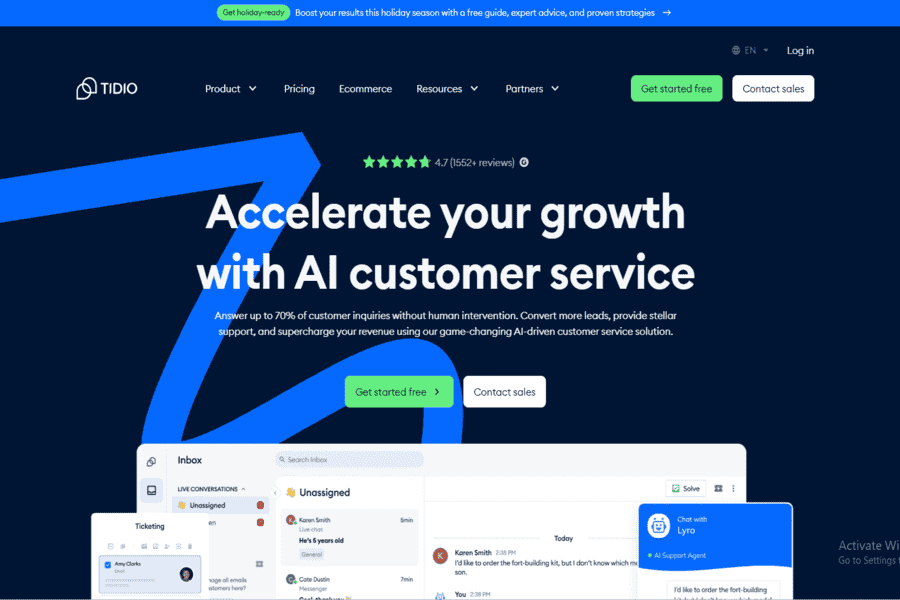
AI chatbot and live chat tool for customer support and lead generation.
Pros:
- Easy to use for non-technical users.
- Provides pre-designed chatbot templates.
Cons:
- Limited customizability.
- The free plan includes branding.
Pricing Package:
Free plan; premium starts at $19/month.
Social Media:
- Facebook: Tidio Facebook
- Instagram: Tidio Instagram
- Twitter: Tidio Twitter
- LinkedIn: Tidio LinkedIn
- YouTube: Tidio YouTube
Contact Information:
- Mail: support@tidio.net
Freshchat
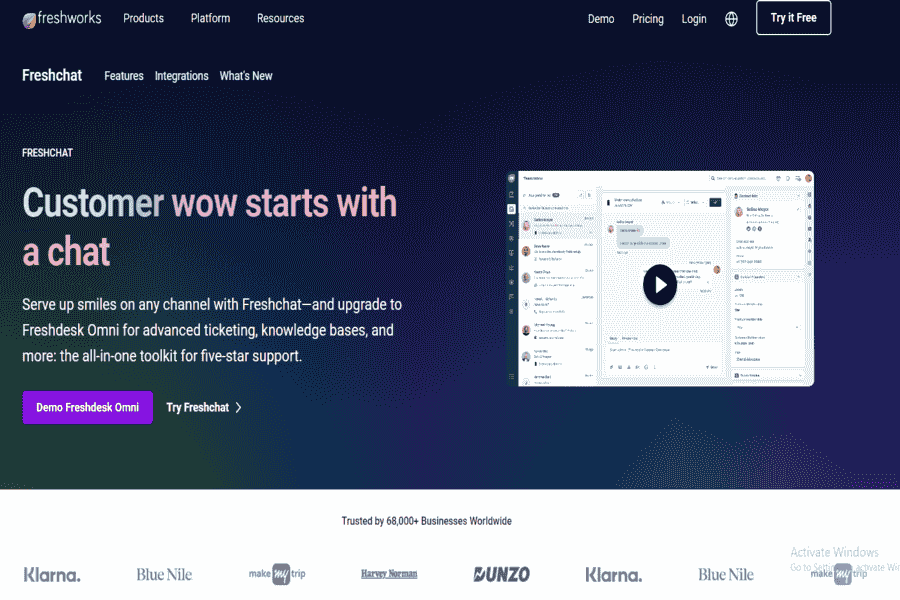
AI-powered customer messaging software with robust chatbot capabilities.
Pros:
- Integrates with Freshworks CRM.
- Supports multi-channel messaging.
Cons:
- The steep learning curve for new users.
- High costs for advanced plans.
Pricing Package:
Starts at $15/agent/month.
Social Media:
- Facebook: Freshworks Facebook
- Instagram: Freshworks Instagram
- Twitter: Freshworks Twitter
- LinkedIn: Freshworks LinkedIn
- YouTube: Freshworks YouTube
Contact Information:
- Mail: support@freshchat.com
ManyChat
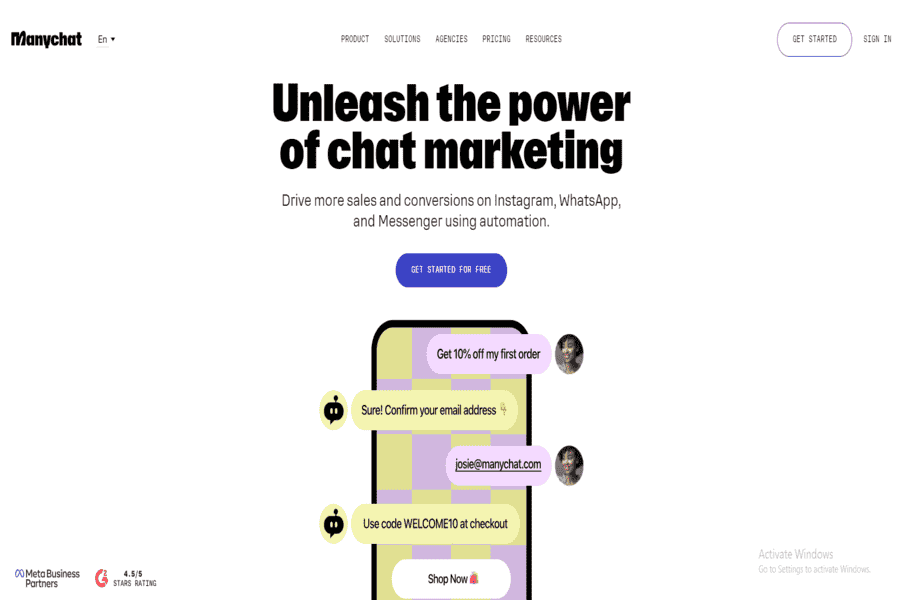
AI-powered chatbot for automating conversations on Facebook, Instagram, and web platforms.
Pros:
- Easy integration with social media.
- Offers visual chatbot builder.
Cons:
- Limited features on the free plan.
- It is mainly suited for Facebook and Instagram.
Pricing Package:
Free plan; premium starts at $10/month.
Social Media:
- Facebook: ManyChat Facebook
- Instagram: ManyChat Instagram
- Twitter: ManyChat Twitter
- LinkedIn: ManyChat LinkedIn
- YouTube: ManyChat YouTube
Contact Information:
- Mail: support@manychat.com
Chatfuel
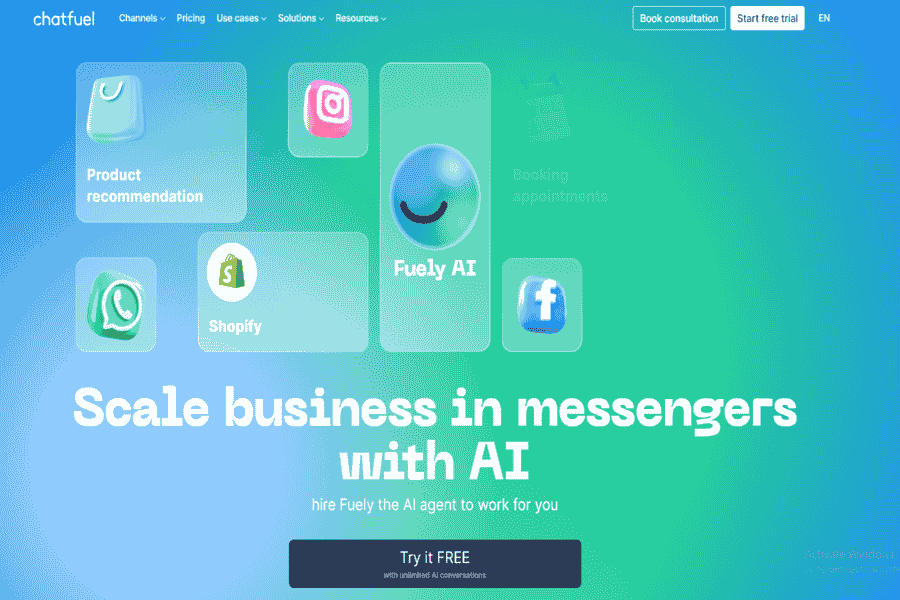
AI chatbot platform focused on automating customer service on messaging platforms like Facebook Messenger.
Pros:
- No coding is required for setup.
- Advanced customization features.
Cons:
- Limited analytics in the free plan.
- Focuses primarily on Facebook Messenger.
Pricing Package:
Free plan; premium starts at $15/month.
Social Media:
- Facebook: Chatfuel Facebook
- Instagram: Chatfuel Instagram
- Twitter: Chatfuel Twitter
- LinkedIn: Chatfuel LinkedIn
- YouTube: Chatfuel YouTube
Contact Information:
Mail: support@chatfuel.com
MobileMonkey

AI chatbot for automating customer interactions across web, SMS, and social messaging platforms.
Pros:
- Omni-channel chatbot solutions.
- Offers live chat and automated support.
Cons:
- The free version has limited features.
- It can be overwhelming for beginners.
Pricing Package:
Free plan; premium starts at $14.25/month.
Social Media:
- Facebook: MobileMonkey Facebook
- Instagram: MobileMonkey Instagram
- Twitter: MobileMonkey Twitter
- LinkedIn: MobileMonkey LinkedIn
- YouTube: MobileMonkey YouTube
Contact Information:
Mail: support@mobilemonkey.com
Ada

AI-powered customer support chatbot designed to automate interactions and reduce customer service costs.
Pros:
- Fully automated conversations.
- Highly customizable workflows.
Cons:
- Limited integrations on lower-tier plans.
- Setup can be complex for beginners.
Pricing Package:
Custom pricing is available.
Social Media:
- Facebook: Ada Facebook
- Instagram: Ada Instagram
- Twitter: Ada Twitter
- LinkedIn: Ada LinkedIn
- YouTube: Ada YouTube
Contact Information:
Mail: support@ada.cx
Botsify
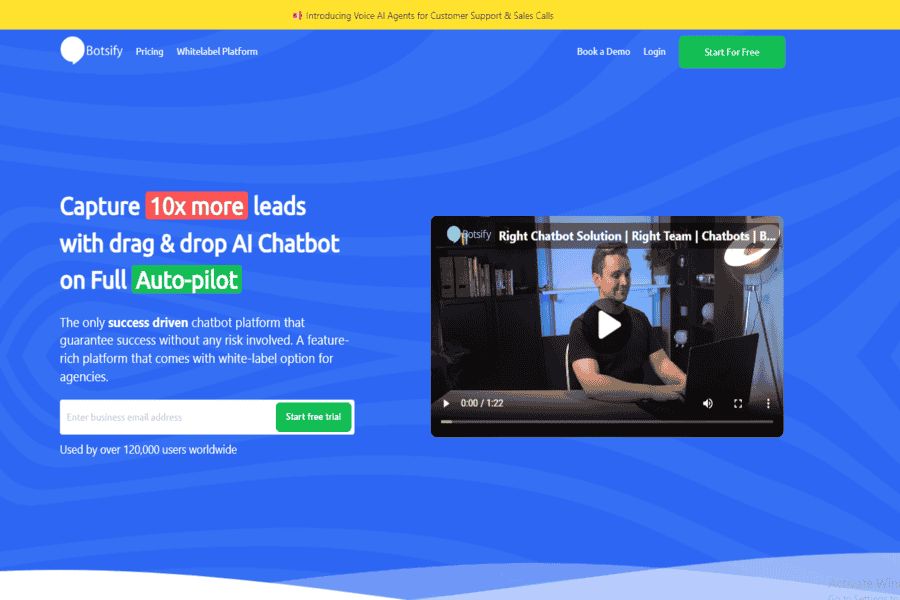
AI chatbot platform for automating conversations and customer support across websites, social media, and messaging apps.
Pros:
- Easy drag-and-drop interface.
- Integration with major CRM platforms.
Cons:
- The free version is limited.
- Some advanced features are only available in higher-pricing tiers.
Pricing Package:
Free plan; premium starts at $50/month.
Social Media:
- Facebook: Botsify Facebook
- Twitter: Botsify Twitter
- LinkedIn: Botsify LinkedIn
Contact Information:
- Mail: support@botsify.com
SnatchBot

AI-powered chatbot platform for businesses to engage and provide customer support on multiple platforms.
Pros:
- Multi-channel support, including web and social media.
- Free plan with unlimited bots.
Cons:
- Advanced AI features are limited to paid plans.
- Some integrations require technical knowledge.
Pricing Package:
Free plan; premium starts at $30/month.
Social Media:
- Facebook: SnatchBot Facebook
- Twitter: SnatchBot Twitter
- LinkedIn: SnatchBot LinkedIn
- YouTube: SnatchBot YouTube
Contact Information:
- Mail: support@snatchbot.me
LivePerson
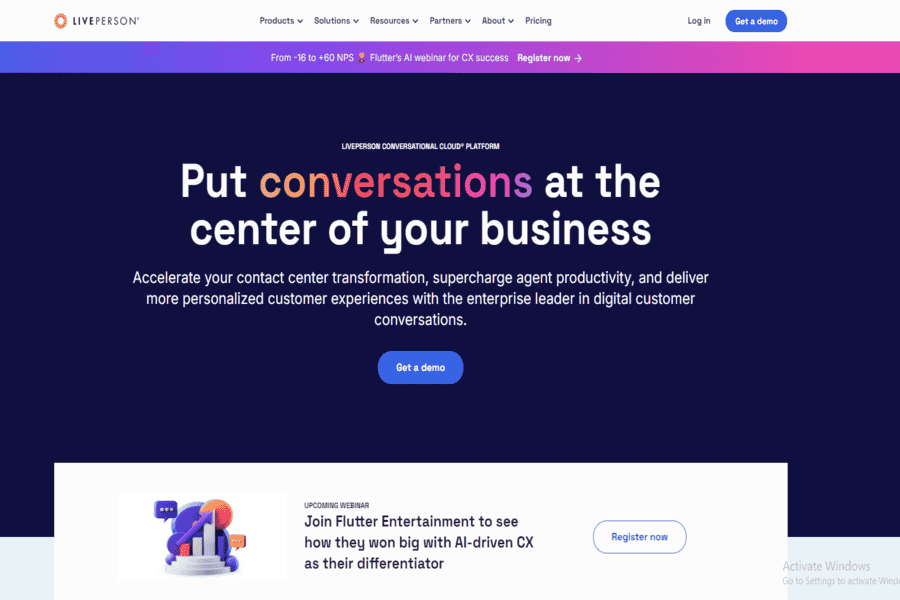
AI-powered chatbot platform for live chat, messaging, and customer support.
Pros:
- Supports multiple communication channels.
- Intelligent routing and response.
Cons:
- Pricing is high for small businesses.
- Requires configuration for advanced features.
Pricing Package:
Custom pricing is available upon request.
Social Media:
- Facebook: LivePerson Facebook
- Twitter: LivePerson Twitter
- LinkedIn: LivePerson LinkedIn
- YouTube: LivePerson YouTube
Contact Information:
- Mail: support@liveperson.com
- Contact Number: +1 (800) 775-7201
PureChat

Live chat and chatbot solution for automating customer support and sales.
Pros:
- Easy-to-use interface.
- Free plan with essential features.
Cons:
- Limited features in the free version.
- More advanced analytics are available only in premium versions.
Pricing Package:
Free plan; premium starts at $39/month.
Social Media:
- Facebook: PureChat Facebook
- Twitter: PureChat Twitter
- LinkedIn: PureChat LinkedIn
Contact Information:
- Mail: support@purechat.com
Kommunicate
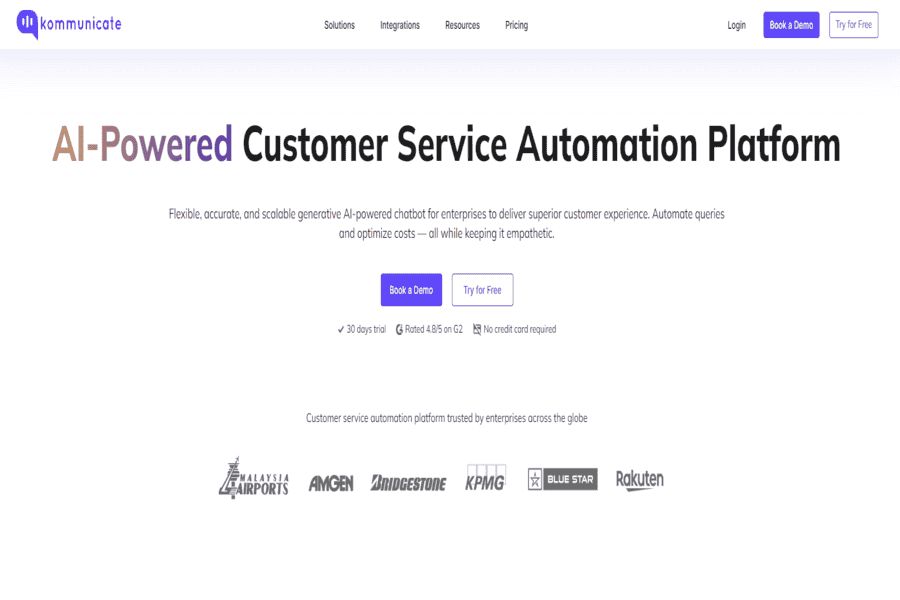
AI-powered customer service automation and chatbot solution with easy integration options.
Pros:
- Multi-channel support.
- Offers hybrid chat options for human-agent escalation.
Cons:
- Limited free plan.
- Requires configuration to get advanced features.
Pricing Package:
Free plan; premium starts at $40/month.
Social Media:
- Facebook: Kommunicate Facebook
- Instagram: Kommunicate Instagram
- Twitter: Kommunicate Twitter
- LinkedIn: Kommunicate LinkedIn
- YouTube: Kommunicate YouTube
Contact Information:
- Mail: support@kommunicate.io
BotStar
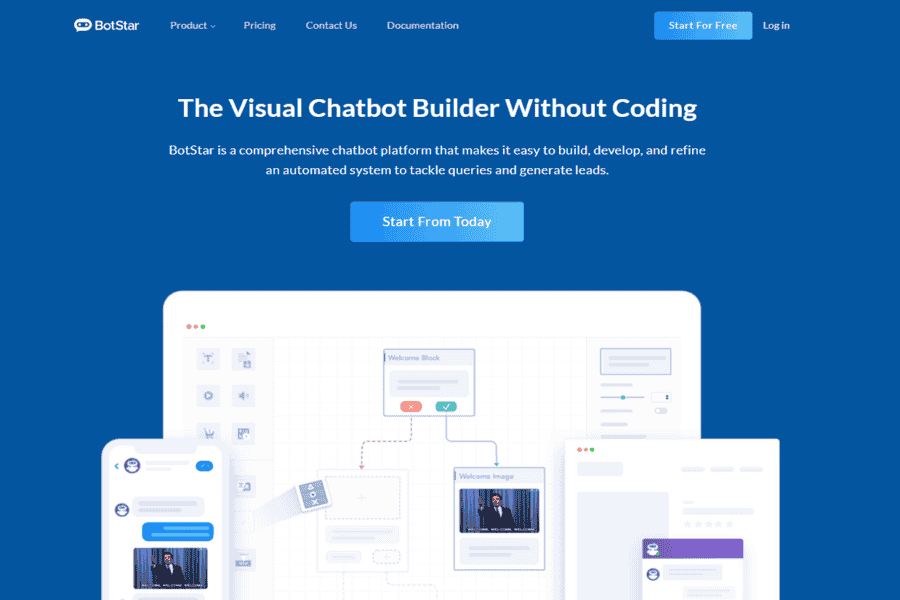
AI-powered chatbot platform designed to automate customer support and lead generation.
Pros:
- Easy-to-use interface with drag-and-drop functionality.
- Multi-platform support for web, mobile, and social media.
Cons:
- Some advanced features are restricted to higher-pricing plans.
- Initial setup might require some time.
Pricing Package:
Free plan; premium starts at $19/month.
Social Media:
- Facebook: BotStar Facebook
- Twitter: BotStar Twitter
- LinkedIn: BotStar LinkedIn.
Contact Information:
- Mail: support@botstar.com
Quriobot
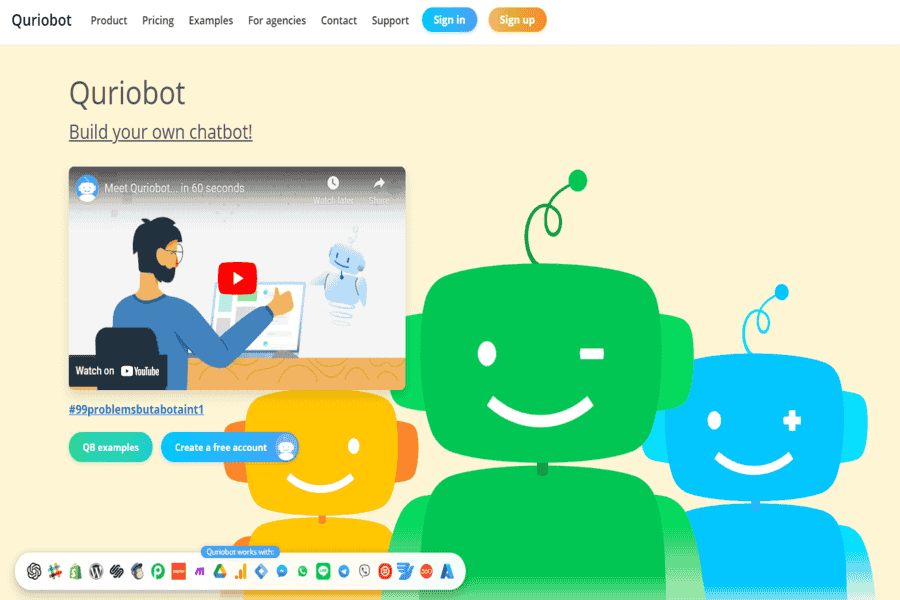
AI chatbot platform that helps automate customer service and data collection through interactive bots.
Pros:
- Simple setup process with no coding required.
- Easy integration with existing websites.
Cons:
- Limited customization options on lower-tier plans.
- More feature-rich than some competitors.
Pricing Package:
Free plan; premium starts at €29/month.
Social Media:
- Facebook: Quriobot Facebook
- Twitter: Quriobot Twitter
Contact Information:
- Mail: info@quriobot.com
Whisbi

AI-driven chatbot platform for creating engaging customer support experiences across multiple channels.
Pros:
- Supports video chat alongside text chat.
- AI-based suggestions for optimized conversations.
Cons:
- It is more expensive compared to other chatbot solutions.
- Limited analytics in the basic plans.
Pricing Package:
Custom pricing is available.
Social Media:
- Facebook: Whisbi Facebook
- Twitter: Whisbi Twitter
- LinkedIn: Whisbi LinkedIn
Contact Information:
- Mail: info@whisbi.com
Chatbot.com
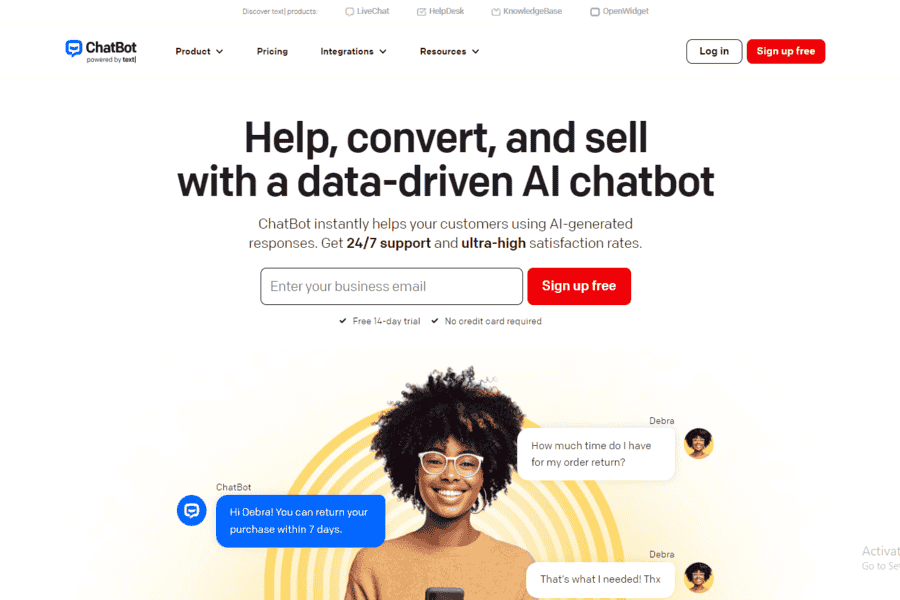
AI chatbot platform offering automated customer support solutions for businesses of all sizes.
Pros:
- No coding is required for building bots.
- Supports integration with multiple channels like Facebook, Slack, and WhatsApp.
Cons:
- Some users report that customer support is faster.
- More advanced features require higher-tier plans.
Pricing Package:
Free plan; premium starts at $50/month.
Social Media:
- Facebook: Chatbot.com Facebook
- Twitter: Chatbot.com Twitter
- LinkedIn: Chatbot.com LinkedIn
- YouTube: Chatbot.com YouTube
Contact Information:
- Mail: support@chatbot.com
Re: amaze
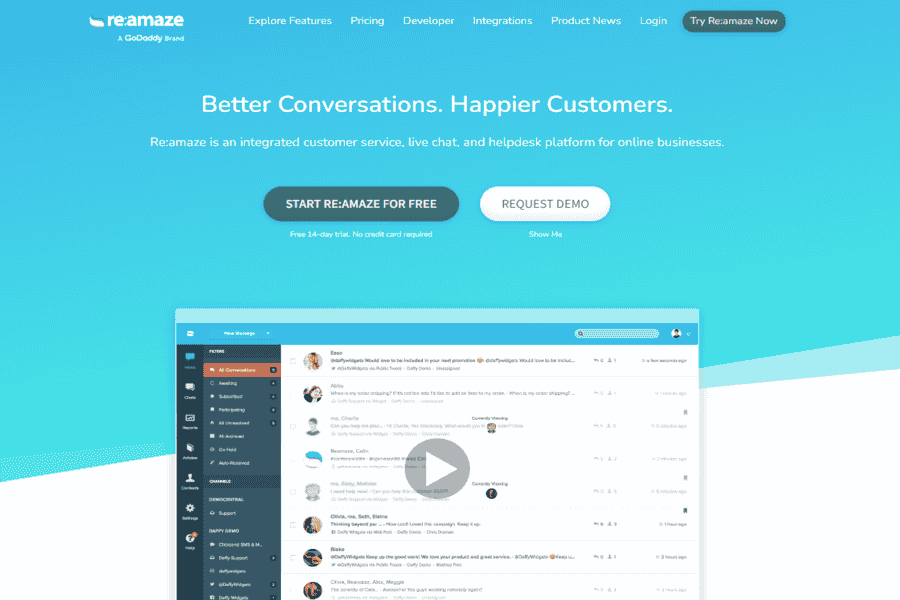
AI-powered customer support platform offering chatbots, helpdesk, and knowledge base solutions.
Pros:
- Easy integration with e-commerce platforms like Shopify.
- Multi-channel support, including email, chat, and social media.
Cons:
- Reporting features are limited to basic plans.
- The somewhat complex setup process for beginners.
Pricing Package:
Starts at $29/month.
Social Media:
- Facebook: Re: amaze Facebook
- Twitter: Re: amaze Twitter
- LinkedIn: Re: amaze LinkedIn
- YouTube: Re: amaze YouTube
Contact Information:
- Mail: support@reamaze.com
Benefits of AI Chatbots for Customer Support
AI chatbots offer a multitude of benefits for businesses, especially in the realm of customer support:
24/7 Availability:
AI chatbots can provide round-the-clock support, ensuring customer queries are addressed promptly, regardless of time zones.
Quick Response Times:
Chatbots can instantly respond to customer inquiries, significantly reducing wait times and improving overall customer satisfaction.
Scalability:
AI chatbots can handle many inquiries simultaneously without compromising quality or speed.
Cost Reduction:
Businesses can significantly lower operational costs by automating routine tasks and reducing the need for human agents.
Consistent Service:
AI chatbots provide consistent responses and adhere to predefined guidelines, ensuring a uniform customer experience.
Valuable Insights:
Chatbots can collect and analyze customer interactions, providing valuable insights into customer behavior, preferences, and pain points.
Personalized Experiences:
By leveraging AI, chatbots can tailor responses to individual customer needs, enhancing customer satisfaction and loyalty.
Challenges and Considerations
Data Privacy and Security:
We are addressing data privacy and security concerns, including compliance with regulations like GDPR and CCPA.
Ethical Implications:
We discussed the ethical implications of AI chatbots, such as bias, transparency, and accountability.
Technical Limitations:
I am acknowledging the limitations of current AI chatbot technology, such as handling complex queries and understanding context.
User Experience:
Ensuring a positive user experience by designing intuitive and user-friendly chatbot interfaces.
Future Trends in AI Chatbots
Advanced NLP Capabilities:
We are exploring the potential of advanced NLP techniques, such as sentiment analysis and intent recognition, to enhance chatbot capabilities.
Integration with Other Technologies (e.g., VR, AR):
Discussing the integration of chatbots with emerging technologies like virtual and augmented reality for immersive customer experiences.
Emotional Intelligence in Chatbots:
The development of chatbots with emotional intelligence can understand and respond to human emotions.
Personalized Customer Experiences:
Leveraging AI to deliver highly personalized customer experiences through tailored recommendations and proactive support.
Conclusion
AI-powered chatbots are no longer a futuristic concept but a tangible reality, reshaping the future of customer support. By automating routine tasks, providing instant responses, and delivering personalized experiences, chatbots are empowering businesses to enhance customer satisfaction and operational efficiency. As technology evolves, we can anticipate even more sophisticated chatbots capable of handling complex queries, understanding nuances, and fostering deeper customer connections. By embracing AI-powered chatbots, businesses can unlock new opportunities, stay ahead of the curve, and build lasting customer relationships.
Best AI Sentiment Analysis Tools for Business Insights in 2025 24 Mar 2025, 6:20 am
Sentiment analysis, a technique used to determine the emotional tone of text, has been revolutionized by the advent of artificial intelligence. By leveraging advanced machine learning algorithms, AI-powered sentiment analysis tools can accurately gauge public opinion, brand sentiment, and customer feedback from a vast array of text data, including social media, reviews, surveys, and customer support interactions. With the help of AI Sentiment Analysis Tools for Business Insights, businesses can gain valuable insights into customer sentiment and make data-driven decisions to improve their products, services, and marketing strategies. Project management tools can also help businesses manage their sentiment analysis projects and track progress.
What are AI Sentiment Analysis Tools for Business Insights?
AI sentiment analysis tools are software applications that leverage artificial intelligence to analyze text data and determine its emotional tone or sentiment. By processing large volumes of text, these tools can identify positive, negative, or neutral sentiments and specific emotions like anger, joy, or sadness.
These tools are invaluable for businesses as they provide insights into customer feedback, brand reputation, and market trends. By understanding the sentiment expressed in customer reviews, social media posts, and other text-based data, businesses can make data-driven decisions to improve products, services, and marketing strategies.
How do you use AI Sentiment Analysis Tools for Business Insights?
Data Collection:
Identify Sources:
Determine where your customer feedback resides, such as social media platforms, review websites, survey responses, or customer support emails.
Gather Data:
Collect relevant data from these sources. You can use tools to automate this process or manually gather it.
Data Cleaning and Preprocessing:
Clean Data:
Remove noise, such as irrelevant information, emojis, or stop words.
Preprocess Text:
Convert text to a suitable format for analysis, such as tokenization and stemming.
Choose an AI Sentiment Analysis Tool:
Select a Tool:
- Choose a tool that suits your needs and budget. Popular options include:
- Google Cloud Natural Language API
- Microsoft Azure Text Analytics
- IBM Watson Natural Language Understanding
- MonkeyLearn
- Amazon Comprehend
Train or Use a Pre-trained Model:
Train a Model:
If you have a specific use case, train a custom model on your data.
Use a Pre-trained Model:
For general sentiment analysis, use pre-trained models provided by the tools.
Analyze Sentiment:
Run the Analysis:
Feed your cleaned data into the chosen tool.
Interpret Results:
Analyze the output, which typically includes sentiment scores (positive, negative, or neutral) and sometimes specific emotions.
Visualize and Interpret Results:
Create Visualizations:
Use data visualization tools to create charts, graphs, or word clouds to understand the sentiment trends.
Identify Key Insights:
Analyze the results to identify key themes, patterns, and trends.
Actionable Insights:
Improve Products and Services:
Use the insights to identify areas for improvement in your products or services.
Enhance Customer Service:
Address negative sentiment and improve customer support.
Optimize Marketing Strategies:
Adjust your marketing campaigns based on customer sentiment and preferences.
Monitor Brand Reputation:
Track your brand’s reputation and proactively address any negative sentiment.
Benefits of AI Sentiment Analysis for Businesses Insights
Understanding Customer Sentiment
Businesses can gain valuable insights into customer satisfaction and dissatisfaction by analyzing customer reviews, social media posts, and survey responses. This information can be used to identify areas for improvement and enhance customer experiences.
Identifying Brand Reputation Trends
AI sentiment analysis can help businesses monitor their brand reputation over time. Businesses can proactively address potential issues and capitalize on positive sentiment by tracking sentiment trends.
Improving Product Development
Analyzing customer feedback on existing products can help businesses identify areas for improvement and inform the development of new products. By understanding customer preferences and pain points, businesses can develop products that better meet customer needs.
Enhancing Marketing Strategies
Sentiment analysis can be used to gauge the effectiveness of marketing campaigns. Businesses can refine their strategies and optimize their marketing efforts by analyzing customer reactions to marketing materials.
Monitoring Social Media
Social media platforms are a rich source of customer feedback and brand sentiment. AI-powered sentiment analysis tools can help businesses monitor social media conversations, identify brand mentions, and respond to customer concerns promptly.
AI Sentiment Analysis Tools for Business Insights
MonkeyLearn

A machine learning platform that offers sentiment analysis tools for businesses to extract insights from customer feedback, reviews, and social media.
Pricing Package:
Free plan available; premium plans start at $299/month.
Pros:
Easy-to-use interface, customizable models, real-time insights.
Cons:
Limited free plan features may require some learning for advanced usage.
Lexalytics

A text analytics platform that provides sentiment analysis, including social media, customer feedback, and reviews.
Pricing Package:
Custom pricing based on usage.
Pros:
It is highly customizable, works with large datasets, and supports multiple languages.
Cons:
It is expensive for smaller businesses with complex setups.
Aylien
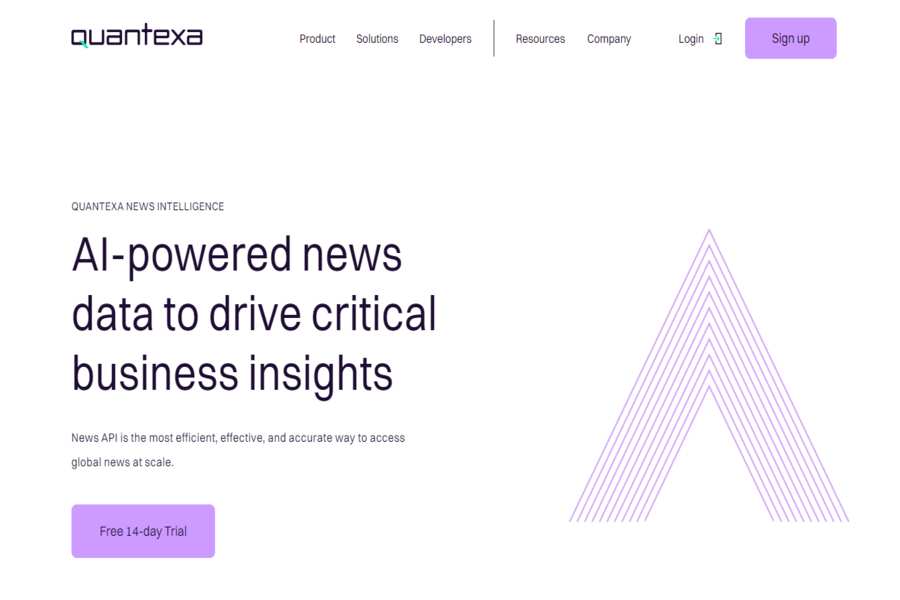
A text analysis and natural language processing (NLP) tool offering sentiment analysis capabilities for businesses to analyze news, social media, and customer feedback.
Pricing Package:
Free trial available; premium plans start at $79/month.
Pros:
Easy-to-use API, real-time sentiment analysis, multilingual support.
Cons:
There are limited features on the free plan; customization requires advanced knowledge.
Sentiment140
A Twitter sentiment analysis tool that allows businesses to track the sentiment of tweets in real time.
Pricing Package:
Free for basic use; custom pricing for enterprise features.
Pros:
They are specifically designed for fast Twitter data processing.
Cons:
Limited to Twitter, it needs broader social media analysis.
Hootsuite Insights
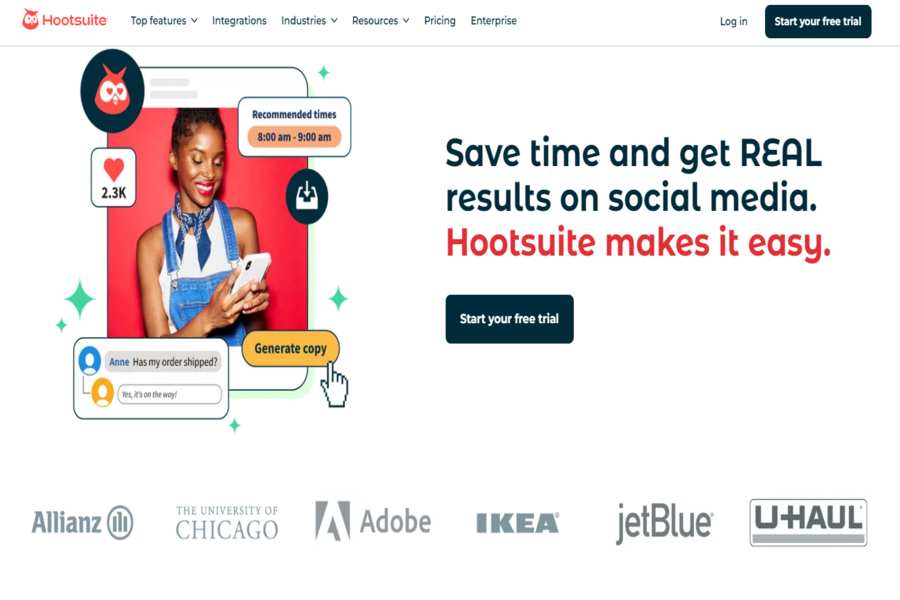
A social media management tool with integrated sentiment analysis to help businesses monitor brand sentiment across various social media platforms.
Pricing Package:
Starts at $49/month.
Pros:
Easy integration with social media platforms and real-time monitoring.
Cons:
It may be overkill for businesses that do not need to do prehneedsocial media management.
VADER Sentiment
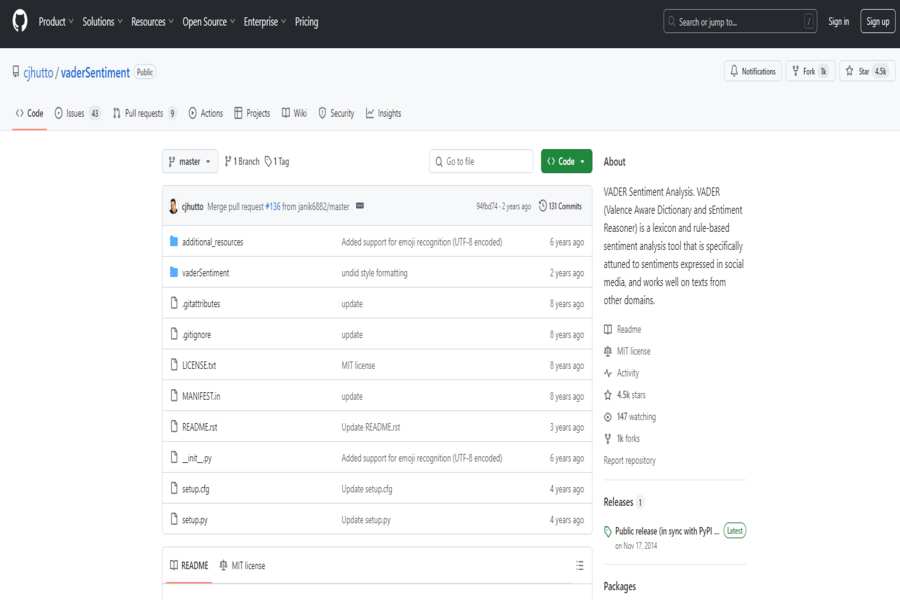
A Python-based sentiment analysis tool, VADER (Valence Aware Dictionary and Sentiment Reasoner), is designed to analyze social media content and text.
Pricing Package:
Free (open-source).
Pros:
Free, works well with social media real-time analysis.
Cons:
It requires technical knowledge and may need to be more accurate for longer texts.
Clarabridge
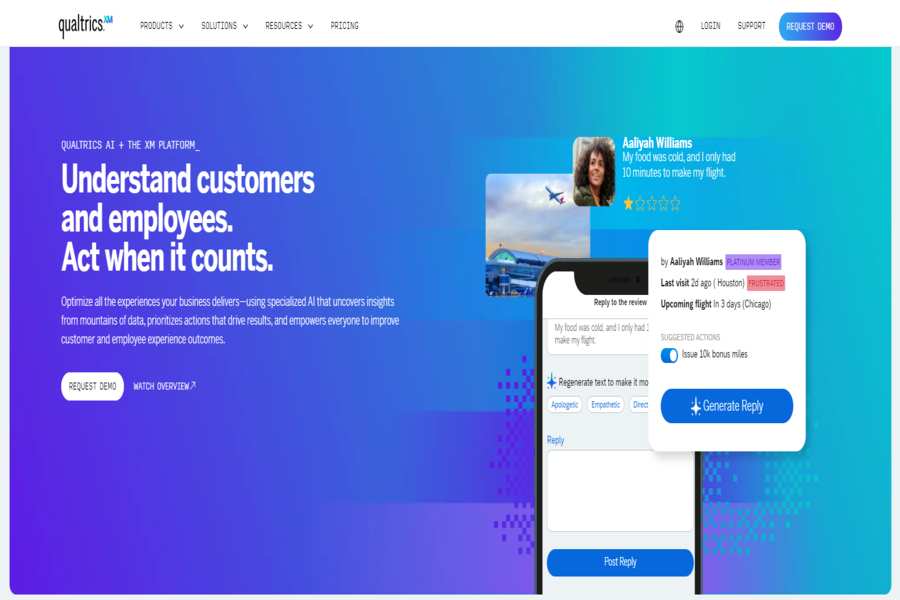
A customer experience management platform that provides sentiment analysis as part of a broader text analytics suite.
Pricing Package:
Custom pricing based on enterprise needs.
Pros:
In-depth sentiment analysis works with multi-channel feedback.
Cons:
High cost, may require training to use effectively.
Brandwatch

A social media monitoring and analytics tool with sentiment analysis features to help businesses understand, analyze, and understand public opinion.
Pricing Package:
Custom pricing based on features and usage.
Pros:
Excellent for social media insights and extensive data sources.
Cons:
Expenses for smaller businesses may need to be simplified for casual users.
SentiOne
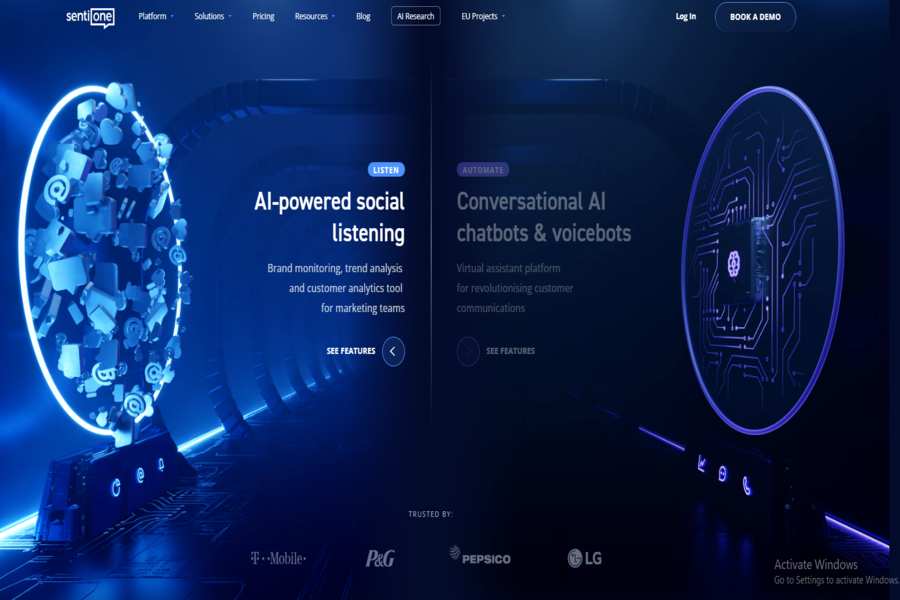
An AI-powered platform for real-time social listening and sentiment analysis, helping businesses monitor their online presence.
Pricing Package:
Starts at $199/month.
Pros:
Real-time analysis, multilingual support, and social media integration.
Cons:
Limited integrations with non-social media data.
Repustate
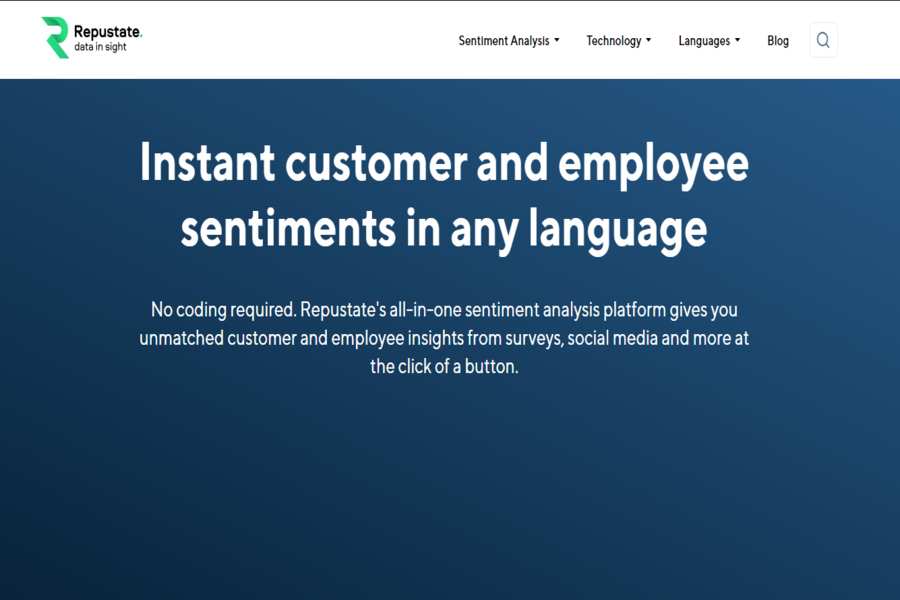
A sentiment analysis tool that uses AI and NLP to process customer reviews, social media, and support tickets for actionable insights.
Pricing Package:
Starts at $49/month.
Pros:
Highly accurate, real-time monitoring, supports multiple languages.
Cons:
Limited customization options in the lower plans.
MonkeyLearn Studio

A sentiment analysis tool that integrates machine learning to analyze text data from multiple sources like reviews, support tickets, and social media.
Pricing Package:
Free plan available; premium plans start at $299/month.
Pros:
Intuitive interface, easy to train with custom data.
Cons:
The free plan is expensive compared to premium plans and has limited advanced features.
TextBlob

An open-source Python library for processing textual data, including sentiment analysis.
Pricing Package:
Free (open-source).
Pros:
Simple to use, open-source, and supports various languages.
Cons:
It is limited to Python users and is less advanced than paid tools.
Quid

An advanced data analytics platform that integrates sentiment analysis with visualizations for deep insights into customer sentiment.
Pricing Package:
Custom pricing.
Pros:
Strong data visualization tools and AI-driven insights.
Cons:
Expensive, steep learning curve.
Talkwalker

A social listening tool with AI-driven sentiment analysis for tracking online conversations about your brand, products, and services.
Pricing Package:
Starts at $9,600/year.
Pros:
Comprehensive social media monitoring multilingual support.
Cons:
High cost for smaller businesses.
Social Mention

A free social media search and analysis tool that provides sentiment analysis to measure brand awareness and customer engagement.
Pricing Package:
Free.
Pros:
Free, easy to use, tracks mentions across multiple social media platforms.
Cons:
Limited features compared to paid tools, no real-time alerts.
Sentiment Analyzer
A simple AI-based sentiment analysis tool for analyzing text from emails, surveys, and social media content.
Pricing Package:
Free for basic usage, paid plans start at $19/month.
Pros:
Quick and easy to use, no setup required.
Cons:
Lacks advanced customization options.
Zotabox

A sentiment analysis tool primarily used to analyze customer feedback through survey responses, reviews, and contact forms.
Pricing Package:
The free basic version paid plans start at $29/month.
Pros:
Easy to implement, good for small businesses.
Cons:
Limited reporting capabilities basic features.
Datumbox
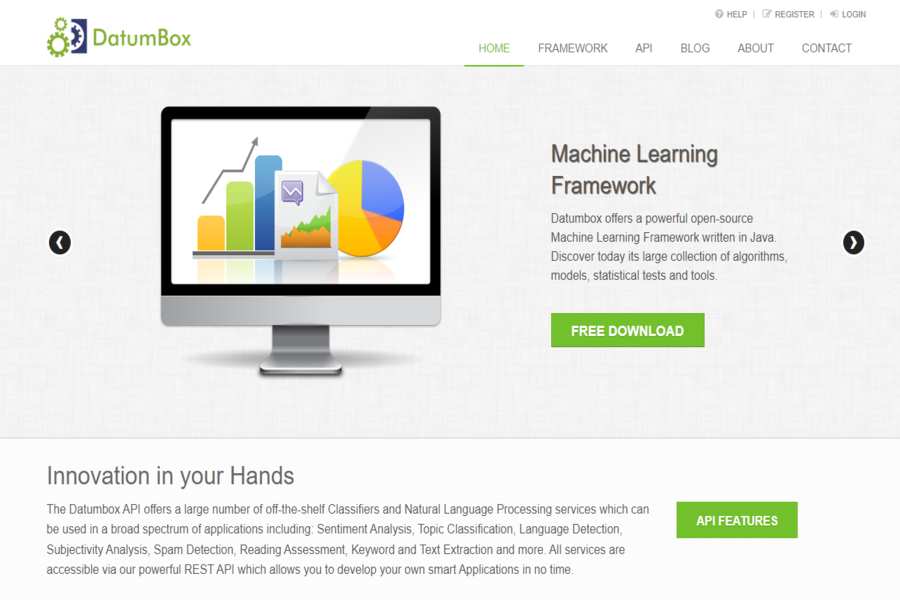
A machine learning platform with tools for sentiment analysis that can analyze reviews, tweets, and other text-based feedback.
Pricing Package:
Free API access; premium plans start at $99/month.
Pros:
Flexible, easy-to-use API, accurate results.
Cons:
Requires technical knowledge for advanced use.
BuzzSumo
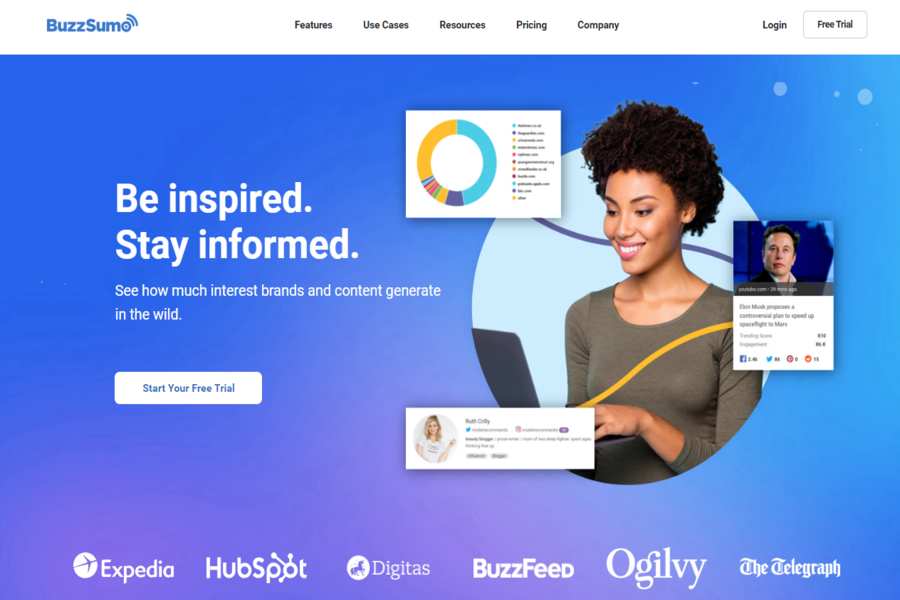
A content research tool that provides sentiment analysis as part of its suite of tools for tracking brand mentions, competitor analysis, and influencer outreach.
Pricing Package:
Starts at $99/month.
Pros:
Excellent for content marketing insights and real-time data.
Cons:
Focuses more on content marketing than sentiment analysis alone.
GoSentiment
A sentiment analysis tool that provides real-time insights from customer reviews, social media comments, and more.
Pricing Package:
Starts at $10/month.
Pros:
Affordable, easy-to-use, real-time sentiment analysis.
Cons:
Basic features, limited integrations.
Challenges and Limitations of AI Sentiment Analysis for Businesses Insights
While AI sentiment analysis has made significant strides, it still faces several challenges and limitations:
Data Quality and Bias:
Data Quality:
The accuracy of sentiment analysis heavily relies on the quality of the input data. Noisy or biased data can lead to inaccurate results.
Data Bias:
If the training data is biased, the model may exhibit bias in its predictions, leading to skewed results.
Contextual Understanding:
Sarcasm and Irony:
AI models often struggle to detect sarcasm, irony, and other forms of figurative language, as they rely on subtle cues and context.
Cultural Nuances:
Different cultures have unique ways of expressing sentiment, which can be challenging for AI models to understand.
Sentiment Intensity:
Nuances in Sentiment:
AI models may struggle to differentiate between subtle variations in sentiment intensity, such as the difference between “slightly positive” and “very positive.”
Domain-Specific Sentiment:
Domain-Specific Language:
Some domains, like finance or healthcare, have specific language and jargon that can be challenging for general-purpose sentiment analysis models.
Evolving Language and Slang:
Dynamic Language:
Languages constantly evolve, with new words, slang, and expressions emerging. AI models may need help to keep up with these changes.
Future Trends in AI Sentiment Analysis for Businesses Insights
AI sentiment analysis is a rapidly evolving field with several promising trends on the horizon:
Real-time Sentiment Analysis:
Instant Insights:
Real-time analysis of social media feeds, news articles, and customer reviews will allow businesses to respond to emerging trends, crises, or opportunities quickly.
Proactive Crisis Management:
By identifying negative sentiment in real time, businesses can proactively address issues and mitigate potential damage to their brand reputation.
Advanced Natural Language Processing (NLP):
Contextual Understanding:
NLP advancements will improve AI models of texts and text context, including sarcasm, irony, and cultural nuances.
Sentiment Analysis at the Sentence Level:
AI will be able to analyze sentiment at a more granular level, identifying positive and negative sentiments within individual sentences.
Multimodal Sentiment Analysis:
Combining Text, Image, and Video:
AI can provide a more comprehensive understanding of sentiment by simultaneously analyzing text, images, and video data.
Emotion Detection:
AI models can detect anger, joy, and sadness from facial expressions and vocal tones.
Ethical AI and Bias Mitigation:
Fairness and Bias Mitigation:
AI models will be developed with fairness and bias mitigation to ensure accurate and unbiased sentiment analysis.
Transparent AI:
AI algorithms will be made more transparent, allowing users to understand how decisions are made.
Integration with Other AI Technologies:
AI-Powered Chatbots:
Sentiment analysis can be integrated with chatbots to improve customer service and provide personalized support.
Predictive Analytics:
AI can predict future trends by analyzing past sentiment trends and help businesses make informed decisions.
Conclusion
AI sentiment analysis has become an indispensable tool for businesses seeking to understand customer sentiment, improve brand reputation, and make data-driven decisions. By leveraging the power of AI, businesses can gain valuable insights from vast amounts of text data, enabling them to stay ahead of the competition. As AI technology evolves, we can expect even more sophisticated and accurate sentiment analysis tools to emerge.
Best Text-to-Video AI Generators in 2025 24 Mar 2025, 6:19 am
In recent years, artificial intelligence has made significant strides in various fields, including video generation. One of the most exciting advancements is the emergence of text-to-video AI generators. These tools can potentially revolutionize content creation, allowing users to transform written text into compelling videos with minimal effort.
With the help of AI video generator tools, creators can easily create explainer videos, product demos, and social media content without the need for extensive video editing skills or expensive equipment.
What is Text to Video AI Generators?
Text-to-video AI generators are artificial intelligence software that automatically creates videos from written text input. By analyzing the text and leveraging vast amounts of data, these tools can generate videos with visuals, audio, and text overlays, all based on the provided prompts.
Can AI Make Videos?
Yes, AI can indeed make videos. Text-to-video AI generators are a prime example of this capability. These tools use advanced algorithms to analyze text input and generate corresponding visual and audio elements. While the quality of AI-generated videos is still evolving, they are becoming increasingly sophisticated and realistic.
Transforming Text to Video With AI
Text-to-video AI generators are revolutionizing the way we create video content. By leveraging the power of artificial intelligence, these tools can automatically transform written text into engaging videos.
Text Input:
Script:
Provide the AI with a detailed script outlining the story, dialogue, and desired tone.
Prompts:
Give the AI concise prompts or keywords to guide the video generation process.
AI Processing:
Text Analysis:
The AI analyzes the text to understand the content and context.
Scene Generation:
The AI generates visual scenes based on the text, creating storyboards or scripts.
Style and Tone:
The AI determines the appropriate style and tone, such as humorous, informative, or persuasive.
Video Generation:
Image and Video Creation:
The AI generates images, animations, and video clips to illustrate the text.
Stock Footage:
The AI can also incorporate relevant stock footage to enhance the video.
Text-to-Speech:
AI-powered text-to-speech technology converts text into natural-sounding audio.
Video Editing and Rendering:
Assembly:
The AI assembles the generated visual and audio elements into a coherent video sequence.
Editing:
The AI can edit the video, adding transitions, effects, and music.
Rendering:
The final video is rendered and exported in various formats.
What Makes a Great AI Video Generator?
A great AI video generator should possess the following qualities:
High-Quality Video Output:
Visual Clarity:
The generated videos should have high resolution, sharp images, and smooth transitions.
Audio Quality:
Clear audio with appropriate background music and voiceovers.
Professional Aesthetics:
The videos should adhere to professional video production standards.
Customization Options:
Style and Tone:
Users should be able to customize the video’s style, tone, and mood to fit their specific needs.
Brand Integration:
The ability to incorporate branding elements such as logos, color schemes, and fonts.
Length and Format:
Flexibility to generate videos of various lengths and formats (e.g., short social media clips and long-form explainer videos).
Fast Processing Speed:
Quick Turnaround:
The AI should be able to generate videos efficiently, reducing production time.
Real-time Editing:
The ability to make changes to the script or visuals in real-time.
Ease of Use:
User-Friendly Interface:
The tool should have a simple and intuitive interface, making it accessible to users of all technical backgrounds.
Minimal Technical Knowledge:
Users should be able to operate the tool without extensive technical expertise.
Versatility:
Diverse Content:
The AI should be able to handle a wide range of text inputs, from simple product descriptions to complex narratives.
Multiple Languages:
Support for multiple languages to cater to a global audience.
Adaptability:
The ability to adapt to different styles, tones, and genres.
Top Tools for Text-to-Video AI Generators
Synthesia

The AI-powered platform that converts text into high-quality videos using customizable avatars.
Pros:
User-friendly, multilingual support, realistic avatars.
Cons:
Limited customization of avatars for free users.
Pricing Package:
Starts at $30/month.
Social Media:
- Facebook: Synthesia
- Instagram: @synthesia.io
- Twitter: Synthesia
- LinkedIn: Synthesia
- YouTube: Synthesia
Contact Information:
- Email ID: info@synthesia.io
Pictory

Text-to-video software that converts written content into engaging short videos.
Pros:
Templates are available, auto-captioning, and easy to use.
Cons:
Limited advanced editing tools.
Pricing Package:
Starts at $19/month.
Social Media:
- Twitter: Pictory AI
- LinkedIn: Pictory AI
- YouTube: Pictory AI
Contact Information:
- Email ID: support@pictory.ai
Runway
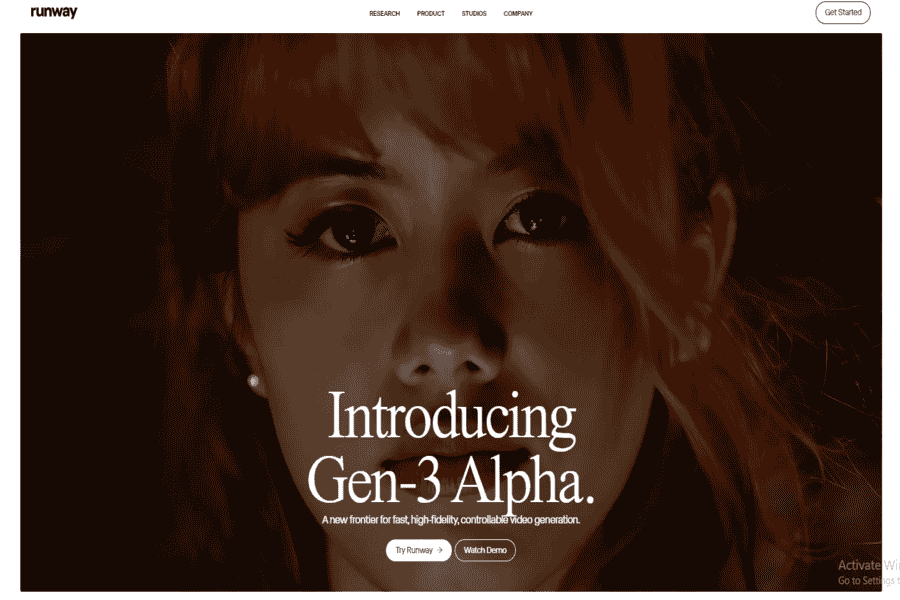
AI platform that allows users to generate videos from text or edit existing ones seamlessly.
Pros:
Creative editing tools support 3D animations and real-time processing.
Cons:
The steeper learning curve for beginners.
Pricing Package:
Free plan available; Pro starts at $12/month.
Social Media:
Contact Information:
- Email ID: support@runwayml.com
Lumen5
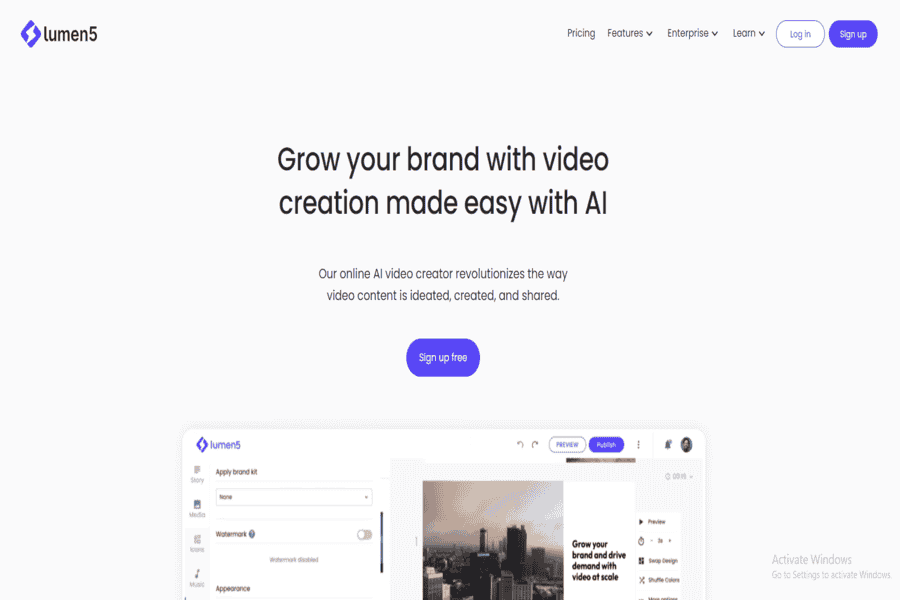
AI-powered video creation platform designed to convert text into professional videos.
Pros:
Drag-and-drop interface, social media integration, content library.
Cons:
Limited customization for free users.
Pricing Package:
Free plan available; Pro starts at $19/month.
Social Media:
Contact Information:
- Email ID: support@lumen5.com
DeepBrain AI
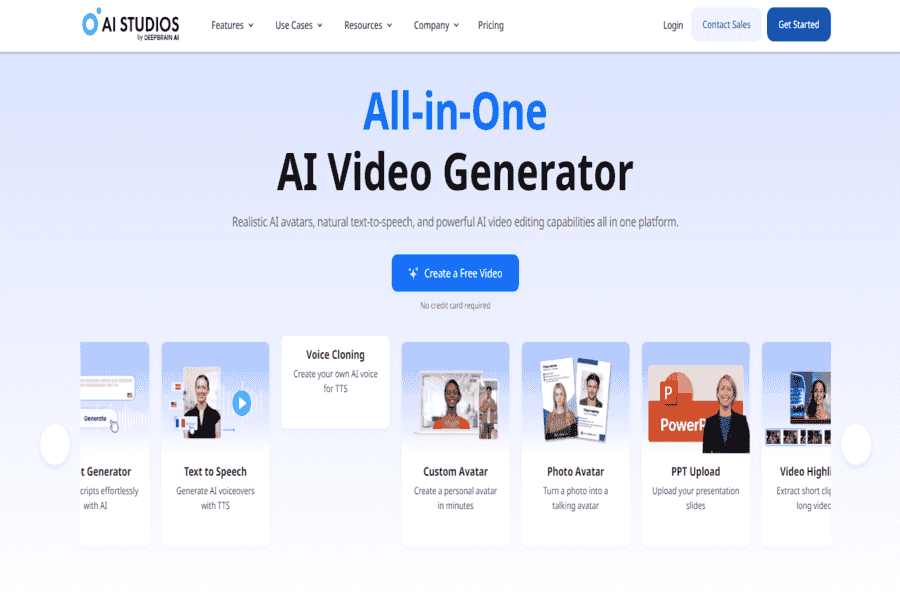
Offers text-to-video generation using realistic AI avatars and natural language processing.
Pros:
High-quality avatars, fast rendering.
Cons:
Requires subscription for advanced features.
Pricing Package:
Plans start at $29/month.
Social Media:
- Facebook: DeepBrain AI
- Twitter: DeepBrain AI
- LinkedIn: DeepBrain AI
- YouTube: DeepBrain AI
Contact Information:
- Email ID: info@deepbrain.io
Designs.ai
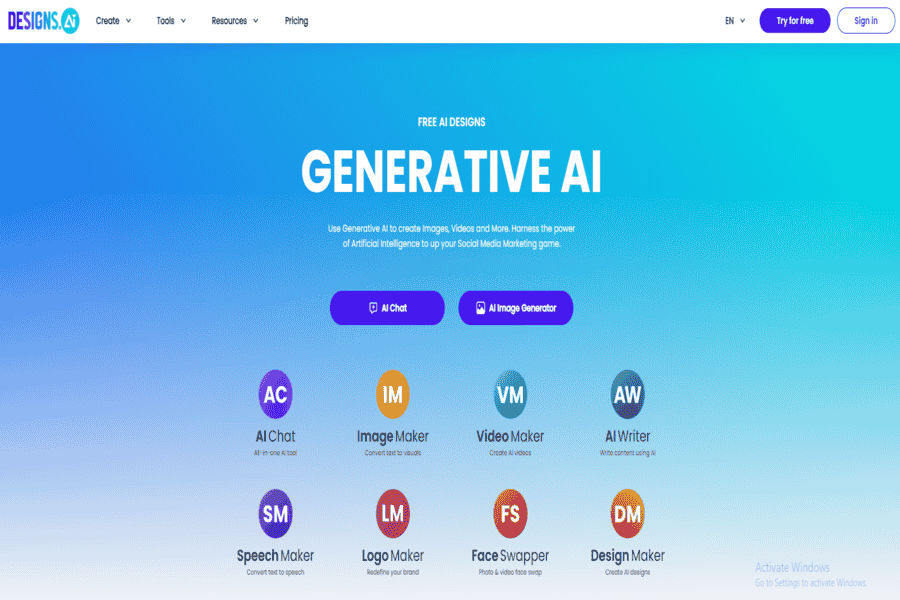
An AI-powered platform that generates videos, logos, and other multimedia content from text.
Pros:
Wide range of templates, quick video generation, and multi-language support.
Cons:
Limited editing options for complex videos.
Pricing Package:
Plans start at $29/month.
Social Media:
- Facebook: Designs.ai
- Instagram: @designs.ai
- Twitter: Designs.ai
- LinkedIn: Designs.ai
- YouTube: Designs.ai
Contact Information:
- Email ID: support@designs.ai
Wisecut

A text-based video editor that uses AI to auto-generate videos with subtitles and voiceovers.
Pros:
Automatic translation, easy subtitle addition, time-saving.
Cons:
Limited advanced video editing tools.
Pricing Package:
Free plan available; Pro starts at $10/month.
Social Media:
- Twitter: Wisecut
Contact Information:
- Email ID: support@wisecut.video
Animoto

AI video creation tool that transforms text and images into professional-quality videos.
Pros:
Drag-and-drop interface, customizable templates, social media integration.
Cons:
Limited video effects for free users.
Pricing Package:
Free plan available; Basic starts at $16/month.
Social Media:
Contact Information:
- Email ID: help@animoto.com
Elai.io
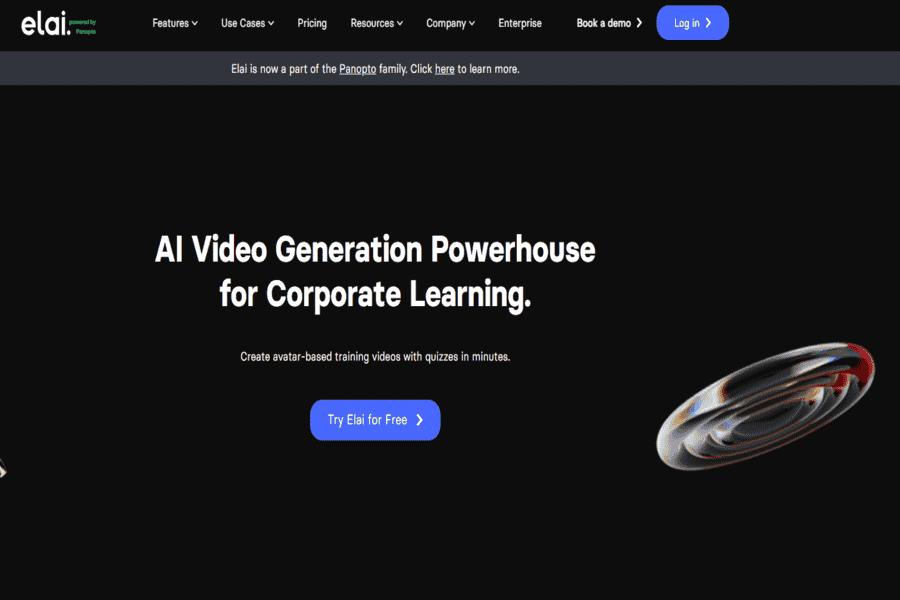
The AI-powered platform for creating videos with avatars by inputting text or PowerPoint slides.
Pros:
Realistic AI avatars, easy PowerPoint integration.
Cons:
Limited free features.
Pricing Package:
Starts at $29/month.
Social Media:
Contact Information:
- Email ID: contact@elai.io
DeepMotion
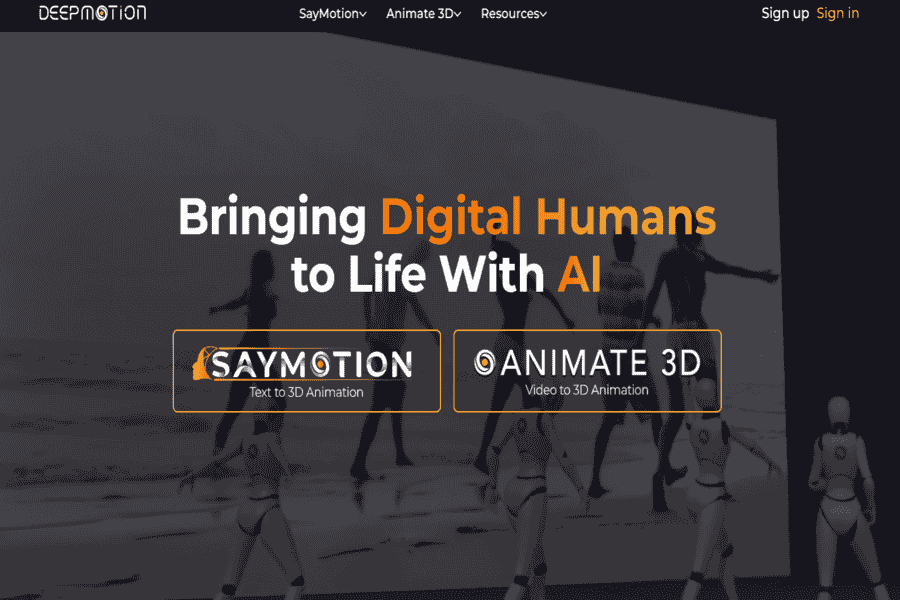
AI-driven animation tool that turns text or motion data into animated videos.
Pros:
Advanced motion capture, customizable animation.
Cons:
Requires some technical understanding.
Pricing Package:
Free plan available; Paid plans start at $29/month.
Social Media:
- Facebook: DeepMotion
- Instagram: @deepmotioninc
- Twitter: DeepMotion
- LinkedIn: DeepMotion
- YouTube: DeepMotion
Contact Information:
- Email ID: info@deepmotion.com
Future Trends of Text-to-Video AI Generators
The future of text-to-video AI generators is brimming with exciting possibilities. Here are some key trends to watch:
Enhanced Video Quality:
AI models will continue to improve, resulting in higher resolution, smoother frame rates, and more realistic visuals.
Advanced Realism:
AI-generated characters and environments will become increasingly indistinguishable from real-world footage.
Increased Customization:
Users will have greater control over generated videos’ style, tone, and mood, allowing for more personalized and tailored content.
Seamless Integration with Existing Tools:
AI video generators will integrate seamlessly with popular video editing software, making refining and enhancing generated content easier.
Ethical Considerations and Responsible AI:
As AI technology advances, there will be a growing emphasis on ethical guidelines and responsible AI practices to mitigate potential risks, such as deepfakes and misinformation.
Real-time Generation:
AI models can generate videos in real-time, enabling interactive and dynamic content creation.
Multimodal Input:
AI video generators can process input formats, including text, images, and audio, to create more diverse and engaging content.
AI-Powered Video Editing:
AI will automate video editing, color grading, and sound mixing, making video production more efficient.
Conclusion
Text-to-video AI generators represent a significant leap forward in artificial intelligence. By automating the video creation process, these tools empower individuals and businesses to produce high-quality videos efficiently. As AI technology continues to evolve, we can expect even more innovative and powerful text-to-video tools that will shape the future of content creation.
Best AI Code Generators in 2025 for Developers and Engineers 18 Mar 2025, 1:58 am
In the ever-evolving landscape of software development, artificial intelligence (AI) has emerged as a powerful tool, revolutionizing various aspects of the development process. One such innovation is AI code generators, which leverage the power of machine learning to automate code generation tasks. These tools have the potential to significantly boost developer productivity, improve code quality, and accelerate software development cycles. By utilizing project management tools in conjunction with AI code generators, development teams can streamline their workflows, track progress effectively, and ensure that AI-generated code seamlessly integrates into their overall project objectives.
What are AI Code Generators for Developers and Engineers?
AI code generators are sophisticated software applications that utilize advanced algorithms and machine learning models to automatically generate code snippets or entire functions based on natural language prompts or code context. These tools learn to identify patterns, understand programming languages, and generate relevant code suggestions by analyzing vast amounts of code data.
Why Use AI Code Generators for Developers and Engineers?
AI code generators have revolutionized how developers and engineers work, offering benefits that can significantly enhance productivity, code quality, and overall efficiency.
Increased Productivity
Automation of Repetitive Tasks:
AI code generators can automate boilerplate code generation, such as repetitive loops, conditional statements, or basic function implementations. This frees up developers to focus on higher-level problem-solving and strategic thinking.
Rapid Prototyping:
AI tools accelerate the prototyping process by quickly generating initial code structures and functionalities, allowing developers to iterate faster and experiment with different approaches.
Improved Code Quality
Adherence to Coding Standards:
AI code generators can be trained on specific coding standards and style guides, ensuring that generated code is consistent and maintainable.
Reduced Bugs and Errors:
These tools can identify and correct common coding mistakes, such as syntax errors, logical errors, and potential vulnerabilities.
Enhanced Code Readability:
AI-generated code can be formatted and structured in a way that is easy to understand and maintain, improving overall code quality.
Accelerated Learning
Exposure to Different Programming Styles:
AI code generators can suggest alternative approaches and programming paradigms by analyzing and learning from vast amounts of code, helping developers expand their skill sets.
Hands-on Learning Experience:
AI tools can provide interactive learning experiences, allowing developers to experiment with different code snippets and observe the results in real time.
Enhanced Collaboration
Shared Code Generation Platform:
AI code generators can be integrated into collaborative development environments, enabling team members to share code snippets, discuss potential improvements, and work together more efficiently.
Knowledge Sharing:
AI tools can uncover hidden insights and best practices by analyzing the codebase and identifying patterns, fostering knowledge sharing within development teams.
Benefits of AI Code Generators for Developers and Engineers
Accelerated Development Cycles
Rapid Prototyping:
AI tools can quickly generate basic code structures, allowing developers to iterate faster and experiment with different approaches.
Repetitive Task Automation:
Automating boilerplate code generation and unit tests saves significant time and effort.
Enhanced Code Quality
Bug Reduction:
AI-powered tools can identify and fix potential bugs early in development, leading to more reliable software.
Improved Code Consistency:
AI generators ensure consistent code quality across projects by adhering to coding standards and style guides.
Security Enhancement:
AI can help identify and address security vulnerabilities, making applications more secure.
Increased Productivity
Focused Problem-Solving:
Developers can concentrate on complex problem-solving and strategic thinking by automating routine tasks.
Learning Acceleration:
AI tools can provide learning opportunities by suggesting code improvements and explaining complex concepts.
Fostered Innovation
Novel Approaches:
AI can generate creative code solutions by exploring diverse programming techniques and algorithms.
Experimentation Encouragement:
AI-powered tools can help developers experiment with different ideas without fear of making mistakes.
Improved Collaboration
Shared Code Generation Platform:
AI code generators can facilitate collaboration among team members by providing a shared platform for code generation and review.
Knowledge Sharing:
By analyzing code patterns and best practices, AI tools can help teams learn from each other and improve their skills.
Drawbacks of AI Code Generators for Developers and Engineers
While AI code generators offer significant benefits, it’s essential to recognize their limitations:
Dependency on Data Quality:
Garbage In, Garbage Out:
The quality of AI-generated code is directly tied to the quality of the training data. Poor or biased data can lead to suboptimal or incorrect code suggestions.
Data Privacy and Security:
Using proprietary or sensitive data for training AI models raises concerns about data privacy and security.
Overreliance Risk:
Reduced Critical Thinking:
Excessive reliance on AI tools can diminish a developer’s critical thinking and problem-solving abilities.
Loss of Creativity:
Overreliance can stifle creativity and innovation as developers may become too dependent on automated solutions.
Security Vulnerabilities:
Unintended Consequences:
AI-generated code may inadvertently introduce security vulnerabilities if not carefully reviewed and tested.
Malicious Use:
AI tools could be misused to generate malicious code or launch attacks.
Limited Complexity Handling:
Complex Algorithms:
AI code generators may need help with highly complex algorithms or specialized domains that require deep domain expertise.
Edge Cases:
AI models may be unable to handle edge cases or unexpected input scenarios.
Intellectual Property Concerns:
Copyright and Licensing:
The ownership and licensing of AI-generated code can be complex, especially when using proprietary data or models.
Key Features to Look for in an AI Code Generator
Language Support:
Versatility:
A robust AI code generator should support various programming languages, including popular ones like Python, JavaScript, Java, and C++.
Domain-Specific Languages:
Support for domain-specific languages (DSLs) can be valuable for developers working in specialized fields.
Code Completion:
Contextual Awareness:
The tool should be able to understand the context of your code and suggest relevant completions, including variable names, function arguments, and code snippets.
Intelligent Suggestions:
The suggestions should be accurate, efficient, and tailored to your coding style.
Code Generation:
Natural Language Understanding:
Generating code from natural language descriptions can significantly speed up development.
Complex Code Generation:
The tool should be capable of generating complex code structures, such as algorithms, data structures, and API integrations.
Code Refactoring:
Performance Optimization:
The tool should be able to suggest improvements to code performance, such as identifying bottlenecks and optimizing algorithms.
Readability Enhancement:
The tool can help improve code readability by suggesting better variable names, function names, and code formatting.
IDE Integration:
Seamless Workflow:
Integration with popular IDEs like Visual Studio Code, IntelliJ IDEA, and PyCharm allows developers to use the tool directly within their preferred development environment.
Contextual Assistance:
The tool can provide context-specific suggestions and recommendations based on the current project.
Customization Options:
Personalization:
Developers should be able to customize the tool’s behavior to match their coding style and preferences.
Project-Specific Configuration:
The tool should be able to adapt to different project requirements, such as code standards, frameworks, and libraries.
Top AI Tools for AI Code Generation
GitHub Copilot
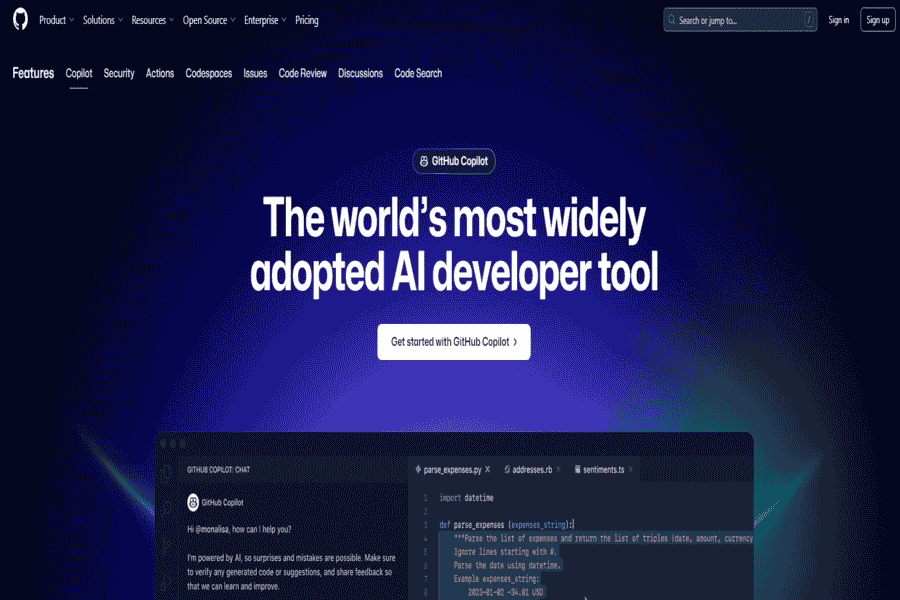
GitHub Copilot, developed by OpenAI and GitHub, is an AI-powered code generation tool that integrates with IDEs like Visual Studio Code. It suggests complete lines or blocks of code based on context.
Pros:
- Seamless integration with popular IDEs.
- Supports multiple programming languages.
- Improves coding efficiency and reduces repetitive tasks.
Cons:
- Limited contextual understanding in complex scenarios.
- Dependent on internet connectivity.
- Requires a GitHub account for usage.
Pricing Package:
- Individual: $10/month or $100/year.
- Business: Custom pricing.
Social Media:
- Facebook: https://www.facebook.com/github
- Instagram: https://www.instagram.com/github
- Twitter: https://twitter.com/github
- LinkedIn: https://www.linkedin.com/company/github
- YouTube: https://www.youtube.com/github
Contact Information:
- Email: support@github.com
Tabnine
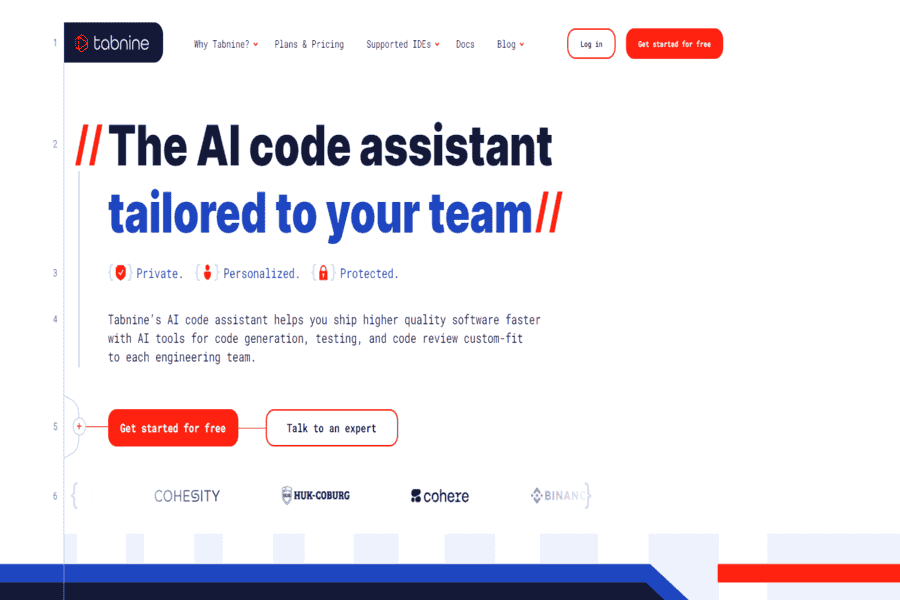
Tabnine is an AI-powered coding assistant that enhances software development productivity by offering accurate, context-aware code completions.
Pros:
- Supports over 20 programming languages.
- Local and cloud-based options.
- Custom model training for enterprises.
Cons:
- Performance depends on IDE compatibility.
- Premium features can be expensive for individuals.
Pricing Package:
- Free: Limited features.
- Pro: $12/month per user.
- Team: $40/month for 3 users.
Social Media:
- Facebook: https://www.facebook.com/tabnine
- Twitter: https://twitter.com/tabnine
- LinkedIn: https://www.linkedin.com/company/tabnine
Contact Information:
- Email: support@tabnine.com
Replit Ghostwriter
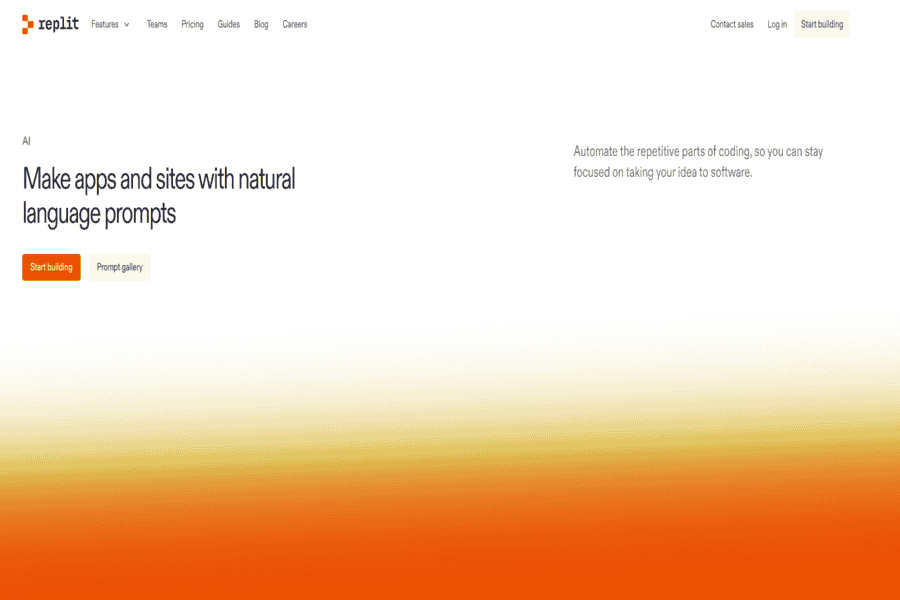
Replit Ghostwriter is a built-in AI coding assistant designed for Replit’s collaborative programming environment. It provides intelligent code completions and debugging tips.
Pros:
- It is fully integrated with Replit’s collaborative platform.
- Offers debugging insights.
- Easy for beginner developers.
Cons:
- Limited to Replit’s environment.
- It is not as feature-rich as standalone tools like Copilot.
Pricing Package:
- Included in Replit Pro plan ($20/month).
Social Media:
- Facebook: https://www.facebook.com/replitapp
- Instagram: https://www.instagram.com/replitapp
- Twitter: https://twitter.com/replit
- LinkedIn: https://www.linkedin.com/company/replit
- YouTube: https://www.youtube.com/replit
Contact Information:
- Email: support@replit.com
Amazon CodeWhisperer

Amazon CodeWhisperer is an AI-powered coding assistant designed for cloud-based application development. It integrates with AWS tools to help developers write secure and efficient code.
Pros:
- Built-in support for AWS-specific APIs.
- Focus on security with recommendations for fixing vulnerabilities.
- Free tier available.
Cons:
- Best suited for AWS users; limited outside of that.
- Requires familiarity with the AWS ecosystem.
Pricing Package:
- Free Tier: Limited functionality.
- Professional: $19/user/month.
Social Media:
- Facebook: https://www.facebook.com/awseducate
- Instagram: https://www.instagram.com/amazonwebservices
- Twitter: https://twitter.com/awscloud
- LinkedIn: https://www.linkedin.com/company/amazon-web-services
- YouTube: https://www.youtube.com/user/AmazonWebServices
Contact Information:
- Email: aws-support@amazon.com
Kite
Kite is an AI-powered autocomplete tool that helps developers write code faster and with fewer errors by offering intelligent code suggestions in real-time.
Pros:
- Works offline for privacy-conscious users.
- Supports over 16 programming languages.
- Lightweight and easy to install.
Cons:
- Limited to code completion; no debugging features.
- It was discontinued in 2022 (but still used by some legacy users).
Pricing Package:
- Free (discontinued).
Codex by OpenAI
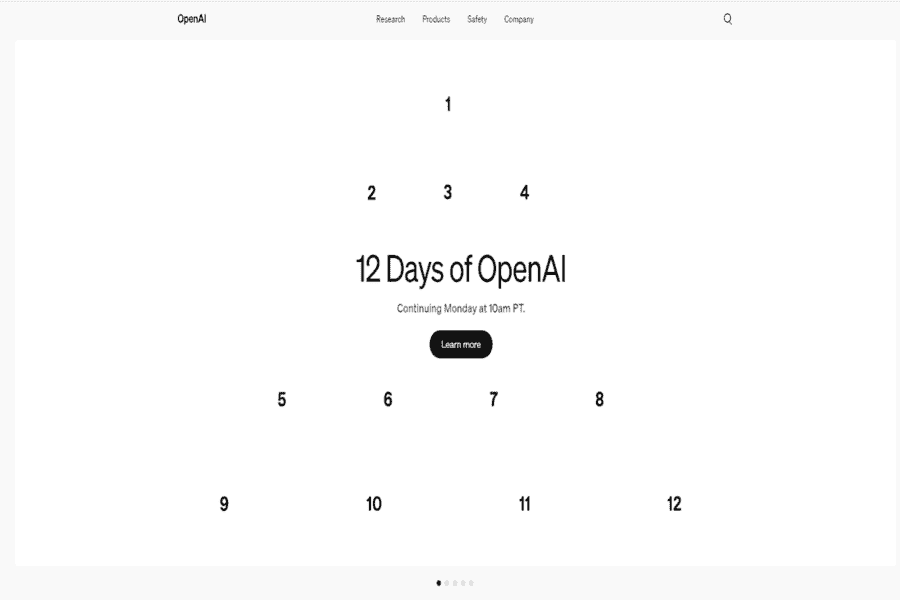
Codex is the AI model behind GitHub Copilot, capable of writing code, answering coding questions, and converting natural language into code across multiple programming languages.
Pros:
- Excellent natural language understanding.
- Extensive language and framework support.
- Available through OpenAI API.
Cons:
- Requires API integration for full functionality.
- Pricing is usage-based and can be costly for high demand.
Pricing Package:
- Usage-based pricing via OpenAI API.
Social Media:
- Twitter: https://twitter.com/openai
- LinkedIn: https://www.linkedin.com/company/openai
Contact Information:
- Email: support@openai.com
DeepCode (now part of Snyk)
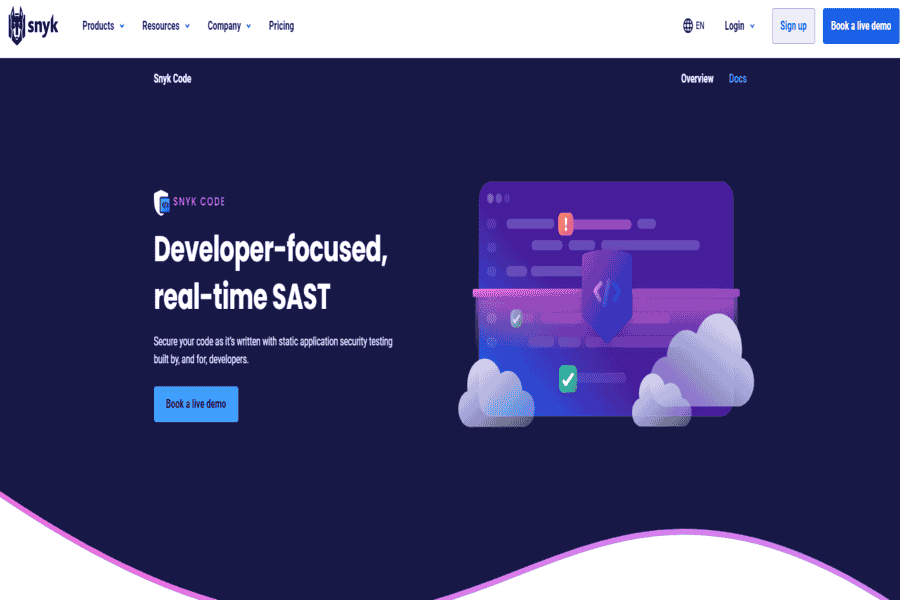
DeepCode uses AI to analyze codebases for bugs, vulnerabilities, and potential improvements. It is now integrated into Snyk’s product suite for secure development.
Pros:
- Security-focused code analysis.
- Scans multiple languages and frameworks.
- Easy integration with CI/CD pipelines.
Cons:
- Limited to code scanning rather than generation.
- Requires a Snyk account.
Pricing Package:
- Free Tier: Available.
- Premium: Custom pricing.
Social Media:
- Twitter: https://twitter.com/snyksec
- LinkedIn: https://www.linkedin.com/company/snyk
Contact Information:
- Email: support@snyk.io
PolyCoder
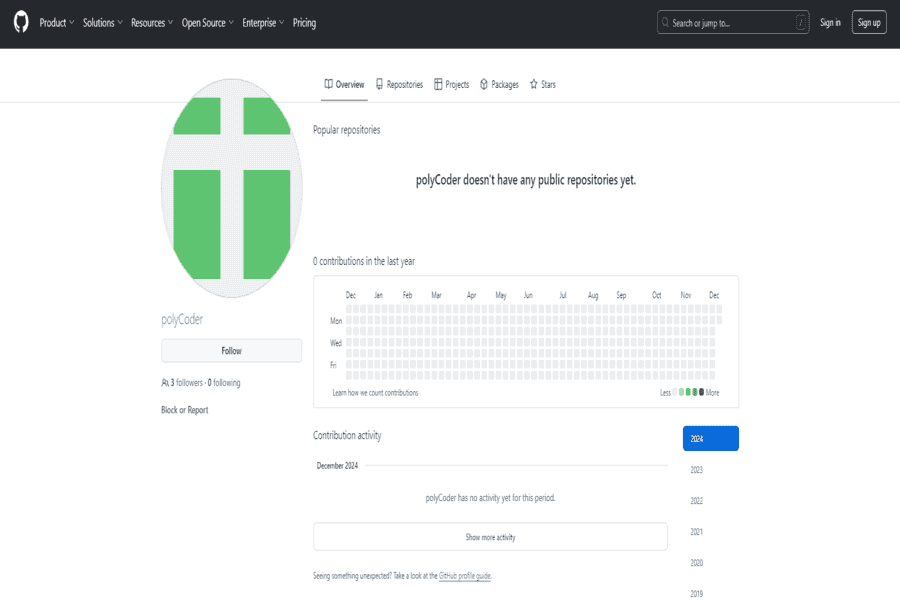
PolyCoder is an AI-based code-completion and generation model designed to work across multiple languages and frameworks, focusing on open-source development.
Pros:
- Open-source and highly customizable.
- Supports various programming languages.
Cons:
- Limited support compared to commercial tools.
- Requires technical knowledge for setup.
Pricing Package:
- Free (open-source).
Ponicode
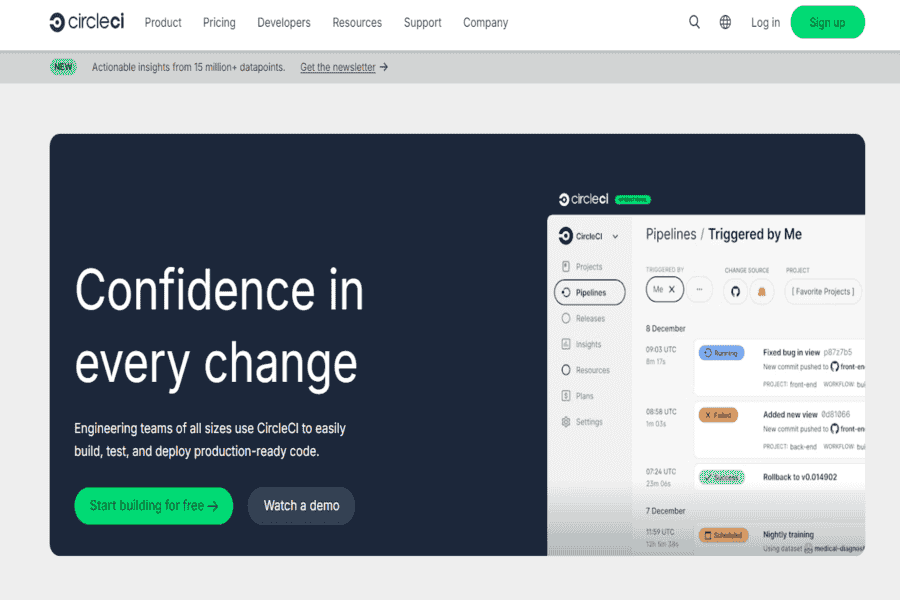
Ponicode is an AI-powered unit testing tool that helps developers generate unit tests with minimal effort, ensuring higher code quality and robustness.
Pros:
- Focuses on automated unit test generation.
- Easy integration with IDEs like VS Code.
Cons:
- I focused primarily on unit testing; there was no code completion.
- Limited language support.
Pricing Package:
- Free trial available; contact for pricing.
Social Media:
Contact Information:
- Email: hello@ponicode.com
Codiga
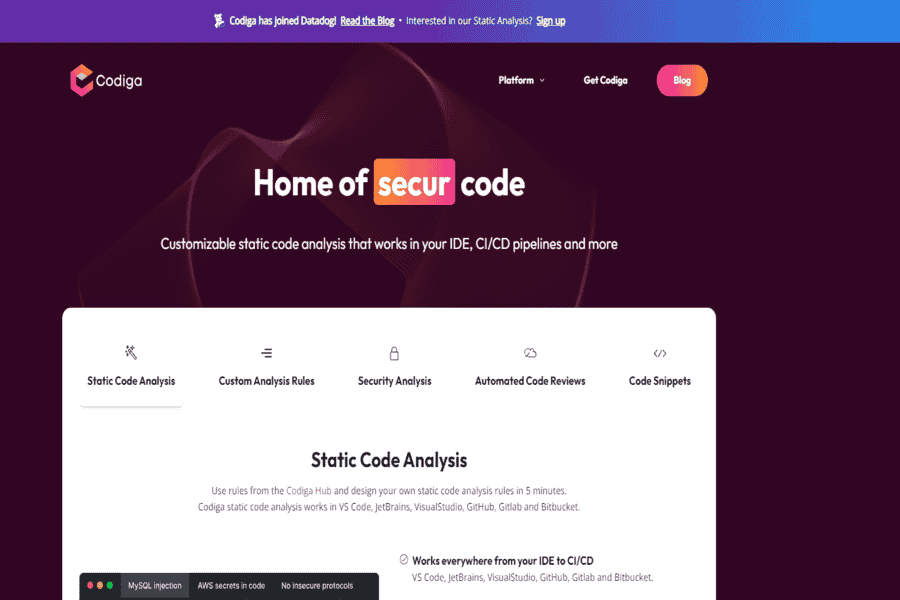
Codiga is an AI-assisted code review tool that analyzes code for quality, security, and performance issues, providing actionable suggestions to developers.
Pros:
- Automated code review for multiple languages.
- Integration with IDEs and Git platforms.
Cons:
- Requires configuration for optimal use.
- Limited free tier.
Pricing Package:
- Free Tier: Available.
- Premium: $14/month per user.
Social Media:
- Twitter: https://twitter.com/codigadev
- LinkedIn: https://www.linkedin.com/company/codigadev
Contact Information:
- Email: contact@codiga.io
CodeT5
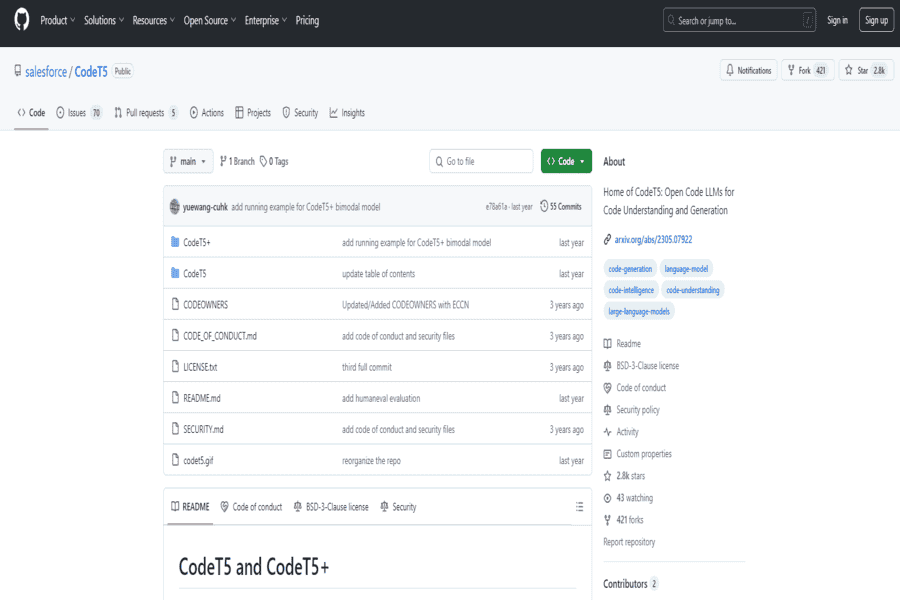
CodeT5 is a transformer-based AI model for code generation and understanding. It supports multiple programming languages developed by Salesforce, making it versatile for various coding tasks such as code completion, summarization, and refactoring.
Pros:
- Supports multiple languages like Python, Java, and JavaScript.
- Open-source, allowing for customization.
- Good for both code generation and understanding.
Cons:
- Requires technical knowledge to deploy and fine-tune.
- Commercial products are more user-friendly.
Pricing Package:
- Free (open-source).
Social Media:
- Twitter: https://twitter.com/salesforce
- LinkedIn: https://www.linkedin.com/company/salesforce
Sourcery
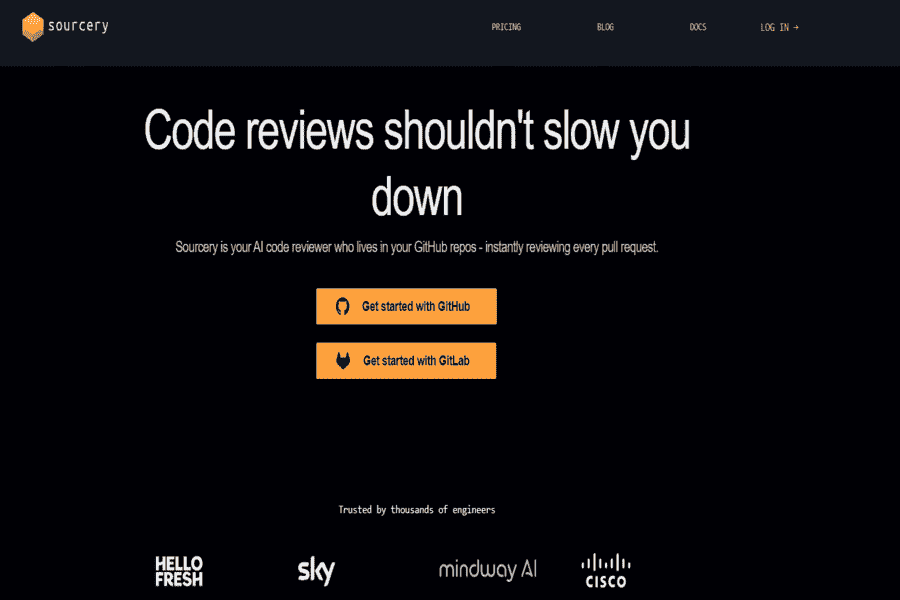
Sourcery is an AI-powered Python code refactoring tool that automatically suggests improvements and optimizations for your code. It works within your IDE and helps developers keep code clean and efficient.
Pros:
- Automatically suggests refactorings to improve code quality.
- Integrates seamlessly with Python IDEs.
- It can be customized to focus on specific code patterns.
Cons:
- Limited to Python code.
- The free version has limited features.
Pricing Package:
- Free: Limited features.
- Pro: $10/month per user.
Social Media:
- Twitter: https://twitter.com/sourcery_ai
- LinkedIn: https://www.linkedin.com/company/sourcery-ai
Contact Information:
- Email: hello@sourcery.ai
Intellibot
Intellibot is an AI-powered test automation platform that assists developers by generating automated test scripts. It focuses on improving quality assurance by automating testing across different platforms and programming languages.
Pros:
- Automates repetitive testing tasks.
- Supports a wide range of languages and tools.
- Provides continuous integration and delivery support.
Cons:
- Requires setup for integration with existing testing tools.
- It was primarily focused on testing, not code generation.
Pricing Package:
- Free Trial: Available.
- Enterprise Pricing: Contact for details.
Social Media:
- Twitter: https://twitter.com/intellibotai
- LinkedIn: https://www.linkedin.com/company/intellibot
Contact Information:
- Email: info@intellibot.ai
WriteSonic Code Generator
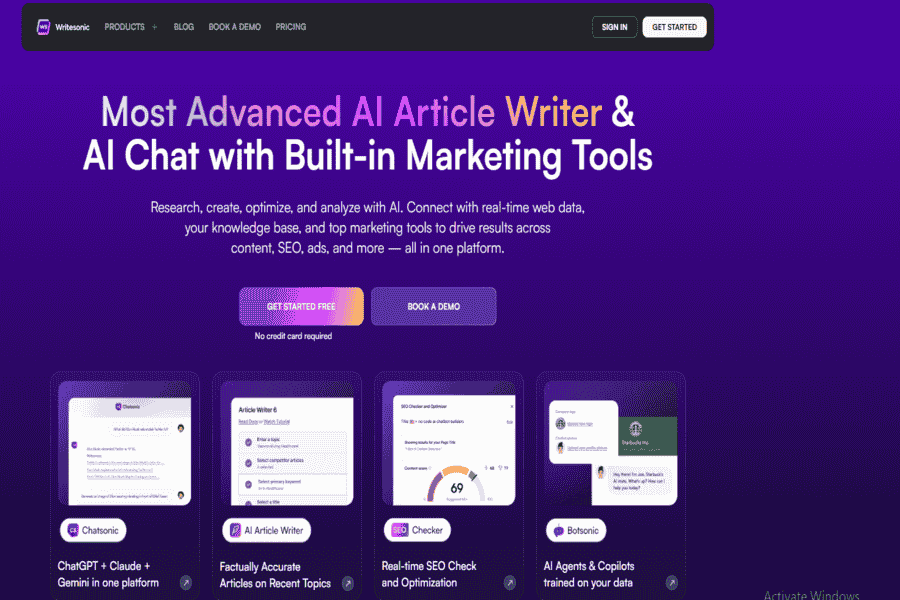
WriteSonic offers a code generation tool that allows developers to generate code snippets using natural language descriptions. It’s geared toward those who want quick solutions or templates for basic coding tasks.
Pros:
- Converts natural language into working code snippets.
- Works with multiple languages and frameworks.
- User-friendly interface for non-developers.
Cons:
- It is less powerful for complex code-generation tasks.
- Limited functionality compared to specialized coding tools.
Pricing Package:
- Free Plan: Limited access.
- Pro Plan: $19/month.
Social Media:
- Twitter: https://twitter.com/writesonic
- LinkedIn: https://www.linkedin.com/company/writesonic
Contact Information:
- Email: support@writesonic.com
Codeium

Codeium is an AI-powered code assistant focused on providing auto-completion, suggestions, and error detection for developers. It works with popular IDEs like VS Code and supports numerous programming languages.
Pros:
- Offers code suggestions and completions.
- Integrates well with major IDEs.
- Supports various languages like Python, Java, JavaScript, and more.
Cons:
- Requires a premium subscription for advanced features.
- It is still developing its support for certain languages and frameworks.
Pricing Package:
- Free: Basic features.
- Pro: $10/month per user.
Social Media:
- Twitter: https://twitter.com/codeium
- LinkedIn: https://www.linkedin.com/company/codeium
Contact Information:
- Email: support@codeium.com
Codeassist
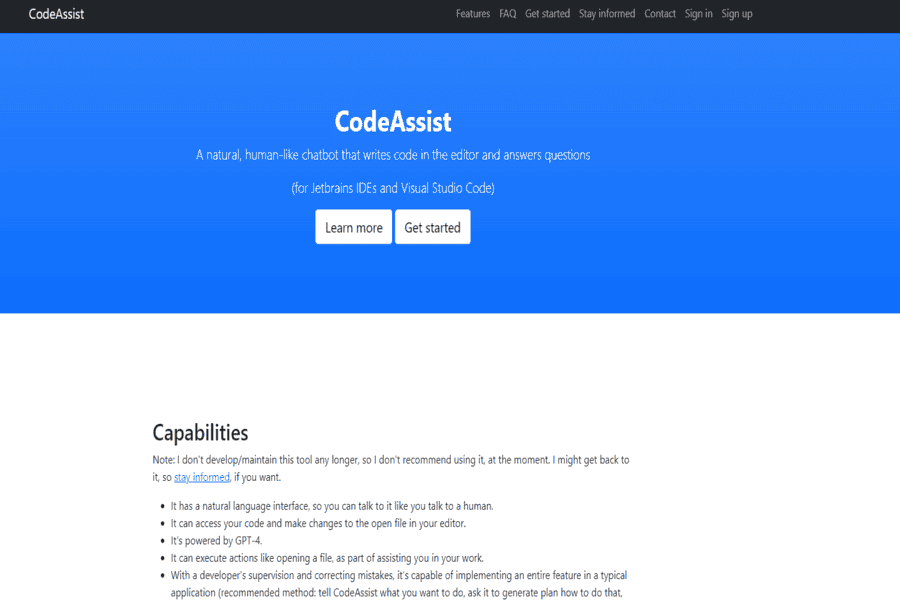
Codeassist is an AI-powered tool designed to help developers generate code snippets, provide code suggestions, and offer refactoring tips. It focuses on improving development speed and productivity.
Pros:
- Quick and efficient code generation.
- Offers refactoring suggestions to improve code quality.
- Compatible with various programming languages.
Cons:
- Limited functionality in more complex projects.
- Primarily designed for code completion rather than full-scale development.
Pricing Package:
- Free: Basic features.
- Pro: $15/month per user.
Social Media:
- Twitter: https://twitter.com/codeassist_ai
- LinkedIn: https://www.linkedin.com/company/codeassist-ai
Contact Information:
- Email: contact@codeassist.ai
CodexAI
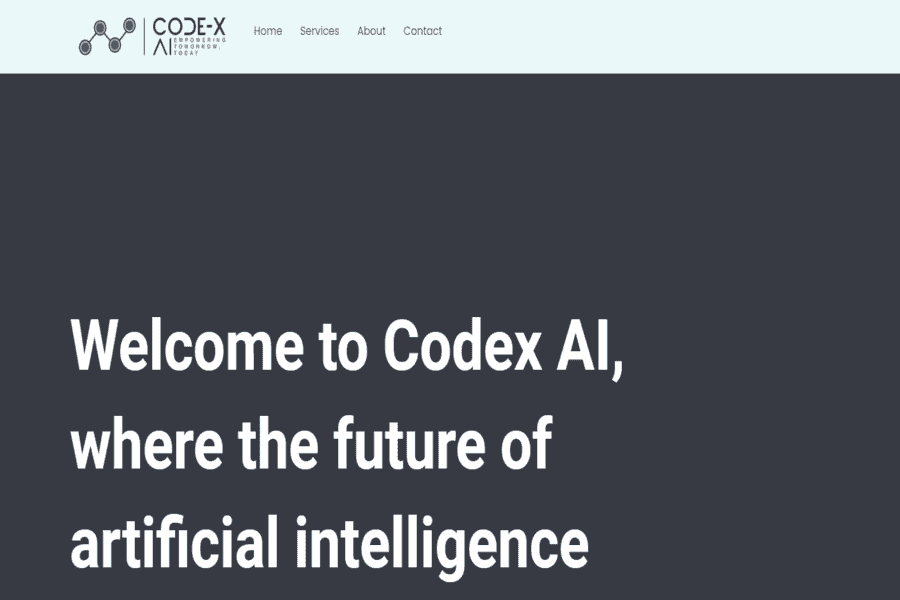
CodexAI provides AI-driven code generation for developers, transforming natural language prompts into code. It’s designed to speed up the development process by interpreting the developer’s intentions.
Pros:
- Converts natural language directly into code.
- Supports multiple languages, including Python, JavaScript, and Go.
- Provides error detection and debugging features.
Cons:
- Needs refinement in complex and context-heavy code generation.
- Limited documentation compared to some other tools.
Pricing Package:
- Free Trial: Available.
- Premium: $30/month per user.
Social Media:
- Twitter: https://twitter.com/codexai
- LinkedIn: https://www.linkedin.com/company/codexai
Contact Information:
- Email: support@codexai.com
AI Code Reviewer
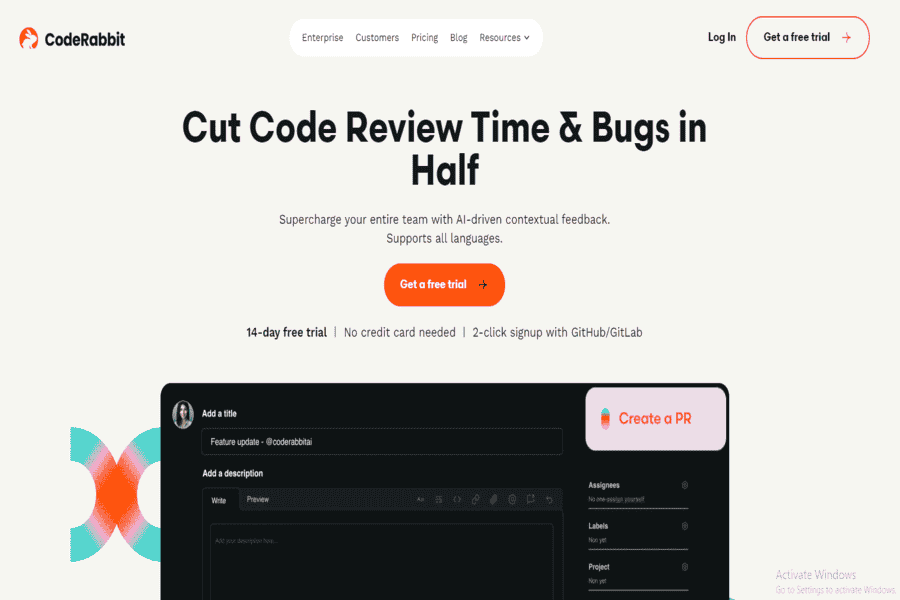
AI Code Reviewer assists developers by analyzing their code and suggesting improvements based on best practices and industry standards. It helps ensure code quality and identifies areas of potential vulnerability.
Pros:
- Focuses on code review and optimization.
- Detects potential security flaws and performance bottlenecks.
- Supports multiple programming languages.
Cons:
- Limited to code review and lacks full generation capabilities.
- Works best with large codebases but can be slower on smaller projects.
Pricing Package:
- Free Tier: Limited access.
- Pro Plan: $25/month per user.
Social Media:
- Twitter: https://twitter.com/aicodereviewer
- LinkedIn: https://www.linkedin.com/company/aicodereviewer
Contact Information:
- Email: support@aicodereviewer.com
QuillBot for Code
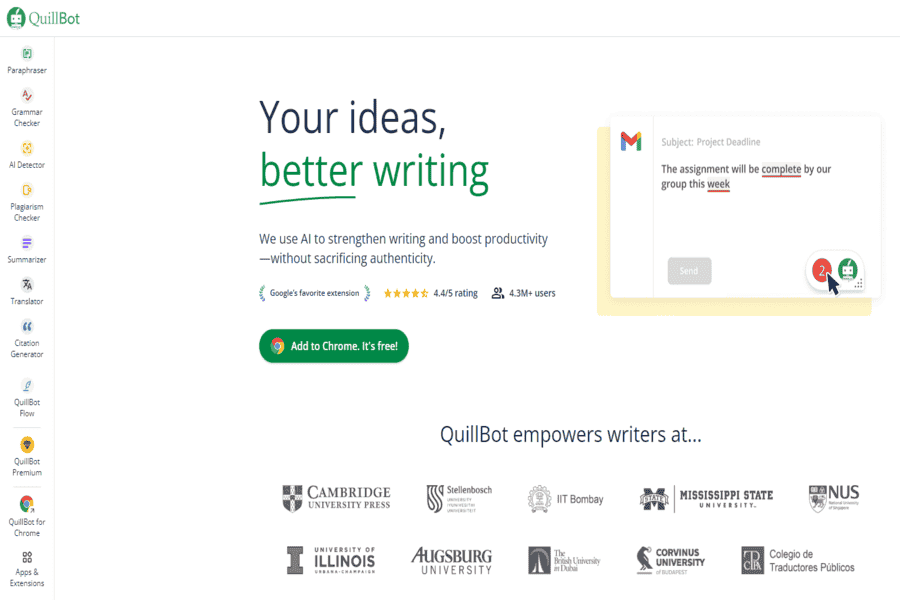
QuillBot, a popular paraphrasing tool, has expanded into code generation. It helps developers generate and optimize code through natural language input, making it easier to turn ideas into functional code quickly.
Pros:
- Simplifies code generation using natural language processing.
- Great for beginners looking to learn and improve coding practices.
- Offers a user-friendly interface.
Cons:
- It is more suitable for simple code tasks, not complex algorithms.
- Limited customization and flexibility for advanced developers.
Pricing Package:
- Free Plan: Basic access.
- Premium: $14.95/month.
Social Media:
- Twitter: https://twitter.com/quillbot
- LinkedIn: https://www.linkedin.com/company/quillbot
Contact Information:
- Email: support@quillbot.com
Autocode
Autocode is an AI-powered code generation platform designed to assist developers in building serverless applications. It lets developers quickly create APIs, automation, and webhooks without writing extensive backend code.
Pros:
- Focuses on serverless applications and webhooks.
- Integrates well with multiple cloud services and APIs.
- Offers pre-built templates to streamline development.
Cons:
- Primarily focused on serverless apps and APIs, not general-purpose code generation.
- Requires an understanding of serverless architecture.
Pricing Package:
- Free Plan: Limited API calls.
- Pro Plan: $10/month per user.
Social Media:
- Twitter: https://twitter.com/autocode
- LinkedIn: https://www.linkedin.com/company/autocode
Contact Information:
- Email: support@autocode.com
Best Practices for Using AI Code Generators
Human Oversight:
Critical Thinking:
Always evaluate the generated code, ensuring it aligns with your requirements and coding standards.
Error Detection:
Review the code for errors, logical inconsistencies, and security vulnerabilities.
Continuous Learning:
Stay Updated:
Keep abreast of the latest advancements in AI code generation and explore new tools and techniques.
Experimentation:
Experiment with different AI code generators to find the best fit for your needs.
Ethical Considerations:
Intellectual Property:
Respect intellectual property rights and avoid using AI tools to plagiarize or create derivative works.
Fair Use:
Use AI tools responsibly and ethically, avoiding misuse or harmful applications.
Security Awareness:
Vulnerability Assessment:
Regularly assess the security implications of using AI-generated code.
Secure Coding Practices:
Adhere to secure coding practices, even when using AI tools.
Input Validation:
Validate user input to prevent injection attacks and other security vulnerabilities.
Effective Collaboration:
Teamwork:
Encourage collaboration between developers and AI tools to foster creativity and innovation.
Knowledge Sharing:
Share insights and best practices related to AI code generation within your team.
Future of AI Code Generation
The future of AI code generation is undeniably bright, with rapid advancements in machine learning and natural language processing driving the evolution of these tools. As we move forward, we expect to see even more sophisticated and powerful AI code generators that will revolutionize software development.
Key Trends Shaping the Future:
Enhanced Natural Language Understanding:
More Intuitive Interaction:
AI code generators will become increasingly adept at understanding complex natural language queries, enabling developers to provide more nuanced instructions.
Contextual Awareness:
These tools will better grasp the context of a specific coding task, leading to more accurate and relevant code suggestions.
Advanced Code Generation Capabilities:
Complex Algorithm Generation:
AI code generators will be capable of generating complex algorithms and data structures, automating tasks that currently require significant human effort.
Automated Testing and Debugging:
These tools will be able to automatically generate test cases and identify potential bugs in the code, improving software quality and reliability.
Increased Integration with Development Tools:
Seamless Workflow:
AI code generators will be tightly integrated with popular IDEs and development workflows, providing real-time assistance and suggestions.
Collaborative Development:
AI tools will facilitate collaboration among developers by suggesting code improvements, identifying potential conflicts, and automating code reviews.
Ethical Considerations and Responsible AI:
Bias Mitigation:
Developers must be mindful of potential biases in AI code generators and take steps to mitigate them.
Transparency and Explainability:
AI models will be designed to be more transparent, allowing developers to understand the rationale behind their suggestions.
Conclusion
AI code generators have the potential to revolutionize the way software is developed, offering significant benefits in terms of productivity, code quality, and innovation. By understanding their capabilities, limitations, and best practices, developers and engineers can harness the power of AI to accelerate their development efforts and create exceptional software.
Coomersu: Revolutionizing E-Commerce Through Community-Centric Commerce 18 Mar 2025, 1:54 am
The e-commerce landscape has undergone remarkable transformations since its inception. From the early days of simple online stores to sophisticated digital marketplaces, the journey has been characterized by constant innovation. Today, we stand at the precipice of another paradigm shift with the emergence of Coomersu – a revolutionary approach that is redefining how we think about online commerce.
Coomersu, short for “Community-Centric Commerce,” represents more than just a new platform or business model; it embodies a fundamental reimagining of the relationship between brands and consumers. By prioritizing community engagement over mere transactions, Coomersu is creating deeper, more meaningful connections that benefit all stakeholders in the commercial ecosystem.
In this comprehensive guide, we’ll explore the nuances of Coomersu, its potential to reshape e-commerce, and why forward-thinking businesses are increasingly embracing this innovative approach.
What is Coomersu?
Coomersu represents a fundamental shift from transaction-focused e-commerce to community-centric commerce. At its core, Coomersu integrates social interactions, collaborative decision-making, and shared experiences into the online shopping process, transforming it from a solitary activity into a collective journey.
Unlike traditional e-commerce platforms that prioritize the individual purchase journey, Coomersu creates an ecosystem where consumers actively participate in:
- Product development and refinement
- Sharing authentic experiences and reviews
- Influencing brand decisions and direction
- Building meaningful connections with like-minded individuals
- Contributing to a collective intelligence that benefits the entire community
This approach recognizes that modern consumers seek more than just products; they desire authentic connections, meaningful involvement, and a sense of belonging. By focusing on these human elements, Coomersu creates a more engaging and satisfying experience that extends far beyond the moment of purchase.
The Evolution of E-Commerce: From Transactions to Communities
The Journey So Far
The evolution of commerce has been marked by several significant transformations:
- Traditional Retail (Pre-1990s): Physical stores dominated, with face-to-face interactions being the norm.
- Early E-Commerce (1990s-2000s): Basic online stores emerged, prioritizing convenience but lacking personalization.
- Advanced E-Commerce (2000s-2010s): Sophisticated platforms with recommendation engines and personalized experiences.
- Social Commerce (2010s-2020s): Integration of social media aspects into shopping experiences.
- Community-Centric Commerce (Present): The emergence of Coomersu and similar approaches that place community at the core.
Why the Shift to Community-Centric Commerce?
Several converging factors have catalyzed this transformation:
- Changing Consumer Expectations: Today’s consumers seek authenticity and meaningful connections with brands.
- Digital Fatigue: People are increasingly tired of impersonal digital experiences.
- Trust Deficit: Traditional advertising has suffered from eroding consumer trust.
- Success of Early Adopters: Platforms like Etsy and Patreon have demonstrated the power of community-driven commerce.
- Technological Advancements: New tools have made community integration more seamless and effective.
This evolution reflects a broader societal shift toward valuing authentic human connections in an increasingly digital world. Coomersu capitalizes on this trend by creating spaces where commerce and community coexist harmoniously.
Core Principles of Coomersu
The community-centric approach of Coomersu is built upon several foundational principles:
1. Collaborative Value Creation
In the Coomersu model, value isn’t simply delivered from brand to consumer; it’s co-created through collaborative efforts. Businesses and customers work together to develop products, services, and experiences that better meet actual needs and preferences.
2. Transparent and Authentic Engagement
Transparency forms the bedrock of trust in Coomersu communities. This includes:
- Open communication about business practices
- Clear explanations of how consumer data is used
- Honest discussions about product limitations and challenges
- Genuine responses to feedback and criticism
3. Community Empowerment
Coomersu platforms actively empower community members by:
- Providing tools for collaboration and connection
- Recognizing and rewarding valuable contributions
- Giving members a genuine voice in decision-making processes
- Creating structures that facilitate meaningful interactions
4. Long-term Relationship Building
Rather than focusing solely on short-term sales, Coomersu prioritizes building enduring relationships between brands and consumers. This long-term perspective fosters loyalty and sustained engagement.
5. Shared Purpose and Identity
Successful Coomersu communities often coalesce around shared values, interests, or goals. This common ground creates a sense of belonging and collective identity that strengthens community bonds.
These principles work in concert to create vibrant, engaged communities where commerce becomes a natural extension of connection rather than the sole focus of interaction.
How Coomersu Works: Key Features and Functionalities
Coomersu platforms typically incorporate a range of tools and features designed to facilitate community engagement and collaborative commerce:
Discussion Forums and Community Spaces
These digital gathering places allow community members to:
- Exchange ideas and opinions
- Ask questions and share knowledge
- Discuss products and experiences
- Connect with like-minded individuals
User-Generated Content Systems
Coomersu platforms encourage members to create and share:
- Detailed product reviews and experiences
- Tutorial videos and how-to guides
- Creative uses of products
- Personal stories and testimonials
Collaborative Product Development Tools
These features enable community participation in:
- Voting on potential new product management or features
- Providing feedback on prototypes and designs
- Suggesting improvements or modifications
- Testing beta versions and providing input
Social Shopping Features
These tools enhance the communal aspects of shopping by allowing users to:
- Shop together virtually
- Share recommendations and discoveries
- Create and explore curated collections
- Participate in group buying opportunities
Customizable Solutions
Coomersu platforms typically offer flexible options for:
- Adjustable workflows tailored to specific needs
- Modular functionalities that can be added as needed
- Integration with third-party tools and services
- Personalized user experiences
Robust Security Measures
To protect community members and their data, Coomersu platforms implement:
- Advanced encryption protocols
- Regular security audits and updates
- Real-time threat detection systems
- Transparent data protection policies
These features work together to create a seamless, engaging experience that merges the best aspects of social platforms with the functionality of e-commerce systems.
Benefits for Businesses: Beyond Traditional ROI
Adopting a Coomersu approach offers businesses numerous advantages that extend beyond conventional metrics:
Enhanced Customer Loyalty
By fostering genuine community connections, businesses create stronger emotional bonds with customers. These deeper relationships translate to:
- Higher customer retention rates
- Increased lifetime customer value
- Greater resilience against competitive pressures
- More stable revenue streams
Rich Consumer Insights
The collaborative nature of Coomersu generates valuable data and insights:
- Direct feedback on products and services
- Emerging trends and preferences
- Unmet needs and pain points
- Creative uses and applications
User-Generated Content and Advocacy
Active communities naturally produce content and word-of-mouth promotion:
- Authentic reviews and testimonials
- Creative product demonstrations
- Social media mentions and shares
- Personal recommendations to friends and family
Reduced Marketing Costs
Community-driven approaches can significantly lower customer acquisition costs:
- Organic word-of-mouth reduces paid advertising needs
- User-generated content supplements marketing materials
- Community members often become brand advocates
- Higher conversion rates from warm leads
Accelerated Innovation
The collective intelligence of the community accelerates product development:
- Faster identification of improvement opportunities
- More diverse perspectives and ideas
- Real-time feedback on new concepts
- Reduced risk of market misalignment
These benefits create a virtuous cycle where stronger communities lead to better products, which in turn attract more community members.
Consumer Advantages: The New Shopping Experience
The Coomersu model delivers significant benefits to consumers as well:
Personalized Shopping Experience
Rather than being passive recipients, consumers become active participants:
- Influence on product development
- Ability to share preferences and needs
- Access to products that better match requirements
- More tailored recommendations and discoveries
Sense of Belonging
Coomersu creates spaces where consumers feel connected:
- Membership in communities of like-minded individuals
- Shared experiences and mutual support
- Recognition for contributions and expertise
- Ongoing relationships rather than one-off transactions
More Informed Purchasing Decisions
Community insights help consumers make better choices:
- Access to authentic reviews from trusted sources
- Detailed use cases and experiences
- Tips and advice from experienced users
- Transparent information about products and services
Value Beyond the Purchase
The community aspect adds value that extends beyond the transaction:
- Learning opportunities and skill development
- Problem-solving assistance and support
- Recognition for expertise and contributions
- Social connections and networking possibilities
Voice and Influence
Consumers gain genuine influence over the brands they support:
- Direct channels for feedback and suggestions
- Voting rights on product decisions
- Recognition of contributions
- Collaborative relationships with brands
These advantages create a more satisfying, engaging shopping experience that addresses broader human needs for connection and participation.
Implementing Coomersu: A Strategic Approach
For businesses looking to embrace the Coomersu model, a thoughtful, strategic approach is essential:
1. Assessment and Preparation
Before diving in, organizations should:
- Evaluate their readiness for community engagement
- Identify potential community segments and their needs
- Assess existing infrastructure and capabilities
- Define clear objectives and success metrics
2. Platform Selection and Development
Choosing or building the right platform involves:
- Identifying essential features and functionalities
- Evaluating existing solutions versus custom development
- Ensuring scalability and flexibility
- Prioritizing user experience and accessibility
3. Community Cultivation
Building a thriving community requires:
- Setting clear community guidelines and values
- Recruiting initial members and ambassadors
- Creating valuable content and discussion prompts
- Facilitating meaningful connections between members
4. Integration with Business Processes
Successful implementation means:
- Aligning internal teams around community goals
- Creating workflows for community input integration
- Training staff for community engagement
- Establishing feedback loops for continuous improvement
5. Measurement and Optimization
Ongoing success depends on:
- Tracking relevant metrics and KPIs
- Gathering qualitative feedback from community members
- Identifying opportunities for enhancement
- Regularly reassessing and adjusting strategies
This methodical approach helps businesses navigate the transition to community-centric commerce while maximizing the potential benefits.
Case Studies: Successful Coomersu Implementations
Several forward-thinking organizations have already embraced aspects of the Coomersu model with impressive results:
Etsy: Marketplace Built on Community
Etsy has successfully:
- Created a thriving community of artisans and buyers
- Implemented forums and teams for knowledge sharing
- Developed seller education and support networks
- Built trust through authentic connections
Results: Sustained growth and resilience in a competitive market, with loyal seller and buyer communities.
Patreon: Direct Creator Support
Patreon exemplifies community commerce by:
- Enabling direct relationships between creators and supporters
- Facilitating exclusive content and experiences
- Creating sustainable funding models for creative work
- Building communities around shared interests
Results: Revolutionary new economic model for creators that bypasses traditional gatekeepers.
Glossier: From Blog to Beauty Empire
Glossier grew from a beauty blog to a billion-dollar company by:
- Developing products based on community feedback
- Making customers feel like co-creators
- Using user-generated content extensively
- Maintaining authentic community engagement
Results: Rapid growth and fierce customer loyalty in the highly competitive beauty industry.
Lego Ideas: Collaborative Product Development
Lego’s community platform allows fans to:
- Submit product ideas for consideration
- Vote on concepts from other community members
- Receive recognition and royalties for successful ideas
- Participate in the evolution of the brand
Results: Continuous product innovation and deep customer engagement with minimal R&D risk.
These examples demonstrate the versatility and effectiveness of the Coomersu approach across different industries and business models.
Challenges and Limitations of Coomersu
Despite its potential, the Coomersu model presents several challenges that businesses must navigate:
Finding the Right Balance
One of the greatest challenges is striking the appropriate balance between:
- Community interests and business objectives
- Openness and intellectual property protection
- Structured guidance and organic community development
- Maintaining authenticity while driving commercial success
Data Privacy and Ethical Considerations
The community-focused approach raises important questions about:
- Protection of user data and privacy
- Transparent use of community contributions
- Fair attribution and compensation for ideas
- Responsible handling of sensitive information
Resource Intensity
Building and maintaining vibrant communities requires significant resources:
- Dedicated community management personnel
- Ongoing content creation and facilitation
- Technical infrastructure and platform maintenance
- Continuous engagement and responsiveness
Scale and Growth Management
As communities grow, new challenges emerge:
- Maintaining intimacy and connection at scale
- Preserving core values and culture
- Managing diverse and sometimes conflicting needs
- Preventing trolling and negative behaviors
Measuring Success
Traditional metrics often fail to capture the full value of community:
- Long-term relationship values versus short-term sales
- Qualitative benefits that resist quantification
- Attribution challenges for community-influenced purchases
- New KPIs needed for community health assessment
Understanding these challenges is crucial for businesses considering the Coomersu approach.
Overcoming Coomersu Challenges: Best Practices
Successful practitioners have developed strategies to address the common challenges of community-centric commerce:
Transparent Communication
Establish trust through:
- Clear policies about how community input is used
- Regular updates on progress and developments
- Honest acknowledgment of limitations and challenges
- Direct responses to community concerns and questions
Balanced Value Exchange
Ensure mutual benefit through:
- Recognition programs for valuable contributions
- Exclusive access or benefits for community members
- Clear articulation of how input influences decisions
- Tangible demonstrations of community impact
Strategic Resource Allocation
Optimize resource use by:
- Identifying high-value community activities
- Using technology to streamline management tasks
- Training team members across departments
- Starting with focused initiatives before scaling
Community Governance Frameworks
Maintain healthy communities with:
- Clear guidelines and expectations
- Graduated moderation approaches
- Community-led governance where appropriate
- Systems for managing conflicts and challenges
Holistic Measurement Approaches
Develop comprehensive evaluation methods:
- Balanced scorecards with multiple metrics
- Qualitative assessment frameworks
- Longitudinal studies of community impact
- Integration of community health and business outcomes
These practices help organizations maximize the benefits of the Coomersu approach while minimizing potential drawbacks.
Future Trends: Where Coomersu Is Heading
The evolution of Coomersu continues, with several emerging trends shaping its future:
AI and Personalization
Artificial intelligence is enhancing community experiences through:
- Personalized content and connection recommendations
- Automated moderation and community management
- Analysis of community sentiment and trends
- Customized product suggestions based on community data
Immersive Technologies
The rise of AR, VR, and the metaverse promises:
- Virtual community spaces for more immersive interaction
- Enhanced collaborative design and visualization
- Shared virtual shopping experiences
- New forms of community-created content
Tokenization and Community Ownership
Blockchain technologies are enabling:
- Community ownership stakes in brands and platforms
- Tokenized rewards for contributions and engagement
- Transparent governance through decentralized mechanisms
- New models for value sharing between brands and communities
Integration of Physical and Digital
The boundaries between online and offline communities are blurring with:
- Pop-up events and local meetups
- QR-enabled physical products linking to digital communities
- Location-based community features
- Hybrid experiences that combine digital and physical elements
Sustainability and Purpose
Communities are increasingly coalescing around:
- Shared environmental and social values
- Transparent supply chains and ethical practices
- Collective impact initiatives
- Purpose-driven commerce that addresses global challenges
These trends suggest that Coomersu will continue to evolve, becoming an increasingly integral part of the commercial landscape.
Conclusion: Is Coomersu the Future of E-Commerce?
As we assess the trajectory of online commerce, the evidence strongly suggests that Coomersu represents not just a passing trend but a fundamental evolution in how businesses and consumers interact in the digital age.
The shift toward community-centric commerce reflects deeper societal changes:
- The growing desire for authentic connection in an increasingly digital world
- Eroding trust in traditional marketing and top-down communication
- The proven success of early community-focused platforms
- Technological advancements that make community engagement more seamless
While traditional e-commerce won’t disappear overnight, the integration of community elements appears inevitable for brands seeking sustained relevance and growth. The question is not whether businesses should embrace community-centric approaches, but how quickly and effectively they can do so.
Forward-thinking organizations are already incorporating Coomersu principles into their strategies, recognizing that the future belongs to brands that build genuine connections with their customers. Those who successfully navigate this transition will likely find themselves with more loyal customers, richer insights, and stronger competitive positioning.
In the final analysis, Coomersu isn’t simply a new way to sell products—it’s a more human way to conduct commerce, one that acknowledges and addresses our fundamental needs for connection, contribution, and community. And that makes it not just the future of e-commerce, but a better future for commerce as a whole.
FAQs About Coomersu
What makes Coomersu different from traditional e-commerce?
While traditional e-commerce focuses primarily on facilitating transactions, Coomersu prioritizes building communities and fostering engagement. It transforms shopping from a solitary activity into a collaborative experience where consumers actively participate in product development, share experiences, and connect with like-minded individuals.
Is Coomersu suitable for all types of businesses?
While the principles of community-centric commerce can benefit many organizations, the specific implementation may vary. Businesses with products that inspire passion or solve significant problems often find the greatest success with Coomersu approaches. However, even more utilitarian products can benefit from community elements that enhance the customer experience.
How does Coomersu improve the shopping experience for consumers?
Coomersu enhances the shopping experience by giving consumers a voice in product development, connecting them with like-minded individuals, providing trusted recommendations from community members, and creating value beyond the purchase itself through knowledge sharing and relationship building.
Can small businesses effectively implement Coomersu strategies?
Absolutely. In fact, small businesses often have advantages in implementing Coomersu approaches due to their agility, authentic voice, and ability to provide personalized attention. Many successful community-centric brands started as small operations that grew alongside their communities.
What technologies are essential for implementing a Coomersu approach?
While sophisticated platforms can enhance the Coomersu experience, the fundamental requirement is technology that facilitates communication and collaboration. This could range from simple forum software and social media groups to custom-built community platforms with advanced features, depending on the business’s specific needs and resources.
How do you measure success in a Coomersu model?
Success in community-centric commerce extends beyond traditional metrics like conversion rates and revenue. Important indicators include community growth and engagement levels, user-generated content volume and quality, customer retention and lifetime value, and the impact of community feedback on product development and business decisions.
What’s the future of Coomersu as technology continues to evolve?
Emerging technologies like AI, AR/VR, blockchain, and the metaverse are opening new possibilities for community engagement and collaborative commerce. These innovations will likely make community experiences more immersive, personalized, and integrated across digital and physical spaces, further enhancing the value of the Coomersu approach.
Top AI Marketing Tools ( What You Need to Know in 2025) 7 Mar 2025, 12:29 am
Quick Summary: AI Marketing tools are a great investment for businesses to give wings to marketing practices. From Jasper.AI to Surfer SEO, AI marketing tools are transforming businesses. If you struggle with the choice, the blog is here. Read the blog to open up Top AI Marketing Tools in 2025.
Artificial Intelligence is shaping the business world and has entered in every business operations and marketing is no different. Artificial Intelligence is gaming changing advancements that fastens the marketing.
As AI advances, various AI marketing tools have been added to the market to transform the face of marketing. From interacting with customers to creating videos, AI marketing tools stand strong at bringing marketing strategies to life.
With AI growing, you cannot miss out on leveraging AI marketing tools to capitalize on business and gain leads. Don’t believe words? Witness it with real time numbers. According to reports, the AI market is set to grow $2025 billion by 2030. To make the most of the impressive figures, businesses need to play the best bet with AI marketing tools dominating in 2025.
With a long list of tools available, businesses must count on the best to witness results. If you fall short of choosing the top AI marketing tools, keep reading to uncover the list.
Useful and Trending AI Marketing Tools in 2025
1) Brand24
Brand24 tops the list of best AI marketing tools in 2025 with its capabilities to give life to a business reputation. With Brand24 to the rescue, businesses can keep a close eye on positive and negative approaches to their brand.
This helps businesses to address actual concerns with the product and take measures to turn them into selling points. This is what makes Brand24 tops the list and upper hands for businesses marketing campaigns.
Brand24 is a useful tool for businesses to build on their reputation and get the best in marketing. Get started now with Brand24 and build on better business image.
Key features
- It allows businesses to keep close eye on business image across the web
- This tool allows businesses to capitalize on marketing strategies and address feedback
- It holds data tracking features to understand the end user and increase conversions
Pricing
| Plan | Cost | Free Trial |
| Individual | $79/month (Billed annually) | 14 days Free Trial |
| Team | $149/month (Billed annually) | 14 days Free Trial |
| Pro | $199/month (Billed annually) | 14 days Free Trial |
| Enterprise | $399/month (Billed annually) | 14 days Free Trial |
2) Manychat
ManyChat is among the popular AI marketing tools for businesses to automate sending marketing and conversion messages. This AI tool uses advanced AI algorithm techniques to create bots for automating messages. As a result, businesses can enjoy better customer interactions.
With the best use of business bots, ManyChat is the perfect solution to pitch sales and advertise to boost revenue and growth.
By utilizing machine learning and AI, ManyChat AI marketing tools generate bots that ease customer interaction with the brand.
Key features
- This allows businesses to send messages to numerous people without bragging a lot of time
- It comes with capabilities and features to track metrics and collect customer data to boost customer interactions
- Creates relationships with customers through the buying process, establishing trust.
Pricing
| Plan | Cost |
| Free | $0/month (Limited access and no hidden charge |
| Pro | $15/month |
| Premium | Custom pricing. Contact sales team for better information on pricing |
3) Active Campaign
Active Campaign is among the most impressive tools for all businesses to set the email campaign to success. This online tool allows businesses to capitalize on marketing campaigns and pitch end users that builds growth.
With Active campaign to the rescue, no long you need to run under the bush to implement the marketing campaign. With Active Campaign, business owners no longer need to compromise on email automation. This tool encourages market automation and allows businesses to facilitate customer experience at a touch. As a result, you get better ROI.
You can create a comprehensive product development strategy with the help of an active campaign. If you are looking to announce your product launch or keep customers intact with the brand, Active Campaign hits the show.
Key features
- ActiveCampaign interactive features and templates allow you to close better deals and automate the sales process.
- It comes with email testing features that make optimizing emails and turning customers easy for the lead generation team.
- It offers you a dashboard to dig into the performance of email marketing campaigns and take a step towards better results.
Pricing
| Plan | Cost |
| Lite | $29/month (Billed annually) |
| Plus | $49/month (Billed annually) |
| Professional | $149/month (Billed annually) |
| Enterprise | $259/month (Billed annually) |
4) Synthesia
With audiovisual content setting the trend in 2025, Synthesia comes in to back up with generating audiovisual content. With this ultimate AI marketing tool, businesses take video creation quality a step ahead.
This allows businesses to make the best use of text prompts to generate fascinating videos that show impressive results. Whether you want to generate advertisement videos or product launches, Synthesia never disappoints.
Key features
- This features machine learning to ease the high-quality video creation at a click.
- It holds lots for creating long-form videos for marketing campaigns.
- It comes packed with multi-lingual features and translations to turn videos into their native language.
Pricing
| Plan | Cost |
| Starter | $22/month (Billed annually) |
| Creator | $67/month (Billed annually) |
| Enterprise | Custom pricing. Contact support team for customized pricing |
5) Jasper AI
Jasper AI, the leading name in AI tools, deserves a presence in the list to create impressive pieces. This amazing AI marketing tool navigates you to create amazing content copies in the frame of seconds.
With Jasper AI, content and copywriter will have a great time creating ad content, social media posts and much more. Whether you need hard hiting words for your pitch or need impressive copies for ads, Jasper AI fills all gaps.
By counting on Jasper AI, you can end your hassle in creating SEO friendly pieces as tool will do the needful. Turn to JasperAI and get ready to write an impressive email that counts and content that ranks.
Key features
- JasperAI offers impressive features to create cutting-edge content on the go.
- It allows you to draft top-notch SEO-friendly and social media pieces that draw attention.
- It provides you with numerous copywriting templates to write catchy marketing copies.
Pricing
| Plan | Cost | Free Trial |
| Pro | $59/month (Billed annually) | 7 day Free Trial |
| Creator | $39/month (Billed annually) | 7 day Free Trial |
| Business | Custom pricing. Contact support team for customized pricing |
Conclusion
The top AI marketing tools in the 2025 list are here to dominate marketing and serve potential leads. Each tool mentioned holds power to change the game for businesses. It’s up to businesses and requirements to implement the tool as per convenience. Start implementing the potential of AI marketing tools and strengthen marketing practices.
How to Revert to Character AI Old Version in 2025 6 Mar 2025, 2:14 am
Recent updates and changes can often be frustrating for long-time enthusiasts of Character AI old platforms, especially if you’re used to certain features that have now been modified or removed. Whether you’re nostalgic for the classic user interface or miss specific functionalities, reverting to an older version can seem tricky.
This guide aims to help you navigate the process of reverting to the old Character AI platform, providing practical tips, step-by-step instructions, and alternative solutions to enhance your AI experience. Discover how you can seamlessly access older versions, while also exploring useful SaaS tools to boost productivity. Explore more about Character AI features and keep reading for detailed insights.
Why Do Users Want to Revert Character AI Old Version?
Character AI Old tools have undergone several updates that, while beneficial for some, have disrupted the experience for others. Users accustomed to the original interface or specific features often find newer updates confusing or cumbersome.
Some common reasons users might want to revert include:
- User Interface Changes: The new layout might not be as intuitive for long-time users.
- Feature Removal: Updates sometimes remove popular functionalities, leaving users looking for alternatives.
- Performance Issues: Older versions may run better on older devices or systems, especially for those using lower-end hardware.
Understanding how to navigate these changes and revert to an older version can help you restore your preferred user experience.
Is It Possible to Revert to old Character AI version?
The short answer is: Yes, but there are a few caveats. Reverting to an older version of Character AI may require some technical know-how, such as downloading an APK file for mobile users or using browser extensions for desktop users. However, there are also straightforward solutions that don’t require much technical expertise.
Method 1: Downloading an Older APK Version
For Android users, downloading an older APK (Android Package Kit) is one of the most effective ways to revert to a previous version of an app. Here’s how you can do it:
- Search for a reliable source to download the previous version’s APK file. Websites like APKMirror are generally safe and reliable.
- Enable downloads from unknown sources in your device settings.
- Install the APK file and restart your device. Be aware that using outdated versions can expose your device to security vulnerabilities.
Method 2: Using Browser Extensions
If you’re accessing Character AI old on a desktop, using browser extensions to restore the old interface is an option. Tools like Stylus or Tampermonkey can be used to modify the site’s CSS and JavaScript to mimic the older version.
Additional Tips for Enhancing Your Character AI Experience
- Clear your browser cache regularly to ensure optimal performance. Disable browser extensions that might interfere with Character AI’s functionality.
- Consider using a VPN if you experience region-specific restrictions.
SaaS Tools to Boost Your Productivity
While exploring ways to optimize your old Character AI experience, it’s also worth considering other SaaS tools that can enhance your workflow. Here are some SaaS platforms that might be useful:
- Zapier: Automate tasks by integrating different apps and services.
- Trello: Perfect for organizing tasks and collaborating with teams.
- Grammarly: An AI-powered writing assistant that helps improve your writing style.
- Notion: A versatile tool for note-taking, project management, and database creation.
- Slack: Enhance team communication and collaboration with Slack’s messaging platform.
- Ahrefs: Improve your SEO strategy with robust analytics and keyword research.
- Canva: A design tool that simplifies content creation for social media, blogs, and more.
- FreshBooks: Manage your invoicing, expenses, and accounting needs.
- HubSpot: A comprehensive tool for marketing automation, sales, and CRM.
Conclusion
Navigating updates on platforms like Character AI can be challenging, especially when you’re used to a particular interface or set of features. Reverting to an older version can help restore your productivity and comfort. By following the methods outlined above, you can continue enjoying the Character AI experience you’re familiar with. Additionally, exploring SaaS tools can further optimize your workflow, providing solutions that cater to both personal and professional needs.
Page processed in 2.583 seconds.
Powered by SimplePie 1.3.1, Build 20121030175403. Run the SimplePie Compatibility Test. SimplePie is © 2004–2025, Ryan Parman and Geoffrey Sneddon, and licensed under the BSD License.
